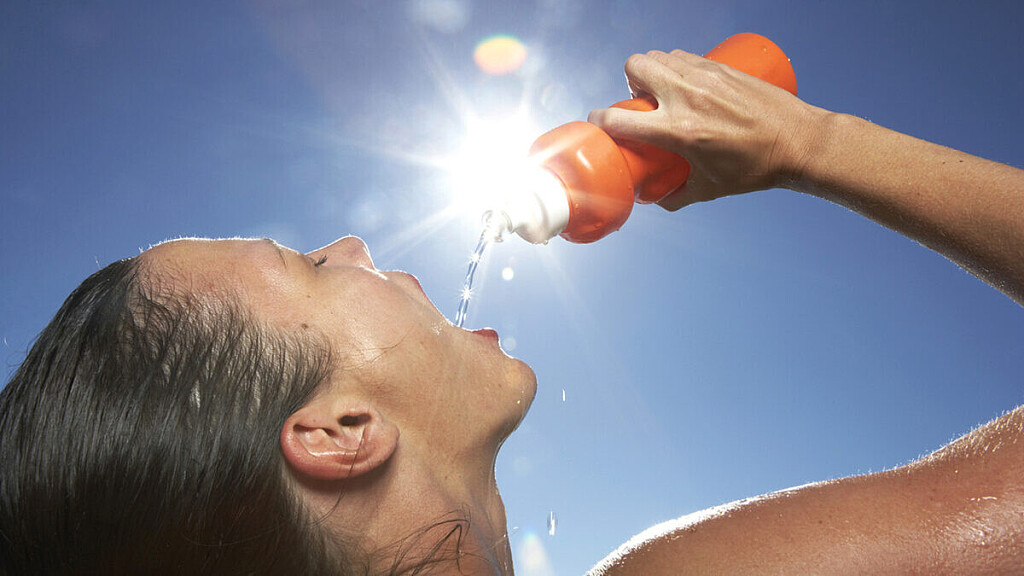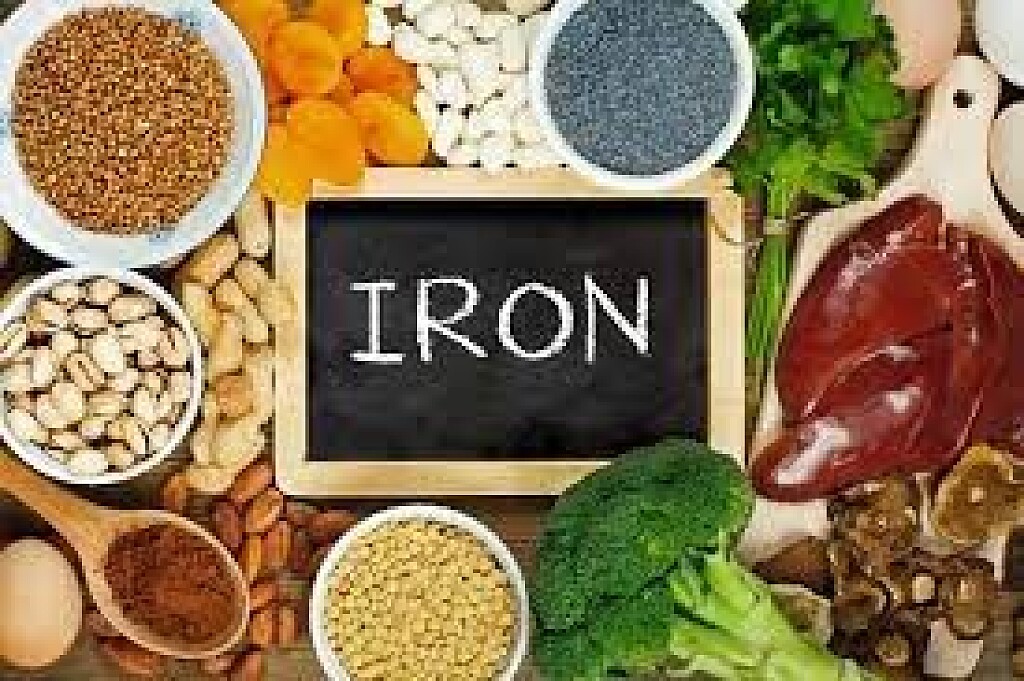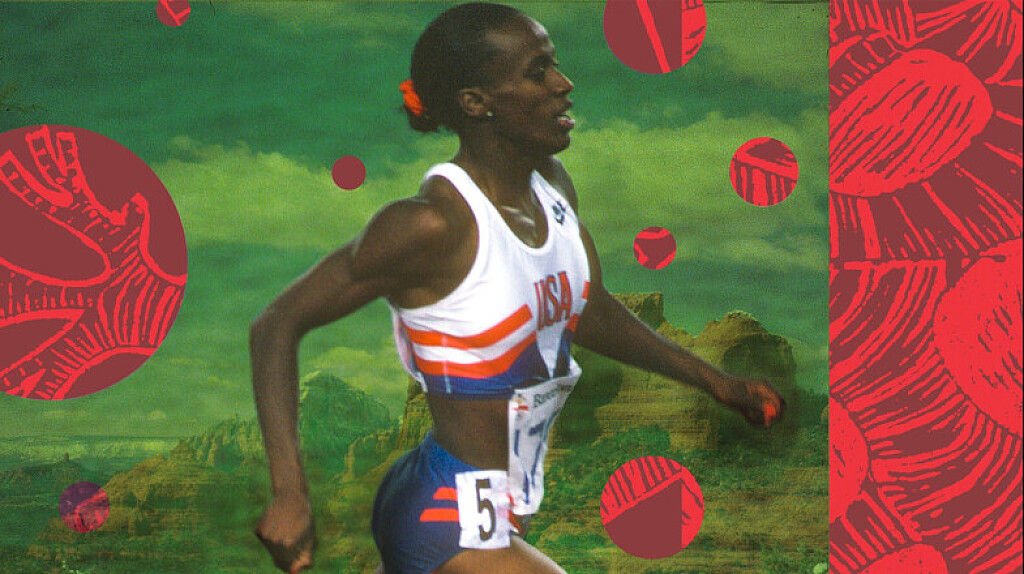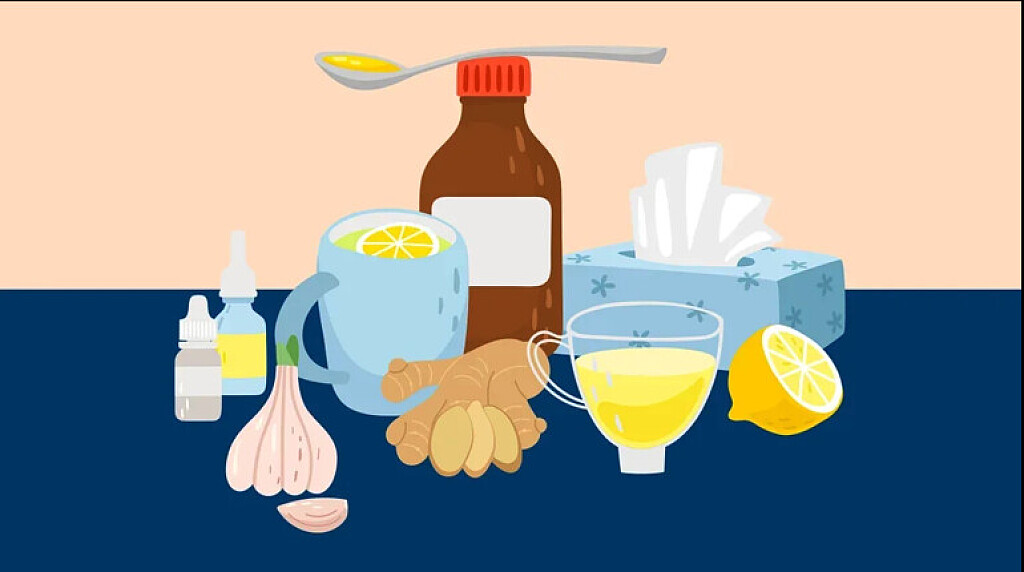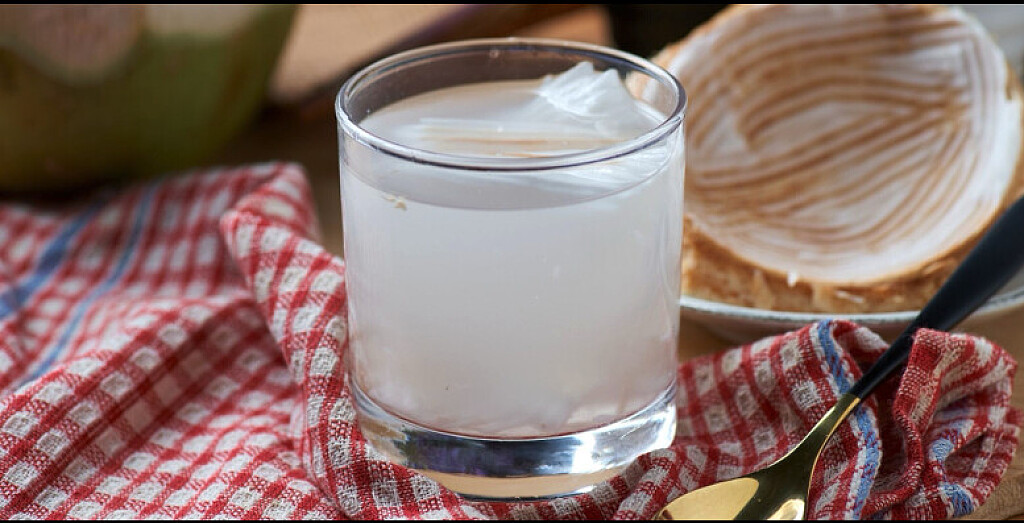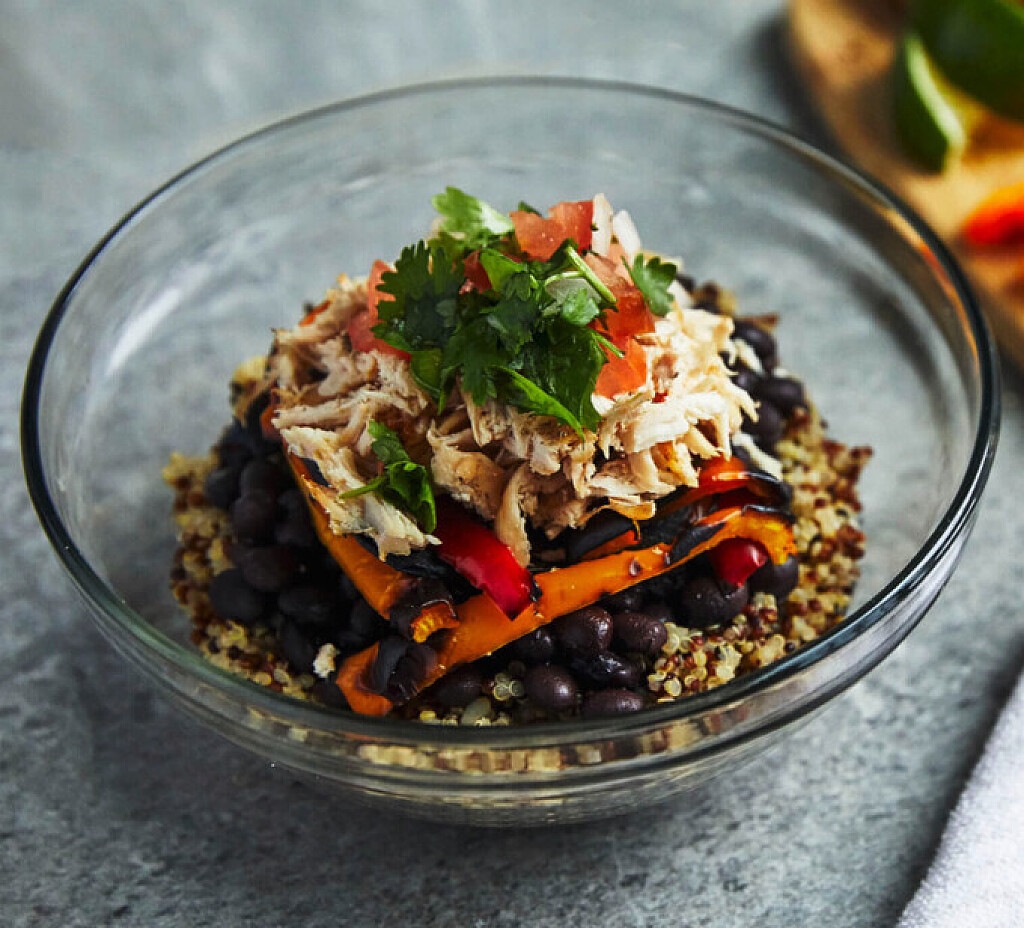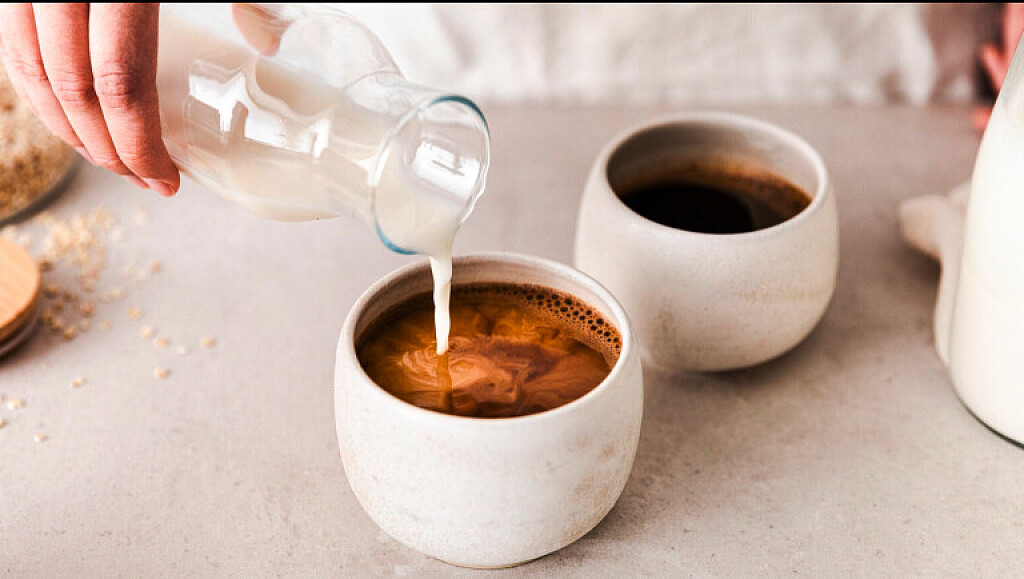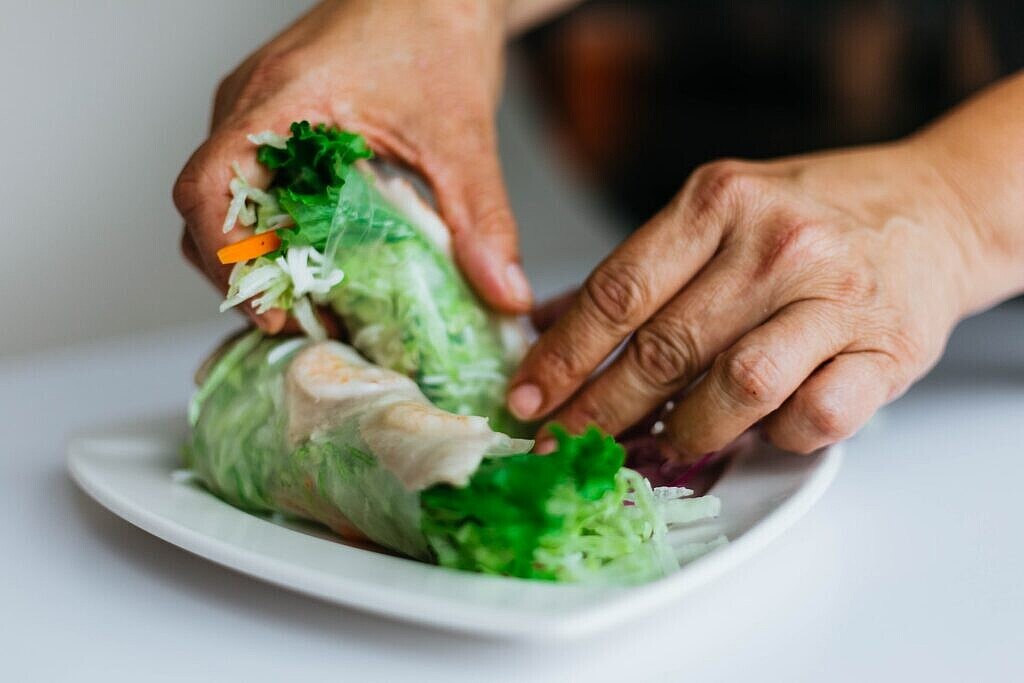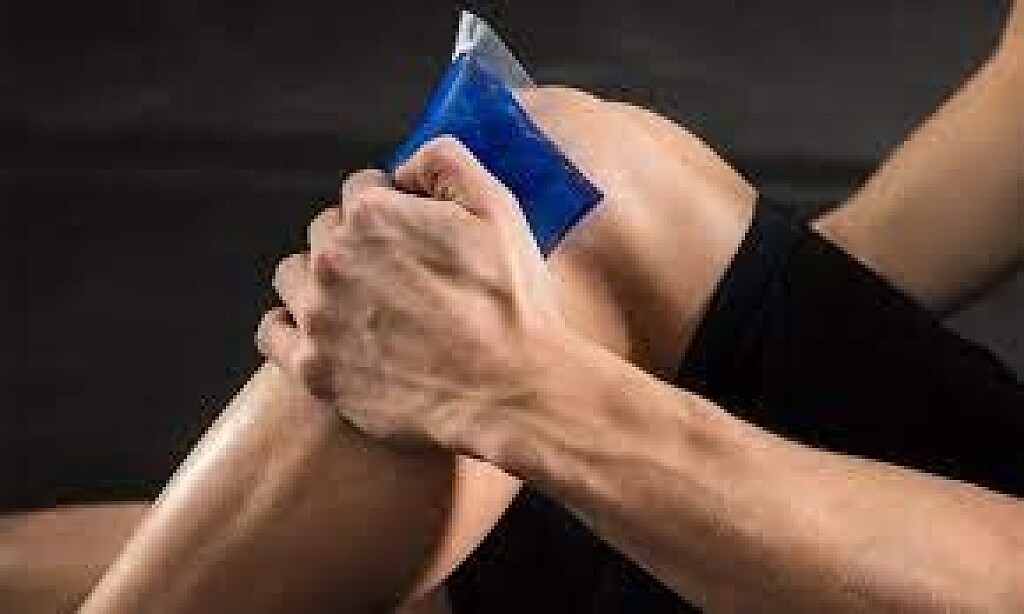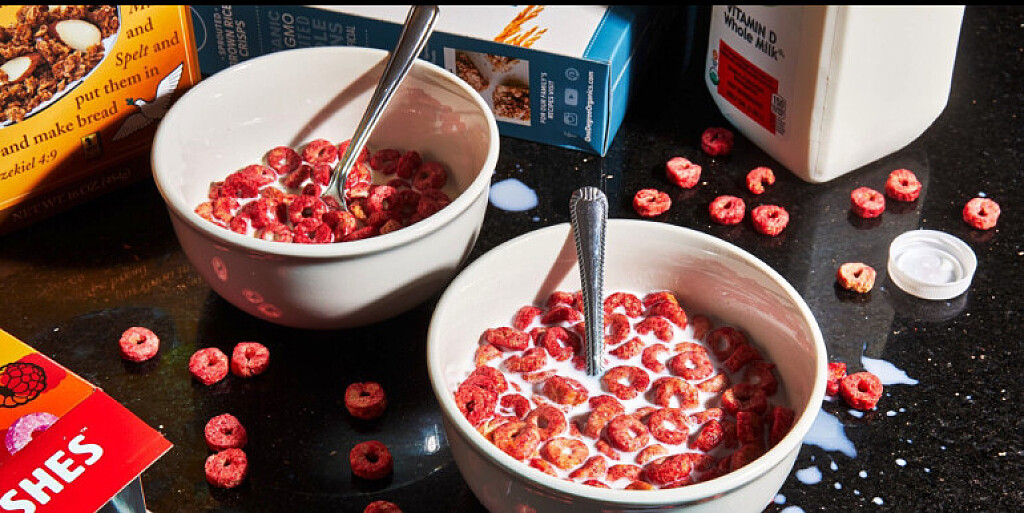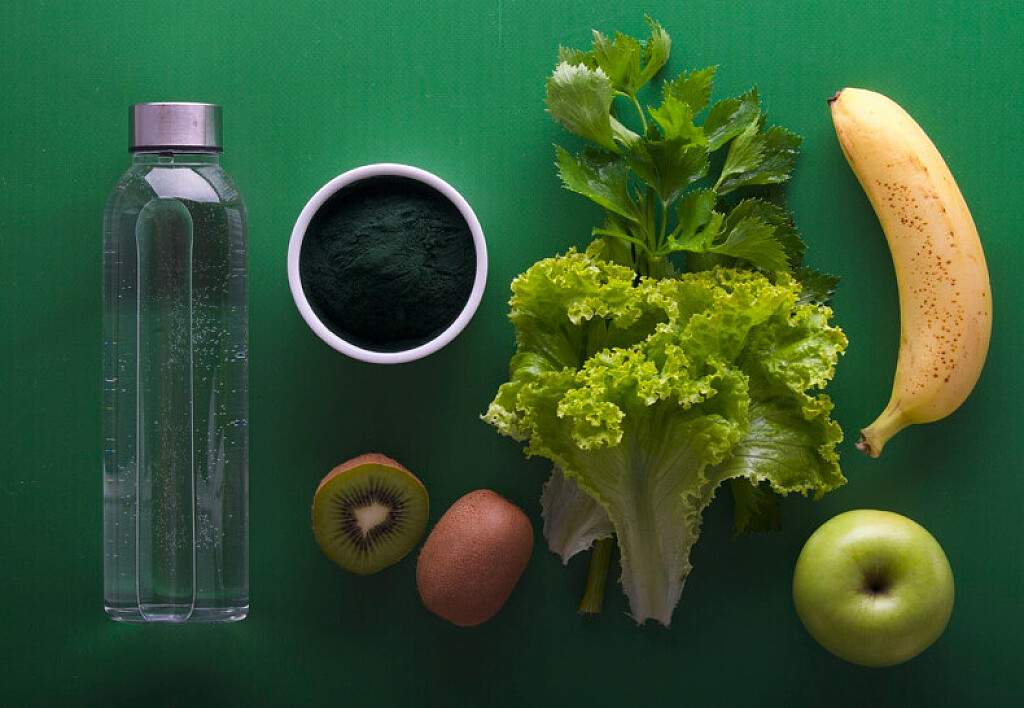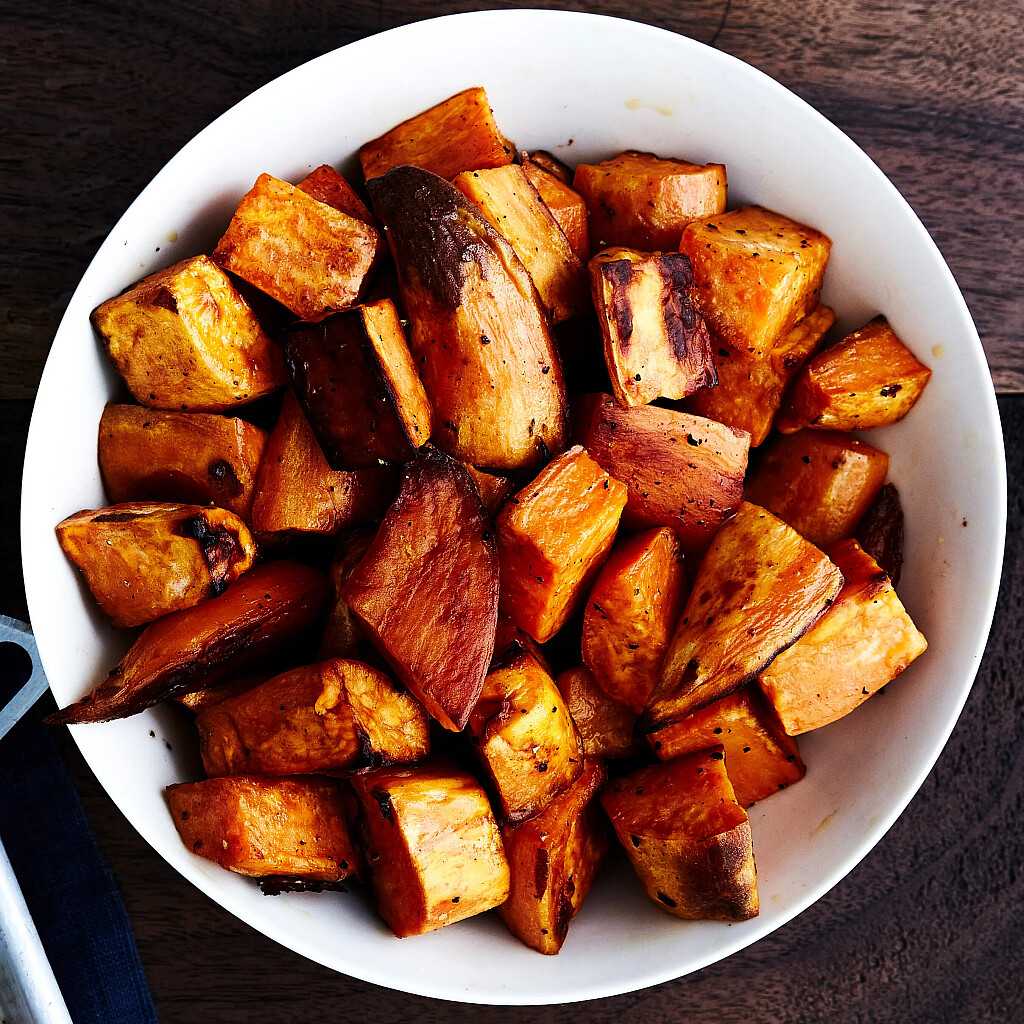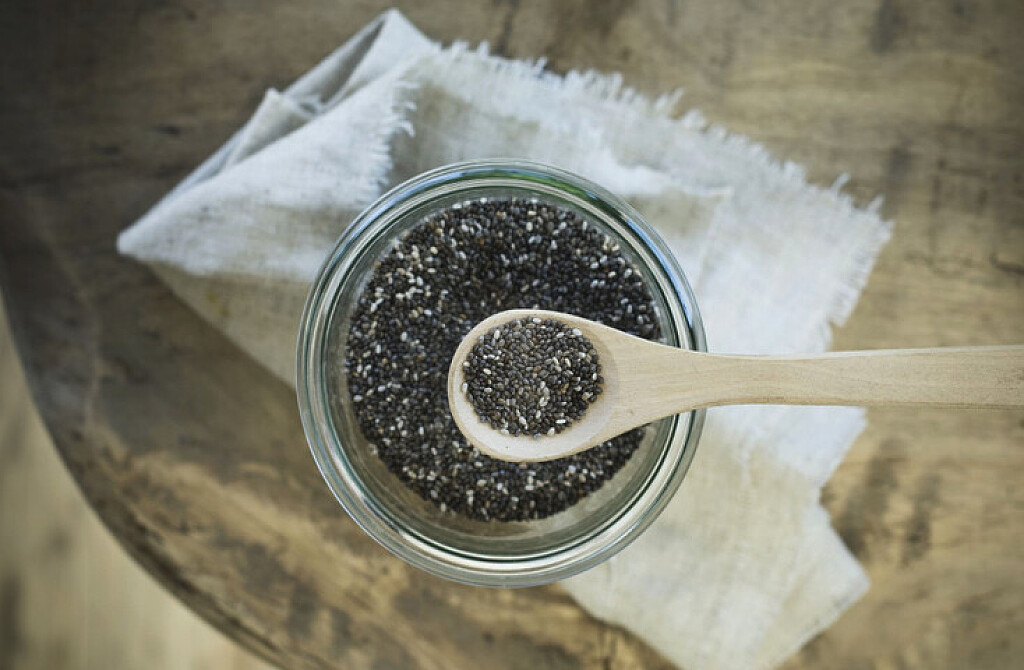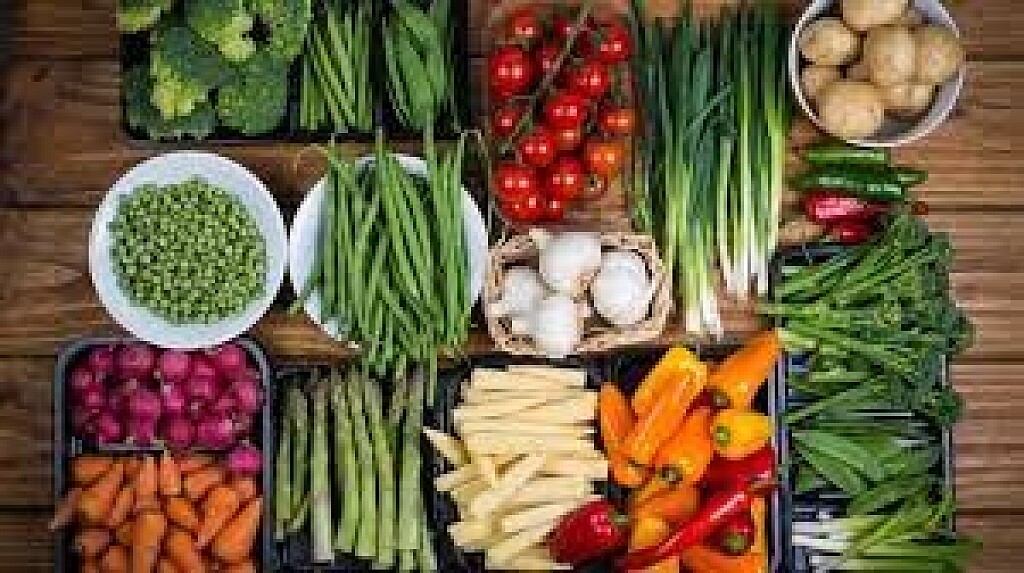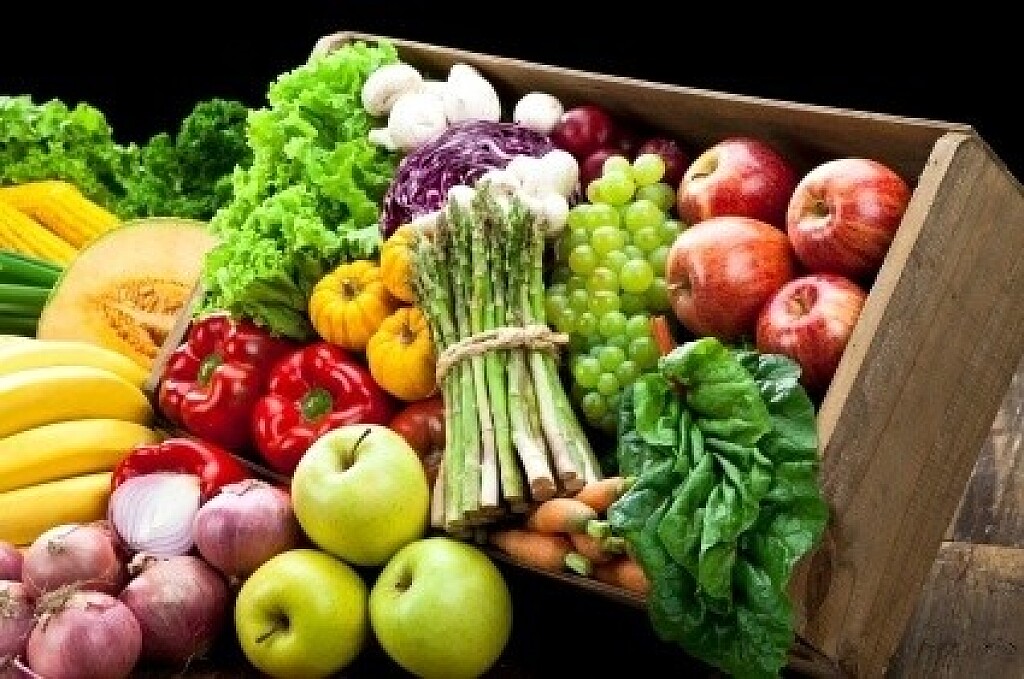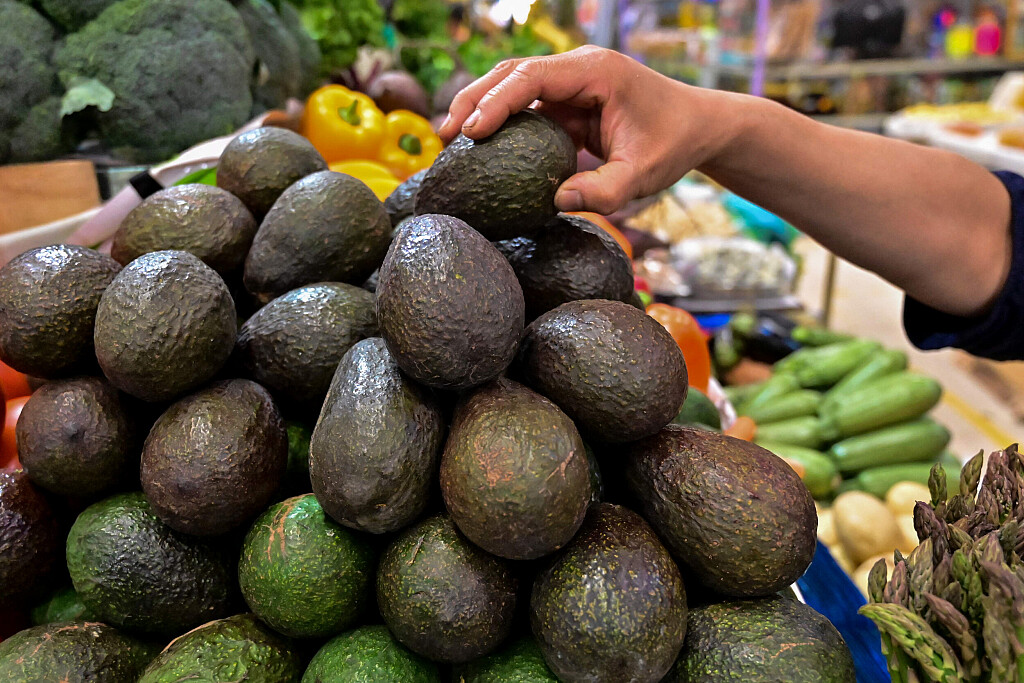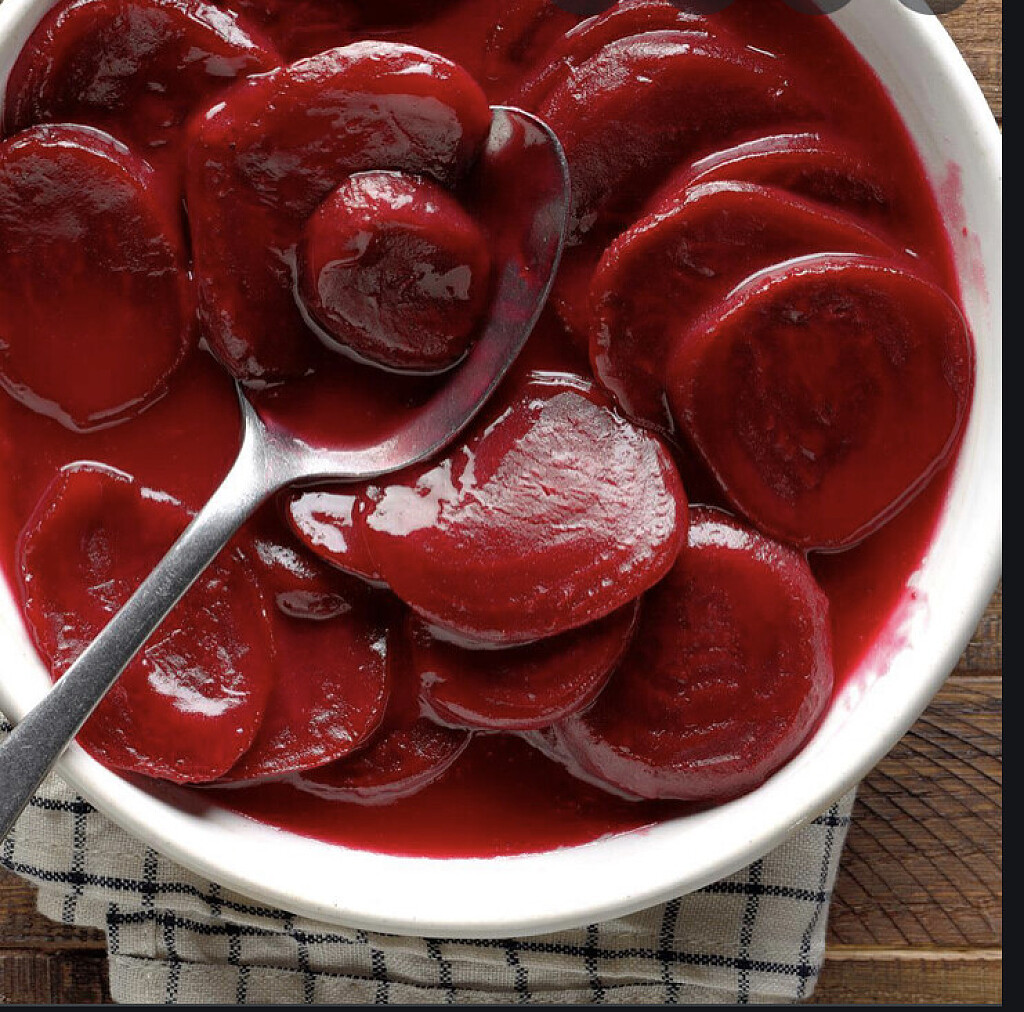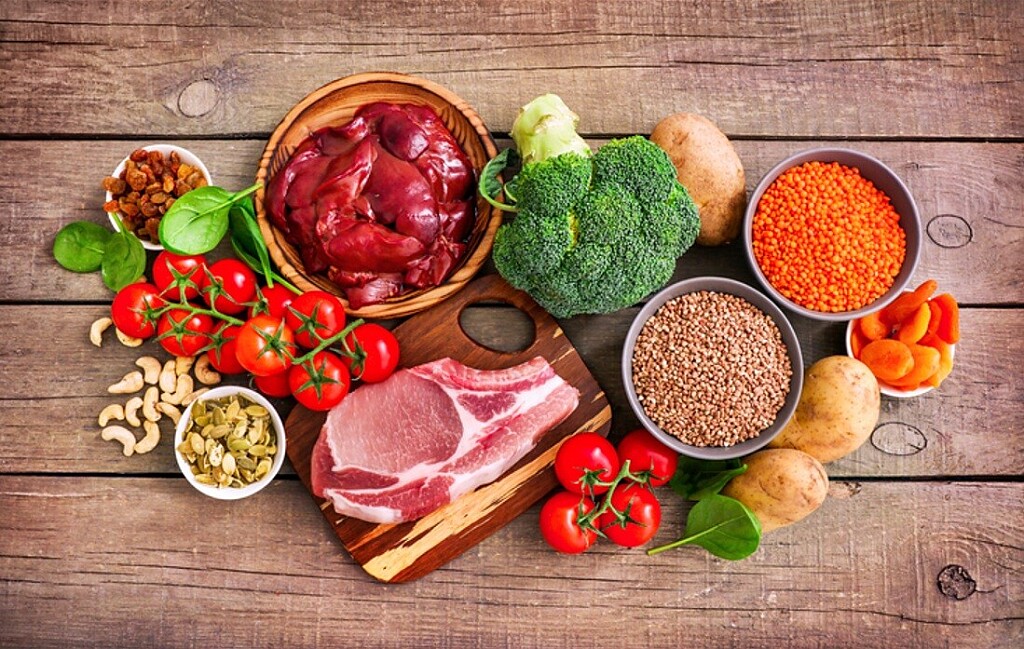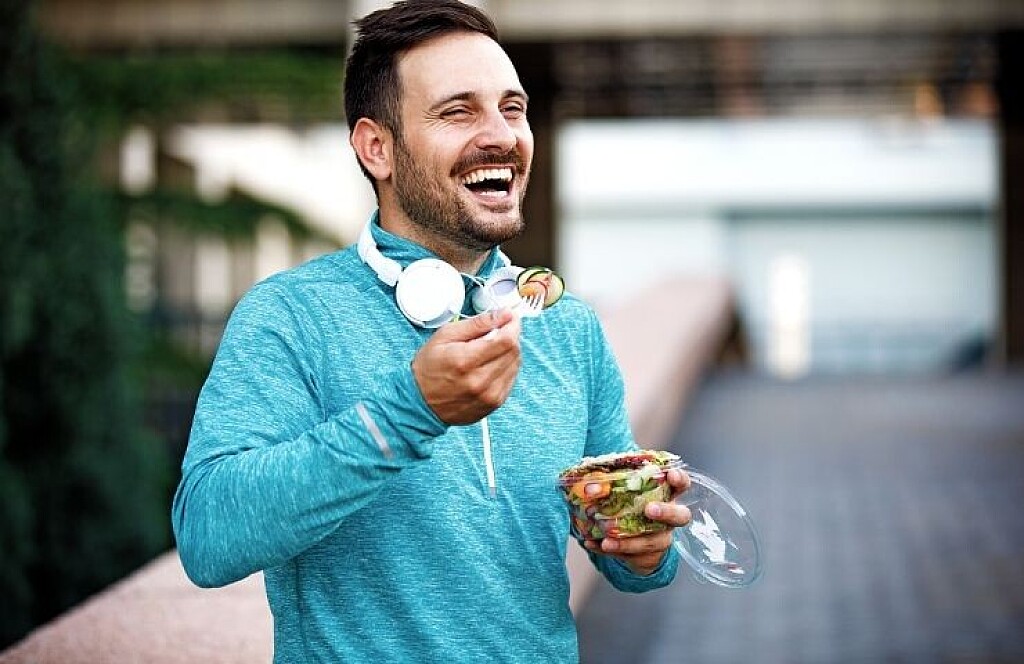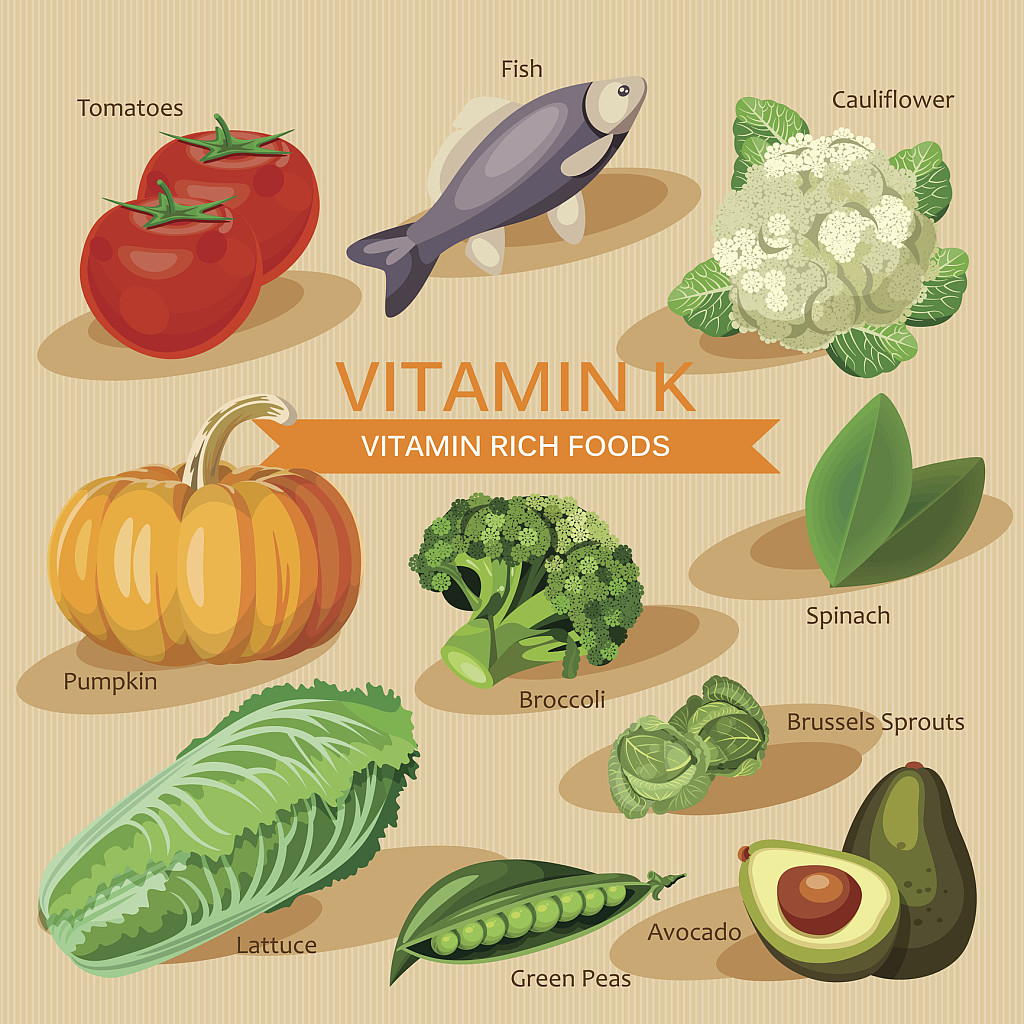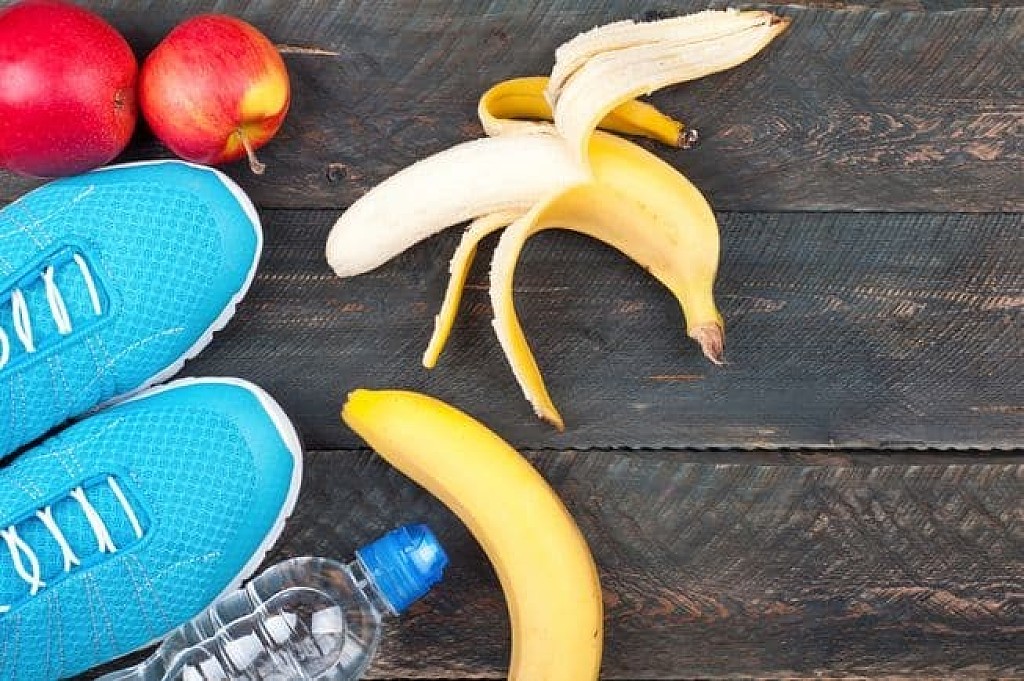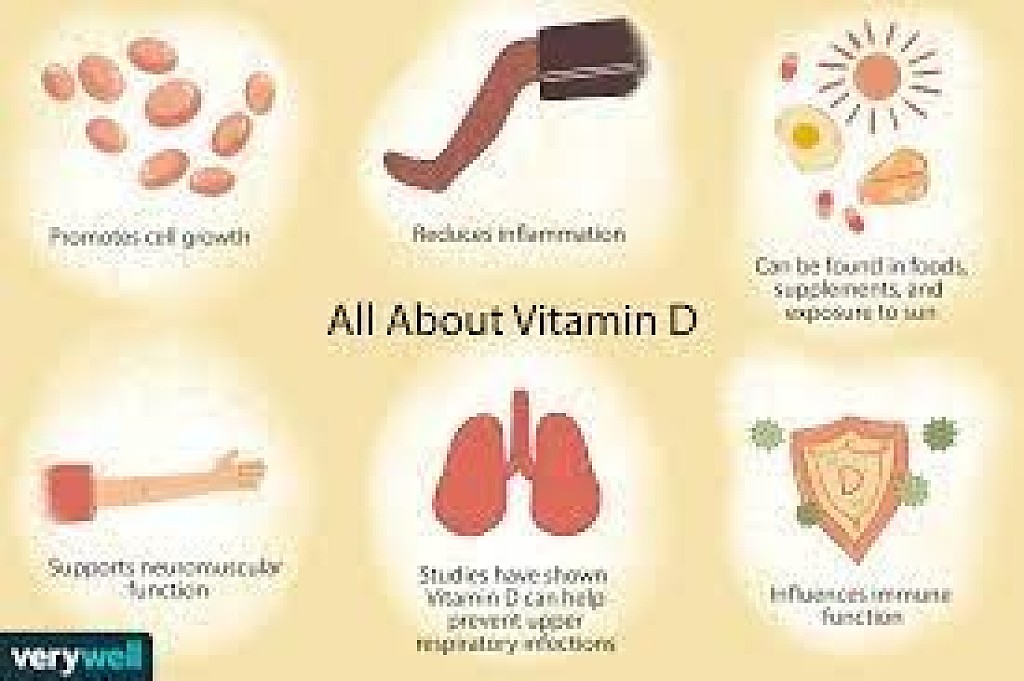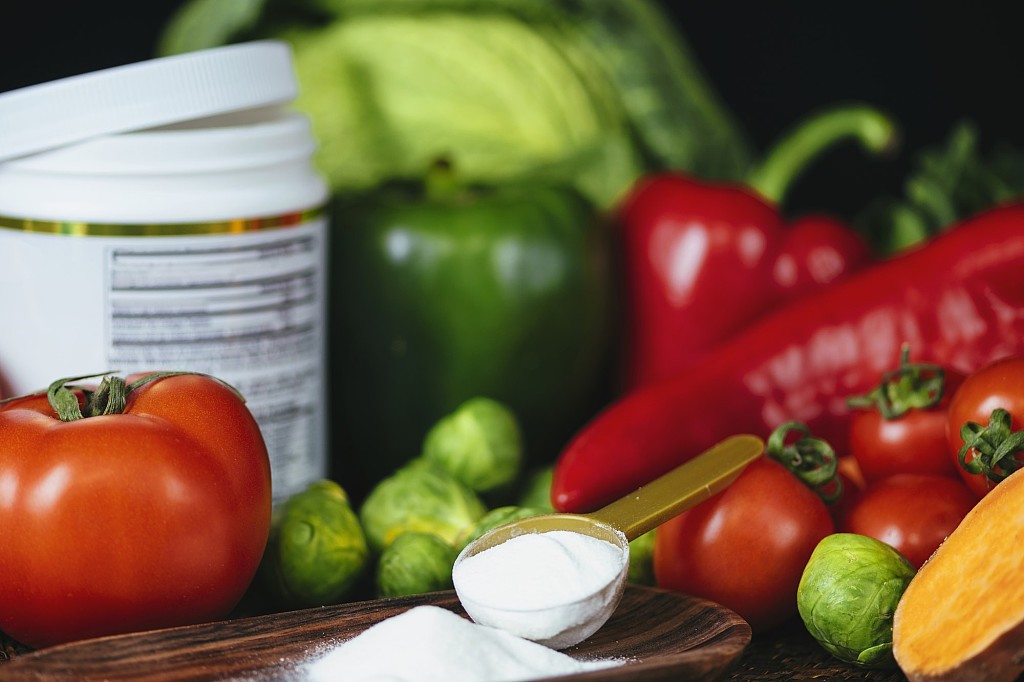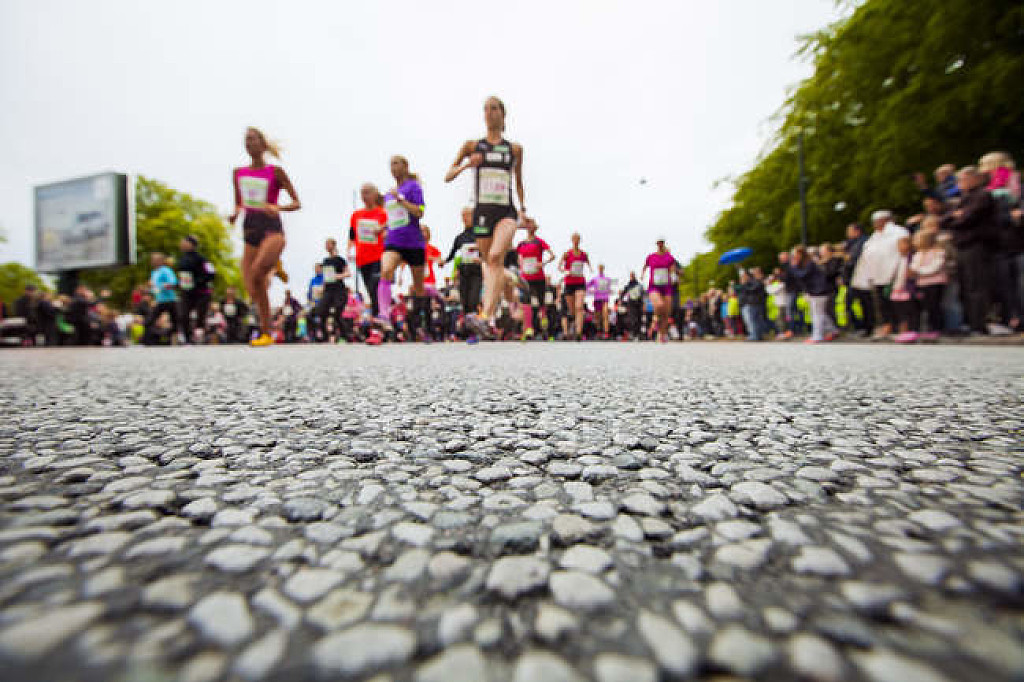Running News Daily
Running News Daily is edited by Bob Anderson. Send your news items to bob@mybestruns.com Advertising opportunities available. Train the Kenyan Way at KATA Kenya and Portugal owned and operated by Bob Anderson. Be sure to catch our movie A Long Run the movie KATA Running Camps and KATA Potato Farms - 31 now open in Kenya! https://kata.ke/
Index to Daily Posts · Sign Up For Updates · Run The World Feed
Articles tagged #Vitamin C
Today's Running News
Four essential vitamins and minerals to keep runners strong this winter
The harsh months of winter are just around the corner–and for some runners, their immune system, along with their mood, could plummet along with the warm weather. Give yourself a head start by supplementing your body with these essential nutrients that will keep you strong–mentally and physically–when cold season arrives with the cold weather.
1.- Vitamin D
Vitamin D is a unique vitamin–your body can produce it when exposed to sunlight. As the days get shorter and the sun disappears earlier, the amount of the vitamin synthesized by your body declines. It will also decline with sunscreen use, increased melanin and older age.

Vitamin D’s role
Boosts immune system

Helps with calcium absorption
Builds and maintains strong bones and teeth
Regulates mood
Foods with vitamin D
Vitamin D doesn’t occur naturally in many foods–other than fortified foods, where vitamin D has been added. Foods that do provide some include:
Egg yolk
Fatty fish
Unsweetened low-fat milk
Unsweetened plant-based milk fortified with vitamin D
Supplementing with vitamin D
The easiest way to ensure you’re getting adequate vitamin D, especially in winter, is by taking a supplement; these can come as tablets, capsules, liquid or spray. Sources recommend at least 600 IU (15 mcg) per day for adults, without exceeding 4,000 IU (100 mcg). You can buy supplements at drugstores, health food stores and department stores.
2.- Vitamin C
People usually suggest loading up on vitamin C (ascorbic acid) when you get sick to improve your recovery time–but at that point, it may be too late for the vitamin’s immunity benefits to be effective. Studies have shown that taking vitamin C over a longer period of time may slightly reduce the duration of a cold and the severity of the symptoms.
Vitamin C’s role
Boosts immune system
Helps with iron absorption
Helps with repair and growth of all tissues (bones, cartilage, skin and blood vessels)
Acts as an antioxidant, protecting cells against daily damage
Foods with vitamin C
Citrus fruits
Bell peppers
Brussels sprouts
Broccoli
Snow peas
Fruits such as kiwi, strawberries, peaches, papaya and guava
Leafy vegetables such as kale and arugula
Tomatoes
Potatoes
Supplementing with vitamin C
While it’s easy to get vitamin C through your diet, supplements are also available. Daily necessary vitamin C dietary intake is at least 75 mg for women and 90 mg for men. Sources suggest supplementing 250-500 mg twice a day to provide maximum benefit. The upper limit for adults is 2,000 mg per day, but stomach pain or diarrhea may result from taking more than 1,000 mg. Vitamin C can be taken as capsules, tablets, chewables or a powder.
3.- Omega-3
Omega-3 fatty acids have their fair share of diverse benefits, but studies have shown that supplemental omega-3s, which are taken in fish oil or fish oil capsules (to mask the taste), may not provide the same benefits for heart health as food sources. ALA, DHA and EPA are the three main types of omega-3 fats found in food.
Omega-3’s role
Regulates serotonin levels and improves low mood
Reduces risk of developing heart disease (lowers blood pressure, triglyceride levels and prevents blood clots)
Reduces pain and inflammation
Improves cognitive function
Foods with omega-3
ALA (found in plant oils)
Flaxseed oil, canola oil, walnut oil, soy oil
Chia
EPA and DHA (fatty fish and seafood)
Salmon, herring, sardines, tuna
Omega-3-rich eggs and milk
Supplementing with omega-3
Prioritize getting your omega-3s through your diet, but if supplementing, make sure your supplement contains EPA and DHA, and be sure to check the content of each (it will likely be 30 per cent omega-3s and 70 per cent other fats). Recommended daily intake for combined EPA and DHA is 250-500 mg, while total omega-3s is 1,100 mg for women and 1,600 mg for men.
Note that fish oils are perishable (so try not to buy them in bulk), and omega-3s will be best absorbed when taken with fatty meals.
4.- Iron
Iron is a mineral that has the critical role of creating hemoglobin, a protein in red blood cells that carries oxygen to tissues around the body. First signs of iron deficiency include fatigue and headache, as your body isn’t getting the oxygen it needs–this can significantly impact your ability to perform athletically, especially for runners. Your cracked lips, paler-than-usual skin and cold hands and feet may not be just from the chilly, dry weather–these may be signs of low iron.
Iron’s role
Improves energy levels
Improves body temperature regulation
Boosts endurance exercise performance
Improves cognitive and immune functions
Foods with iron
Oysters
Red meat
Liver
Legumes
Spinach
Tofu
Dark chocolate
Fortified breakfast cereals
Supplementing with iron
Your body can sometimes have difficulty absorbing iron; vegetarians may also need to take iron supplements, which are available over-the-counter, to replace what red meat provides. Runners, in particular, need higher levels of ferritin than the general population; your doctor may not consider sub-optimal ferritin levels “low,” so be sure to let them know you’re a runner, and that you’re aware that athletes require more iron.
Women aged 19-50 are most at risk for iron deficiency from losing blood through monthly periods, and are recommended to consume 18 mg of dietary iron daily. Men over age 19 and post-menopausal women are only recommended a daily intake of 8 mg.
Too much iron from supplements can cause constipation or stomach pain. Take vitamin C with iron to increase absorption, and avoid taking with caffeine and calcium (milk, cheese, yogurt), which can impede absorption.
by Cameron Ormond
Login to leave a comment
Three DIY electrolyte drinks to make this summer
Staying hydrated in the hot summer season is crucial, but commercial electrolyte drinks are often packed with artificial ingredients and sugars. Making your own electrolyte drinks at home lets you control what goes into your body, ensuring you get the nutrients you need without any unwanted additives. Plus, it’s often more cost-effective, and customizable to your taste preferences.
Citrus Burst Electrolyte Drink
This thirst-quenching combo of citrus fruits also provides a natural dose of vitamin C and potassium.

Ingredients
2 cups water1/4 cup fresh lemon juice1/4 cup fresh orange juice1/8 teaspoon sea salt1-2 tablespoons honey or maple syrup (to taste)
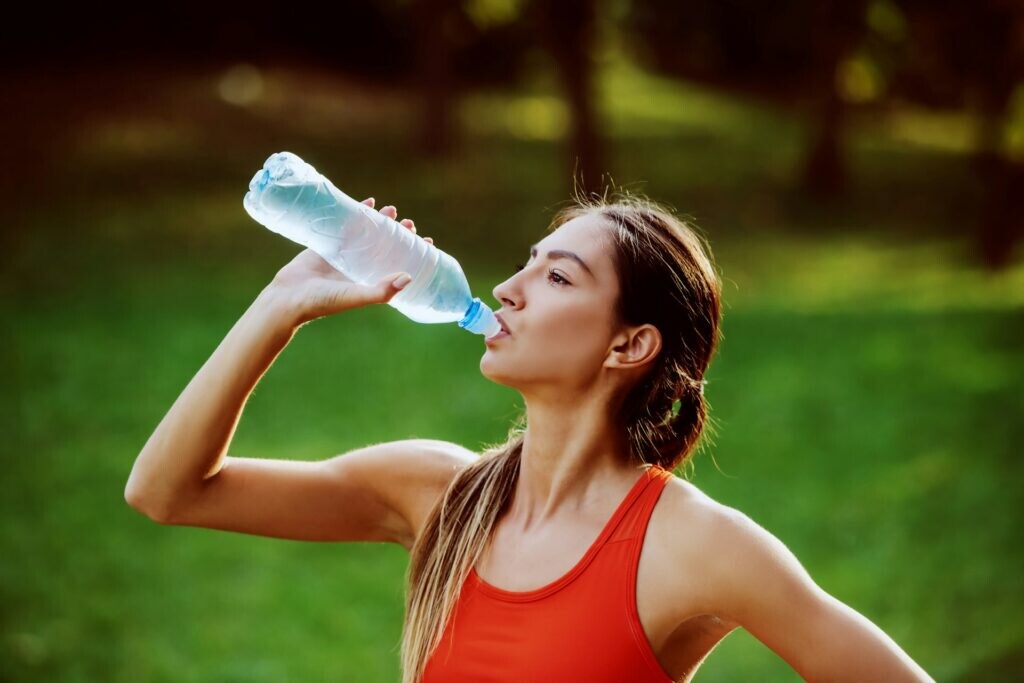
Instructions
Combine all the ingredients in a pitcher.Stir well until the salt and honey are fully dissolved.Chill in the fridge for at least an hour, or until you’re ready to enjoy.
Source: Wellness Mama
Coconut Lime Electrolyte Drink
Coconut water is naturally rich in electrolytes like potassium and magnesium, making it a perfect base for this tropical drink.
Ingredients
1 cup coconut water1 cup waterJuice of 2 limes1/8 teaspoon sea salt1 tablespoon agave syrup or honey (optional)
Instructions
Mix all ingredients in a pitcher and stir well.Taste and adjust sweetness if needed.Chill before serving, and sip it during or after your run.
Source: Fit Foodie Finds
Berry Blast Electrolyte Drink
Packed with antioxidants and vitamins, this berry-infused drink is not only tasty but also great for recovery.
Ingredients
1 cup mixed berries (fresh or frozen)2 cups water1/4 cup freshly squeezed lemon juice1 tablespoon honey or agave syrup1/8 teaspoon sea salt
Instructions
Blend the berries and water until smooth.Strain the mixture through a fine-mesh sieve to remove any pulp.Mix the berry juice with lemon juice, honey and sea salt in a pitcher.Stir well and chill before serving.
Source: The Kitchn
Creating your own electrolyte drinks at home is a fun and easy way to stay hydrated and energized on your runs—but the fun doesn’t need to stop with beverages. Try freezing any of these electrolyte drink mix into ice cube trays, ready to liven up any ordinary glass of water; to take your electrolyte drinks (or your frozen cubes) to the next level, toss in a few fresh or frozen berries, mint leaves or lime wedges.
by Keele Milne
Login to leave a comment
3 ways runners can boost their iron levels
Research indicates ways runners can improve their health and bid farewell to iron deficiency Are you tired of feeling tired, dizzy, or out of breath when you run? You’re not alone. Research shows that 35 per cent of female and 10 per cent of male athletes suffer these symptoms of iron deficiency: a condition that can zap energy, impair cognitive function and compromise the immune system, significantly impacting performance. (Iron deficiency is particularly high in female athletes due to menstruation.)
Iron is one of the most important micronutrients for runners, as it plays a crucial role in oxygen transport and energy production. As a runner, you’re more prone to iron deficiency due to increased hepcidin production (a hormone that makes it harder to absorb iron) during exercise. But here’s the silver lining–there are three powerful ways to boost your iron levels. Applying these strategies to your running routine can improve your overall health and kick iron deficiency to the curb.
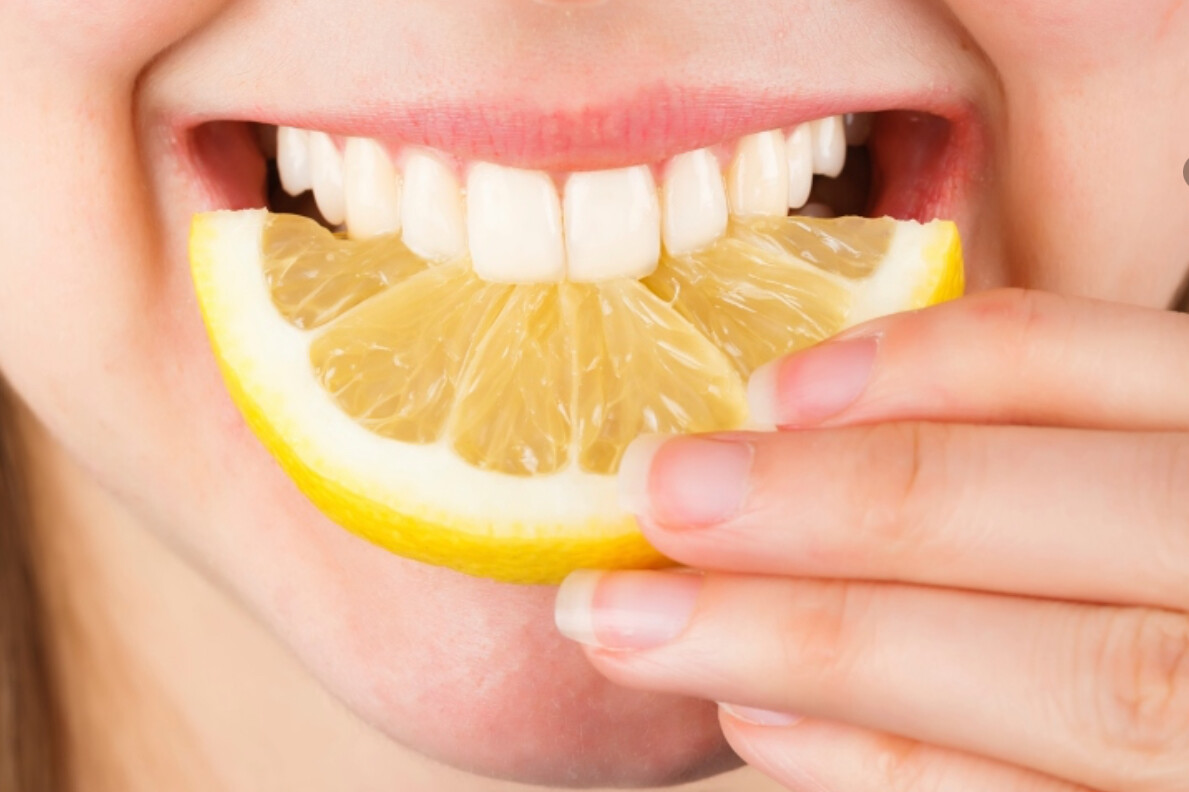
Consume iron-rich foods
Consuming foods with a high iron content is a great way to boost your iron levels. But here’s a pro tip: look for foods with high iron bioavailability. This term refers to how much iron from a food source can be absorbed and used by your body.
Fruits rich in vitamin C, like oranges or kiwis that, while not being good sources of iron themselves, help your body absorb the iron you’re taking in from other sources. In particular, you want to focus on foods rich in hemeiron (the form of iron most readily absorbed by your body). These include spinach, liver, sardines and poultry.
Eat at the right time
When it comes to iron intake, timing plays a role. Research indicates that when you eat can significantly impact your iron absorption—for example, consuming a meal before a run has been found to reduce iron absorption, compared to eating after a run. This is because your body struggles to absorb iron in a rested state, thanks (again) to that hormone mentioned earlier, hepcidin.
Hepcidin regulates iron levels in the body. Your body produces more of this hormone when you’re at rest, inhibiting iron absorption and making it harder for your body to get the iron it needs. The optimal time to eat a meal is either 30 minutes or 12 hours after a run. During these periods, your body produces the least amount of hepcidin, allowing it to absorb iron more efficiently.
Consider an oral supplement
Researchers recommend oral iron supplements (in liquid or tablet form) as a safe and effective way to increase iron levels. Athletes have long preferred this method due to its affordability and non-invasiveness. But, it’s essential to consult a doctor before starting any supplement regimen, as some doses can have side effects. If you have any symptoms of iron deficiency, consult your doctor for a blood test to determine your iron levels. For instance, unlike liquid iron, iron tablets have been associated with stomach lining injuries. So, it’s crucial to be aware of these and monitor your body’s response when taking oral iron supplements.
by Running Magazine
Login to leave a comment
Three ways runners can boost their iron levels
Are you tired of feeling tired, dizzy, or out of breath when you run? You’re not alone. Research shows that 35 per cent of female and 10 per cent of male athletes suffer these symptoms of iron deficiency: a condition that can zap energy, impair cognitive function and compromise the immune system, significantly impacting performance. (Iron deficiency is particularly high in female athletes due to menstruation.)
Iron is one of the most important micronutrients for runners, as it plays a crucial role in oxygen transport and energy production. As a runner, you’re more prone to iron deficiency due to increased hepcidin production (a hormone that makes it harder to absorb iron) during exercise. But here’s the silver lining–there are three powerful ways to boost your iron levels. Applying these strategies to your running routine can improve your overall health and kick iron deficiency to the curb.

1.- Consume iron-rich foods
Consuming foods with a high iron content is a great way to boost your iron levels. But here’s a pro tip: look for foods with high iron bioavailability. This term refers to how much iron from a food source can be absorbed and used by your body.

Fruits rich in vitamin C, like oranges or kiwis that, while not being good sources of iron themselves, help your body absorb the iron you’re taking in from other sources. In particular, you want to focus on foods rich in heme iron (the form of iron most readily absorbed by your body). These include spinach, liver, sardines and poultry.
2.- Eat at the right time
When it comes to iron intake, timing plays a role. Research indicates that when you eat can significantly impact your iron absorption—for example, consuming a meal before a run has been found to reduce iron absorption, compared to eating after a run. This is because your body struggles to absorb iron in a rested state, thanks (again) to that hormone mentioned earlier, hepcidin.
Hepcidin regulates iron levels in the body. Your body produces more of this hormone when you’re at rest, inhibiting iron absorption and making it harder for your body to get the iron it needs. The optimal time to eat a meal is either 30 minutes or 12 hours after a run. During these periods, your body produces the least amount of hepcidin, allowing it to absorb iron more efficiently.
3.- Consider an oral supplement
Researchers recommend oral iron supplements (in liquid or tablet form) as a safe and effective way to increase iron levels. Athletes have long preferred this method due to its affordability and non-invasiveness. But, it’s essential to consult a doctor before starting any supplement regimen, as some doses can have side effects. If you have any symptoms of iron deficiency, consult your doctor for a blood test to determine your iron levels.
For instance, unlike liquid iron, iron tablets have been associated with stomach lining injuries. So, it’s crucial to be aware of these and monitor your body’s response when taking oral iron supplements.
by Katrianna Desante
Login to leave a comment
The Mysterious Case of the Asthmatic Olympians
You won’t freeze your lungs exercising outdoors this winter, but there are reasons to be cautious about inhaling extremely cold air
When an athlete reaches the podium despite a prior medical event—a cancer diagnosis, say, or a car accident—we consider it a triumph of the human spirit. When a bunch of athletes do so, and all of them have suffered the same setback, we can be forgiven for wondering what’s going on. According to the International Olympic Committee, roughly one in five competitive athletes suffers from exercise-induced bronchoconstriction, or EIB, an asthma-like narrowing of the airways triggered by strenuous exercise. The numbers are even higher in endurance and winter sports. Puzzlingly, studies have found that athletes with EIB who somehow make it to the Olympics are more likely to medal. What’s so great about wheezing, chest tightness, and breathlessness?
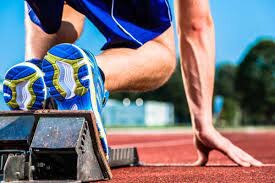
The answer isn’t what you’re thinking. Sure, it’s possible that some athletes get a boost because an EIB diagnosis allows them to use otherwise-banned asthma medications. But there’s a simpler explanation: breathing high volumes of cold or polluted air dries out the airways, leading to an overzealous immune response and potential long-term damage. “It’s well established that high training loads and ventilatory work increase the degree of airway hyper-responsiveness and hence development of asthma and EIB,” explains Morten Hostrup, a sports scientist at the University of Copenhagen and lead author of a new review on EIB in the Scandinavian Journal of Medicine and Science in Sports. In other words, the athletes who train hard enough to podium are more likely to develop EIB as a result.
That trade-off might be worthwhile if it means competing at the Olympics. For those of us who simply enjoy spending our winter days vigorously exploring the outdoors, the risk of EIB remains mostly unknown territory. Activities with the highest risk involve sustained efforts of at least five minutes, particularly if they take place in cold or polluted air. Cold air doesn’t hold much moisture, so it dries the airways. This affects skiers, runners, and triathletes, among others. Indoor environments like pools and ice rinks are also a problem, because of the chloramines produced by pool water and exhaust from Zambonis. As a result, swimmers, ice skaters, and hockey players are also at elevated risk of EIB. Over time, repeated attacks can damage the cells that line the airways.
Unfortunately, many athletes develop symptoms of EIB without realizing the underlying problem. After all, the feeling that you can’t catch your breath is pretty much written into the job description of most endurance activities. But starting in the 1990s, sports scientists began to suspect that top athletes had more breathing problems than would be expected. Before the 1998 Winter Games, U.S. Olympic Committee physiologists examined Nagano-bound athletes to see whose airways showed abnormal constriction in response to arduous exercise. Almost a quarter of the athletes tested positive, including half the cross-country ski team.
One reason EIB often flies under the radar is that the usual diagnostic workups aren’t challenging enough to provoke an attack in conditioned athletes. Among the accusations against disgraced coach Alberto Salazar was that he showed athletes how to fool EIB tests to get permission to use asthma meds. “He had a specific protocol,” star 5,000-meter runner Lauren Fleshman told ProPublica in 2015. “You would go to the local track and run around the track, work yourself up to having an asthma attack, and then run down the street, up 12 flights of stairs to the office and they would be waiting to test you.” Salazar certainly gave some shady advice, including encouraging Fleshman to push for the highest possible dosage of medication. But his tips for gaming the asthma test were similar to what USOC physiologists advocate, and an IOC consensus statement published last spring also concluded that more intense exercise challenges are better for diagnosing EIB in conditioned athletes. If you’re really fit, in other words, the rinky-dink treadmill in the doctor’s office isn’t going to push you hard enough.
If you do get an EIB diagnosis, your doctor can prescribe asthma medication, including inhaled corticosteroids like fluticasone and airway dilators like salbutamol. If you’re an elite athlete subject to drug testing, you’ll need to tread carefully, since some of those medications are either banned or restricted to a maximum dosage. Hostrup and his colleagues note that there’s also evidence that fish oils high in omega-3 fatty acids, vitamin C, and even caffeine might help reduce EIB symptoms. And on the non-pharmaceutical side, you can minimize the chance of an attack by doing a thorough warm-up of 20 to 30 minutes, including six to eight 30-second sprints. This can temporarily deplete the inflammatory cells that would otherwise trigger an airway-narrowing attack.
The best outcome of all, of course, is to avoid developing the problem in the first place. In 2008, I interviewed a Canadian military scientist named Michel Ducharme, who told me stories of cross-country skiers swallowing Vaseline in an attempt to protect their airways from the cold. This is a terrible idea on many levels—and, he assured me, totally unnecessary. Air warms up very quickly when you inhale it, so there’s no risk of freezing your throat tissue. But dryness is another question, and scientists have reconsidered whether some kind of protection—just not Vaseline—could be useful if you’re going hard on cold days.
One option is a heat-and-moisture-exchange mask, which warms and moistens the air you inhale. A company called AirTrim makes them with a range of levels of resistance for training or racing. Several studies have found that this type of mask seems to reduce EIB attacks. Research by Michael Kennedy at the University of Alberta found that EIB risk increases significantly when temperatures drop below about five degrees Fahrenheit. The precise threshold depends on conditions and individual susceptibility, so if you start coughing or wheezing, that’s a sign your airways are irritated. If you don’t have a breathing mask, a scarf or a Buff over your mouth can offer a temporary solution.
Don’t take all this as a warning against getting outdoors in the winter. I live in Canada, so staying inside when it’s below five degrees Fahrenheit would be a death sentence. But I’m no longer as macho about the cold as I used to be. I wear puffy mittens and merino base layers, and when my snot starts to freeze I cover my mouth and nose. Athletes with EIB may do better than their unimpaired peers at the Olympics, but that’s one edge I can do without.
by Outside Online
Login to leave a comment
Stop Falling for These 5 Immunity-Boosting Myths
Don’t let bad advice lead your immune system astray. Find out which immunity-boosting tips are nothing more than myths – and what you should actually do to stay healthy when cold.
If you don’t want an aching throat, stuffed-up sinuses or any of the other hallmark symptoms of cold and flu season, you’ve got to get your immune system in shape. There are plenty of tips, tricks and even over-the-counter remedies that promise to give you better immunity – but that doesn’t mean you should use them. It might surprise you, but some of the best-known immunity-boosting advice is nothing more than a myth.
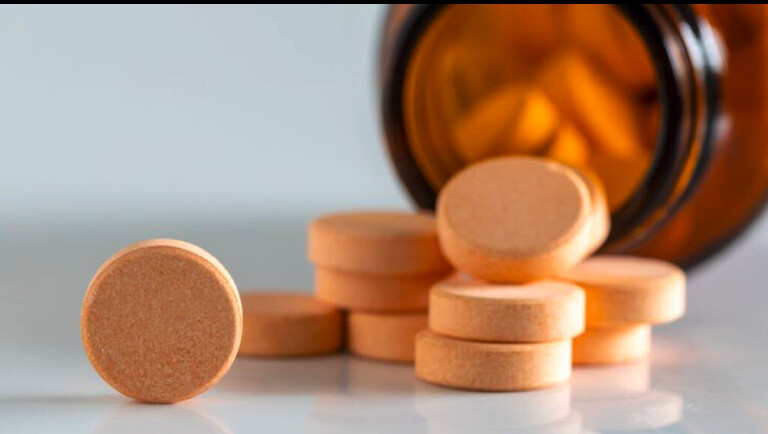
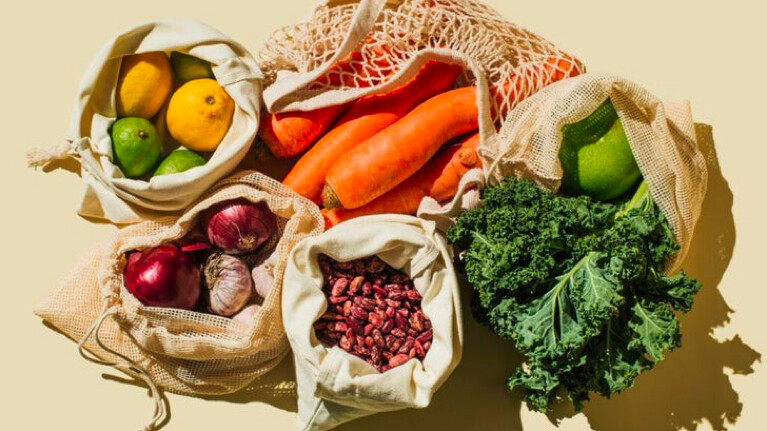
We’re busting some of the most common immunity myths. Get the facts on how you should eat, fine-tune supplements and adjust your lifestyle to help keep colds, flus and other illnesses at bay.
One of the most prevalent immunity myths out there? Taking a whole bunch of vitamin C will kick a cold before it even begins, or shorten the cold’s lifespan if you’re already sick.
While vitamin C is a great natural immunity booster, it isn’t exactly the cure-all it’s often advertised as. This nutrient does play an important role in immune function, and taking vitamin C supplements can be beneficial. But you don’t want to overdo it, especially if you’re planning to dramatically up your vitamin C intake.
More isn’t always better when it comes to vitamin C. Your body can only absorb so much – and the rest just goes to waste. Stick to the daily recommended dose for adults, which is 60 to 95 milligrams, and don’t go above the upper limit of 2,000 milligrams per day. Getting too much vitamin C can cause problems of its own like nausea, headaches and vomiting.
Plus, research has shown that taking huge doses of vitamin C supplements doesn’t actually help you fight off illness. While this nutrient can be beneficial for immune health overall, it doesn’t have any apparent advantage when you’re trying to keep colds at bay.
Here’s a myth that’s often found alongside the previous: You’ve got to take more zinc if you want to shorten a cold.
Zinc, like vitamin C, can have a positive effect on your immune system. It can help with everything from wound healing to immune cell function. And it’s often touted as one of the best minerals for slashing a cold’s typical lifespan to help you feel better faster.
However, zinc isn’t exactly the cold-curing powerhouse you might think it is. While a research study from 1984 did show that zinc supplements may be able to reduce a cold’s severity, more recent results are mixed. As the Mayo Clinic explains, an analysis of multiple studies found that taking zinc supplements within 24 hours of the first signs of cold may reduce the length of your illness by one day. But all of the studies reviewed were limited – they featured too few participants, used different dosages and forms of zinc, and supplemented zinc for varying amounts of time.
So, there’s no truly conclusive proof that zinc will zap your cold in its tracks. It isn’t a bad idea to take zinc – but there’s no reason to go overboard. Large amounts of zinc can be toxic to the body, so make sure you stick with the daily recommended amount for adults to be safe and get what your immune system needs. 8 milligrams for women and 11 milligrams for men daily is just right.
There’s one more must-remember tip about taking zinc. You don’t want to take this supplement on an empty stomach. Doing so can cause nausea – an added symptom you definitely don’t need if you’re already suffering from a cold or the flu.
Citrus fruits are rich in vitamin C, which we know is a much-beloved immunity-boosting nutrient. But just like you learned above, vitamin C isn’t the be-all, end-all for your health and your immune system’s strength. And it’s certainly no cure-all for colds and flus.
Many people turn to citrus fruit in an effort to increase their vitamin C intake naturally. But while the citrus family does offer a lot of vitamin C, it isn’t the only immunity-boosting powerhouse. There are plenty of other immunity superfoods that can deliver the nutrients you need to stay healthy even during cold and flu season.
Citrus fruits contain plenty of vitamin C – a 100-gram serving of lemon, for example, provides 53 mg while a 100-gram serving of oranges offers 71 mg. But there are other foods, including meat and veggies, that can offer just as much of this key immunity nutrient. Here’s a sample of some other awesome options rich in vitamin C:
Plus, don’t forget that no fruit, veggie or any other food is a cure-all. While vitamin C is a good nutrient to look for, you can also find immunity helpers in foods like chicken (which is rich in zinc as well as vitamin B6), carrots (which contain vitamin A) and even bone broth. It’s a good idea to eat a balanced diet so your immune system gets every one of the nutrients you need for great overall health.
Your diet definitely plays a role in your immune system’s health and function. But believing that you can simply eat a ton of immunity-boosting foods – or take a bunch of immunity-strengthening supplements – to stay healthy, that’s a myth.
While a diet rich in immunity-friendly nutrients is crucially important for keeping your immune system strong, there are a whole bunch of lifestyle factors that can impact your health. And if your lifestyle isn’t also supporting your immune system, you could wind up canceling out all the good that food and supplements can offer.
Sleep and stress are two of the biggest lifestyle factors to pay attention to. If you aren’t getting enough sleep, you’re weakening your immune system, potentially causing inflammation and stressing yourself out. Try our tips to get a better night’s sleep every time you head to bed. And when it comes to stress, missing out on sleep can lead to increased cortisol (the stress hormone). So if you’re already feeling stressed out by work, your busy schedule or your social life, you’ll also weaken your immune system and up your odds of getting sick. Try creating a calming, relaxing ritual at home with essential oils, meditation or other stress-soothing activities you enjoy.
Additionally, it’s another myth that exercising isn’t good for your immune system. Exercise is actually one of the best ways to boost your immunity – working out helps combat stress and benefits your overall health. Try to fit in regular exercise so you’re getting your heart pumping each and every day, even if you’re taking walks or sticking with short bursts of intense activity.
Sure, fresh fruits and vegetables are fantastic for delivering the nutrients you need, whether you’re targeting your immune system or other health needs. But that doesn’t mean you should only consume fresh produce – there are other forms that can offer just as many essential nutrients, and they won’t spoil as quickly.
It’s tough to get your hands on quality fresh produce in the colder months. But you shouldn’t worry about reaching for canned veggies or frozen fruit. It’s a common immunity myth that only fresh produce will do. Both canned and frozen fruits and vegetables are great sources of nutrients, and they can help you ensure you’re getting plenty of healthy variety into your diet.
Plus, as Tufts University explains, frozen can be even better than fresh in some cases. Research has discovered that frozen produce of all different varieties have almost identical nutritional value compared to their fresh counterparts. And while fresh produce can lose vitamins after just 5 days inside your fridge, frozen fruits and veggies maintain their freshness and won’t lose any nutrients. In tests, frozen fruits and vegetables were found to have higher levels of vitamin C – a key immunity booster – along with more antioxidant compounds, lutein and beta-carotene than fresh produce after refrigeration.
Canned fruits and vegetables are similar to frozen varieties. The produce is picked at just the right ripeness, and the nutrients are essentially “locked in” during the canning process when the fruits and vegetables are preserved. This leads canned foods to keep their high nutrient levels regardless of their time on your shelf. Some research has even suggested that eating a good amount of canned fruits and veggies in addition to your usual fresh produce can deliver higher levels of essential nutrients than opting for fresh alone.
Just make sure you’re choosing canned fruits and vegetables that don’t contain additives so you’re getting the nutrients you need without anything else. Look for canned produce in its simplest form, with no additives included in the mix. And don’t forget about BPA. While some canned food manufacturers have begun phasing BPA linings out of their canned goods, it’s still possible to pick up canned produce that includes BPA – so take a close look for a Proposition 65 warning label that can indicate the presence of this harmful substance.
So, while fresh is usually best, it isn’t the only option for a healthy immune system. If you want to stock up while you’re at the store, canned and frozen produce are both solid choices. Or, if you aren’t going to eat your fresh produce ASAP, opt for frozen or canned so you can lock in nutrients without worrying about freshness.
by Outside Online
Login to leave a comment
Are Energy Chews Actually Better Endurance Fuel Than Gummy Bears?
Our tester sacrifices her teeth to find out
I personally used gummy bears as endurance fuel for a solid ten years. These adorable chewy candies have long been a solution for athletes seeking an inexpensive and sugar-rich fuel for prolonged endeavors. But with more sport-formulated gummy options like Clif Bloks and Honey Stinger Chews on the market than ever, I wondered if there was much of a difference in how they make me feel during hearty efforts. So I decided to put them to a head-to-head test.

It was 10 a.m. at a pristine mountain lake in Colorado when I ate my first convenience store gummy bears, and—no surprise here—they were delicious. I’d packed a reusable plastic bag with a heartier serving (read: more than the recommended nine bears) of Albanese Gummi Bears, and another reusable bag of Haribo Goldbears and shoved them in my hydration pack. This type of candy is usually made of corn syrup and sugar, with “natural and artificial flavors.”
I was a couple rugged mountain miles to a lake with my dog. I sat on a rock and ingested the candy, noting how the Albanese Gummi Bears, which a friend had raved about to me, were insanely soft and chewy. Maybe too soft and chewy—I ate all of them within 30 seconds. They don’t require a lot of masticating, which is a bonus while running, but a negative if you don’t want to inhale a giant bag of gummy bears in one sitting.
I also ate a few (again more than nine) Haribo Goldbears. This is the brand I used to carry and eat during multi-day adventure races. They are, in a word, gummier. They take more effort to chew, which is fine while hiking or paddling, but can be a pain (and a choking hazard) while running or cycling. They too, are delicious (I’m personally partial to the pineapple flavor).
The consumption left my teeth feeling slimy, like they do whenever I eat something super-sugary. My stomach felt OK—not great—on the steep and rocky descent, but I felt a little jittery, like I’d had too much coffee.
I didn’t crash and burn afterward, but it was only a five-mile outing. I didn’t feel great the rest of the day, though.
Since energy chews hit the scene some years ago, I’ve relied on them to both satiate my love of gummy candy while exercising and to keep me going. I’ve used them on countless mountain running adventures, ski tours, hikes with kids, and more. But for this gummy-to-gummy comparison, I took them on a mountain run three days after the initial gummy bear test.
I ate a sleeve full of Salted Watermelon Clif Bloks about six miles into a rugged run towards another alpine lake. And I pounded a bag of Honey Stinger Pink Lemonade Energy Chews around mile 11.
Both served my needs: I was fatigued and hungry, sweating profusely, and borderline depleted. I ate more on that 15-mile run than just chews—some nuts, pretzels, zucchini bread with walnuts—but the chews were my on-the-go snacks while the others I ate sitting at a lake or walking to warm-up.
I didn’t get the sugary coating on my teeth; I don’t from chews. And I didn’t get the weird jitters. I also didn’t feel the guilt-cheating sensation I had on my Gummy Bear Run. The ingredients of both Clif Bloks and Honey Stinger Energy Chews include feel-good sugars like organic tapioca syrup, organic sugar, and organic honey, plus organic color from black carrot juice.
Aside from the better sugars and ingredients in general of energy chews, what both packs of chews have that gummy bears do not are a substantial amount of electrolytes. I feel like I need the extra sodium provided by chews when I exert myself; replacing it helps me feel balanced.
There is less sugar in the full bag (two servings) of both Clif Bloks and Honey Stinger Energy Chews than in two servings of gummy bears. (Those two servings would be a count of 18 bears.) I’m not sure why the sugar of chews doesn’t make me feel jittery and gross like the sugar of gummy bears. Maybe it’s partially psychosomatic, but maybe it has to do with the good things chews have that bears do not.
Honey Stinger chews also provide 70 percent the recommended dietary allowance of Vitamin C, and their new Caffeinated Chews (Strawberry Kiwi, Cherry Cola, and Stingerita Lime) contain 50 milligrams of caffeine (100 milligrams for whole pack) from tea for sustained energy. Black Cherry, Tropical Punch, and Orange Clif Bloks contain 50 milligrams caffeine per serving, 100 milligrams per pack. And Clif Bloks have 18 milligrams of potassium, also beneficial electrolytes. (Strangely, Haribo Goldbears have two grams of protein per serving.)
Where Haribo and Albanese have an edge is in cost and availability. You can buy bears from those brands in a variety of stores and cost less than half per ounce than any of the chews, which are more of a specialty item.
I feel better eating energy chews over gummy bears, both on an endurance/performance level and on a guilt level, not that I, or anyone, should feel guilty eating candy once in a while. The only thing I might feel guilty about is the extra cost that I might incur during a race or an intense training cycle.
I find energy chews just as delicious as gummy bears, and both feel like a treat while out on an adventure of any sort. The energy chews don’t coat my teeth in sugar or threaten a sour belly, something I get when I ingest too much sugar on a run. Eating energy chews on a run or any outing that requires endurance just makes more sense than eating gummy bears.
Our veteran gear maven, Lisa Jhung, has been testing gear for 25 years. She’s sprayed herself down with a hose to test the waterproofness of rain jackets, set up treadmills in her yard for weeks of testing, and stashed shoes in bushes to change mid-run.
In this column, Vetted, she inspects, tests, and muses on all things outdoor gear.
by Outside Online
Login to leave a comment
What Runners Should Know About Hydrating With Coconut Water
This tropical drink can provide a perfect refresher on a hot day, while offering up key nutrients for runners.
Figuring out your hydration needs is essential as a runner. But let’s face it, water probably isn’t what you’re craving to quench your thirst every day. One drink that might add more excitement to your hydration plan: coconut water.
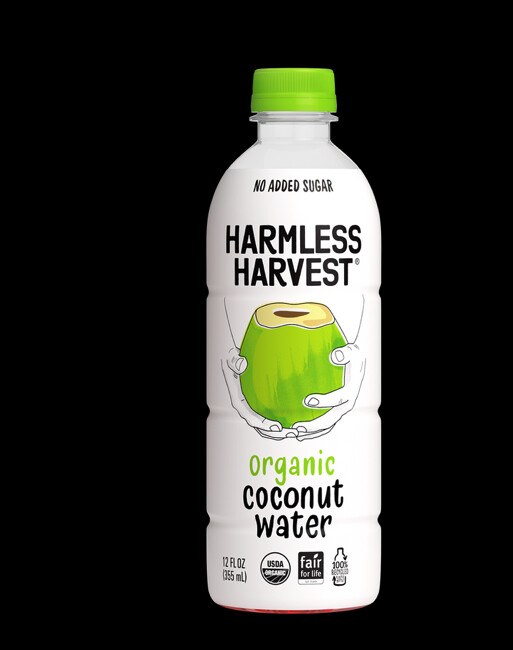
Coconut water is the liquid that’s found in young coconuts, and it contains naturally occurring minerals, says Yasi Ansari, MS, RDN, CSSD, certified specialist in sports dietetics and national media spokesperson for the Academy of Nutrition and Dietetics.
Coconut water is different from coconut milk, which is pressed from ground coconut flesh and then mixed with either coconut water or freshwater, says Kelly Jones, MS, RD, CSSD, sports dietitian based in Newtown, Pennsylvania. Compared to coconut milk (the kind you’d find in your grocer’s fridge, not the canned condensed variety), which contains anywhere from 45 to 70 calories per cup, and roughly 4.5 grams of fat, coconut water averages around 45 calories per cup and typically contains no fat.
While there’s plenty of beverage options for runners to choose from today, knowing what will optimize your recovery and support your health is important. Here’s what to keep in mind about coconut water in particular.
The Benefits of Coconut Water
1. Offers Electrolytes
“Coconut water is most often praised for being a good source of potassium, with [about] 400 milligrams per cup, which is around the same amount as a medium banana,” says Jones. Consuming potassium may protect your heart, as it’s known to help lower blood pressure. “Potassium is also an important mineral to support hydration and healthy muscle function, though not without adequate sodium,” Jones adds.
Potassium isn’t the only electrolyte you’ll get from coconut water. “Coconut water also provides smaller amounts of the minerals magnesium, calcium, and phosphorus,” Ansari says. Runners lose these electrolytes through sweat and urine, so you need to replenish them, especially when clocking miles on a hot, humid day.
“Sweat loss can depend on climate, heat acclimatization, type of activity, sweat rate, diet, and more,” Ansari adds.
2. Serves Up a Healthy Supply of Vitamin C
Antioxidants are known to help your body’s natural defense mechanisms, and studies link people who eat a diet rich in antioxidants to lower risk of diseases and improved longevity. One important antioxidant in coconut water? Vitamin C.
One cup of coconut water supplies 27 percent of the daily recommended value of this vitamin, which is important in protecting your cells from the damage of free radicals, and supporting your immune system. “According to the FDA, the closer we get to 20 percent of a daily value, we’re getting a high source of that mineral or vitamin,” Ansari says.
3. Supports Your Overall Health
“While more research is needed on coconut water and its benefits on human health, coconut water has been linked to playing a role in blood sugar control, offering antioxidant properties, and supporting heart health and blood pressure,” Ansari says.
One study, published in the International Journal of Medical Research & Health Sciences, backs this up, showing that coconut water can help improve blood pressure, thanks to its potassium content and this mineral’s effects on blood flow.
Coconut water may be also help when it comes to drinking enough. If you’re replacing your normal glass of water with coconut water simply because you love it and it makes you drink more liquids, than that’s a win for your hydration, which then supports your overall health, as well as your run performance.
The Downsides of Coconut Water
One catch on the electrolyte content in coconut water: It doesn’t contain much sodium. “Since sodium is the mineral lost in the highest amounts during exercise, it’s what’s missing from coconut water for those who rely on it as a sports drink,” says Ansari. In other words, if you’re clocking a lot of miles and sweating a ton, you probably don’t want to substitute coconut water for your go-to sports hydration.
“When it comes to sports and ensuring athletes are rehydrating appropriately, electrolyte-enhanced beverages on the market that offer sodium are going to be the most optimal choice to help minimize hyponatremia risk [a lower-than-normal level of sodium in the bloodstream]—headaches, altered mental status, nausea, and vomiting can result from hyponatremia,” Ansari says.
Also, if you’re using coconut water to fuel your runs, it might not offer the carbs you need to sustain your effort. “Once we get closer to an hour [of running], the carbohydrates that are offered in other sports beverages can help sustain energy and blood sugar better [than coconut water],” Ansari says. “For those training less than an hour, coconut water can be a safe alternative [to electrolyte drinks] as long as you’re not losing too many fluids through sweat.”
How to Make Coconut Water Part of Your Running Hydration Plan
If you love coconut water and want it to play a role in your run nutrition, Ansari suggests making your own product that contains coconut water and sufficient sodium.
“I advise clients who enjoy coconut water during exercise to add 1/8 teaspoon of salt, which adds 300 milligrams of sodium. For those who sweat heavily and know they are heavy salt sweaters, 1/4 teaspoon per 16 ounce bottle may be appropriate,” says Jones.
Ansari also suggests alternating with an electrolyte-enhanced beverage that contains more sodium and supports adequate hydration. She also recommends pairing coconut water with a salty snacks, like pretzels, olives, pickles, trail mix, or salted peanut butter and jam sandwiches.
What to Know Before You Buy Coconut Water
When shopping for coconut water, Jones recommends looking for cold-pressed varieties, meaning it has not been treated with heat, which may damage some nutrients and antioxidants, such as vitamin C.
Some coconut waters also have high amounts of added sugars. The daily guideline for Americans suggests less than 10 percent of calories come from added sugars, and the American Heart Association recommends men keep daily added sugar consumption to 36 grams and women stick to 25 grams.
However, very active individuals may need more sugar than the average population, Ansari says. “What’s important to remember is that athletes need energy. Carbs fuel workouts. Electrolyte-enhanced products that contain carbs are going to help boost energy especially when consumed during a workout and when topping off energy stores prior to a workout,” she says.
If you’re drinking coconut water before, during, or after a run, it’s okay to get those added sugars to support your efforts. However, aim to limit your daily consumption of added sugars, looking for coconut water products with lower amounts.
Coconut Waters We Love
by Runner’s World
Login to leave a comment
Expert Strategies for Eating to Boost Energy
YOU SLEPT EIGHT hours, snuck in an early run, and made time to meditate before jumping on your first Zoom call. Still, your brain feels fuzzy all morning. By the time afternoon hits, you’re ready for a long, hard nap. What gives?
Though many factors can influence energy levels, perhaps one of the biggest (and most understated) is your diet, including what you nosh on, how much, and when.
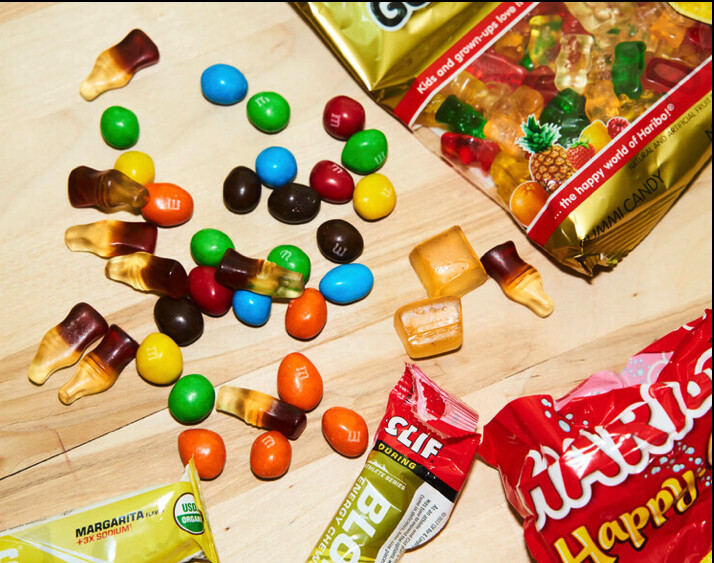
“Everything that we eat can impact how we feel and what we’re able to do throughout the day,” says Amity Lui, MS, RD, a New York City–based sports dietitian who works with runners.
High-quality fueling can mean the difference between navigating life in a fog and consistently crushing your days. Good nutrition can also better your running and overall health, allowing you to exercise with less fatigue, which boosts your performance and decreases risk of injury—all while supporting hormone health, digestion, metabolism, and immune functioning, says sports dietitian Yasi Ansari, MS, RDN, CSSD, spokesperson for the Academy of Nutrition and Dietetics.
In short, there’s a lot to gain from optimizing your eating habits. Here’s what experts recommend.
• Eat often during the day
The trend of intermittent fasting—where people abstain from eating for certain stretches of time—may have health benefits for some, such as those with type 2 diabetes. But what about for runners looking to optimize performance and feel energized? “You really need to have steady fuel throughout the day,” says Selvi Rajagopal, MD, MPH, assistant professor of medicine at Johns Hopkins University School of Medicine. That means no skipping breakfast or “forgetting” to eat lunch.
Rajagopal recommends eating every three to four hours to prevent drastic dips in blood glucose levels, which can lead to plummeting energy levels.
A better bet is to strive for three well-balanced meals spaced throughout the day plus several snacks in between. “Eating consistently is going to make a huge difference,” says Lui, who recommends runners fuel as often as every two hours, or even more frequently if hunger strikes.
• Strive for well-balanced meals and snacks
Carbs are commonly vilified, but they are an essential macronutrient, especially for runners. “Carbohydrates are the number-one source of fuel for endurance runners,” says Ansari, because they get broken down into glucose, which your body prefers to use for energy. Don’t skimp on carbs if you want to avoid fatigue.
At the same time, unless you’re fueling for a run, avoid eating simple carbs by themselves, as that leads to a rapid spike in energy followed by a drop, according to research. Instead, pair carbs with the two other macronutrients: fats and protein. This will help stabilize your blood sugar and provide sustained, steady energy.
Here’s a sample day of balanced fueling, from Rajagopal. Of course, tailor this to your preferences.
Breakfast: Oatmeal with fruit and peanut butter or Greek yogurt
Mid-morning snack: Apple with nut butter or carrots, hummus, and whole-wheat crackers
Lunch: A quinoa, farrow, or brown rice bowl with sweet potatoes, vegetables, and a lean protein, like chicken or canned tuna
Mid-afternoon snack: Cottage cheese or Greek yogurt with granola
Dinner: Half a plate full of veggies, a quarter or third filled with a starchy carb like potatoes, and the last quarter protein
• Refuel after you run–even if you’re not hungry
While the general advice of “eat when you’re hungry, stop when you’re full” can help you eat mindfully, exercise—especially intense exercise—can suppress hunger due to the release of certain hormones and the fact that blood gets diverted from the GI system toward working muscles. In fact, according to a recent poll of nearly 3,000 people on Runner’s World Instagram, 61 percent of respondents said they find it difficult to eat after a long run or hard workout. “It’s really hard to identify if you’re actually hungry immediately after a really hard run,” says Ansari. But waiting to eat can hinder your recovery and lead to a crash in energy, she says. So no matter how you feel postworkout, aim to consume at least a snack within 30 minutes and then follow that up with a full meal within one to two hours later, advises Lui.
If the thought of solid food soon after a hard run makes you queasy, turn to liquid nutrition, like smoothies and protein shakes. Prioritize carbs and protein, and aim for a ratio of 3 grams of carbs to 1 gram of protein following intense training, says Ansari. One of her go-tos is a smoothie with kefir, almond milk, or cow’s milk, 1 cup frozen mango, 1 banana, a scoop of protein powder, and granola or a side of toast and nut butter.
• Load up on micronutrients
High-intensity exercise—ahem, running—can stress your body and lead to feelings of fatigue. However, eating antioxidant-rich foods like fruits, vegetables, and leafy greens in particular can help combat those effects, says Ansari. Antioxidants help to fight free radicals and oxidative stress postrun, aiding in your recovery. To get your dose of these health- and energy-boosting nutrients, incorporate produce into your meals: Eat a cup of fruit at breakfast, have a side salad at lunch, and load up your dinner plate with veggies.
There are several other micronutrients commonly found in fruits and veggies (as well as other foods) worth adding to your plate. While a doctor can help you determine if you have a deficiency and need a supplement, it’s still important to consume foods that contain these nutrients.
Iron: A deficiency in this mineral can lead to fatigue and tiredness, both cognitively and while exercising, says Ansari. Vegan and vegetarian runners may be at increased risk of deficiency, as red meat is one of the best sources of bioavailable iron. Those who menstruate are also at increased risk, says Rajagopal. Increase iron stores by eating leafy greens (spinach, broccoli, and kale), whole grains, nuts, and tofu. Enhance iron absorption by pairing iron-rich foods with those high in vitamin C, such as fruits, bell peppers, and berries, says Lui.
Vitamin B12: Deficiencies can result in fatigue and shortness of breath, says Lui. Vegetarian and vegan runners may be more at risk of low stores, as animal products provide the highest sources. Seek it out in products like meat, fish, and eggs, as well as fortified cereals, whole grains, plant-based milks, and nutritional yeast.
Vitamin D: A deficiency that affects 42 percent of all Americans (not just runners), according to a survey, too little vitamin D can cause fatigue, increased muscle weakness, and pain, says Lui. Eat foods like canned fish, dairy products, and fortified products like plant milks and orange juice. The caveat: It can be hard to get enough vitamin D, says Rajagopal, so you may need a supplement. Again, consult your doctor.
• Avoid making dinner your biggest meal
Dinner is typically the biggest meal of the day, but that doesn’t necessarily support a solid night’s slumber, which is essential for optimal energy. “Most folks sleep better if dinner isn’t the largest meal,” says Rajagopal, explaining that “our bodies don’t digest and metabolize things as quickly in the evening” compared to earlier in the day.
Instead of getting the bulk of your nutrition at dusk, eat consistently throughout the day. Also have dinner about three hours before bed to lower your risk of sleep-harming issues, like acid reflux.
• Have a slumber-inducing evening snack
If you end up feeling hungry between dinner and bed, reach for a small snack an hour or two before snooze time, says Lui, and get strategic about which snack you choose to best support sleep (and thus improve your overall energy). Ansari recommends Greek yogurt with fruit and a side of trail mix—a combo that provides magnesium, a nutrient that in one study of older adults helped them fall asleep faster.
You may also consider foods containing tryptophan, an amino acid that plays a role in the production of serotonin and melatonin, which support the onset of sleep and relaxation, Ansari says. Options include turkey, banana, oats, and tart cherry juice.
WHAT ZAPS YOUR ENERGY
Minimize energy dips by avoiding these foods and habits.
ULTRA-PROCESSED FOODS / Foods high in sugar and low in protein, fat, and fiber can provide an energy jolt if eaten soon before and during a run. But chowing on them in your day-to-day can lead to a rapid spike in energy followed by a slump, says Selvi Rajagopal, MD. Instead, eat snacks that offer macronutrients (carbs, protein, and fat) and fiber, and those low in added sugar, says Rajagopal.
DEHYDRATION / Research shows that as little as 2 percent dehydration can negatively affect performance, says Amity Lui, RD. “Not being adequately hydrated can make the body feel like it’s working harder,” adds Yasi Ansari, RDN. Lui says a good rule of thumb is to check the color of your pee. If it’s the shade of lemonade, you’re hydrated; if it’s akin to apple juice, you need a drink.
SPORTS DRINKS OUTSIDE OF A WORKOUT / Unless you’re hydrating during or after a workout, steer clear of sugary beverages, including sports drinks and hydration aids, says Rajagopal. Instead, consider water with a squeeze of citrus fruit.
UNDERFUELING / When athletes feel fatigued, it can sometimes be because of nutrient deficiencies, but most often, it’s because they simply aren’t eating enough, says Ansari. Research identifies low energy availability as one of the most significant factors associated with illness and injury risk in endurance athletes.
Login to leave a comment
Should runners take a collagen supplement?
Collagen supplements have gained significant popularity in recent years for their potential benefits, which range from stronger skin, hair and nails to improved joint health and even relief from arthritis. Runners who are looking to prevent injuries or gain a performance edge might be considering adding collagen to their current supplement routine, but is it necessary? We spoke with registered dietitian Megan Kuikman (who writes the “Fuel Station” column in Canadian Running magazine) to find out.
What is collagen?
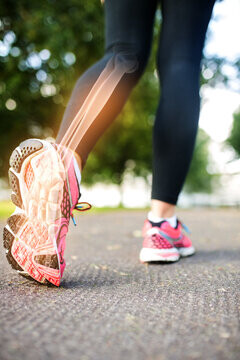
Collagen is the most abundant protein in our bodies and plays a role in maintaining the health and integrity of various tissues, including tendons, ligaments, cartilage and skin. You can consume collagen through animal foods in the diet, or through foods that contain added collagen, like Jell-O or candies.
What are the potential benefits of collagen supplements?
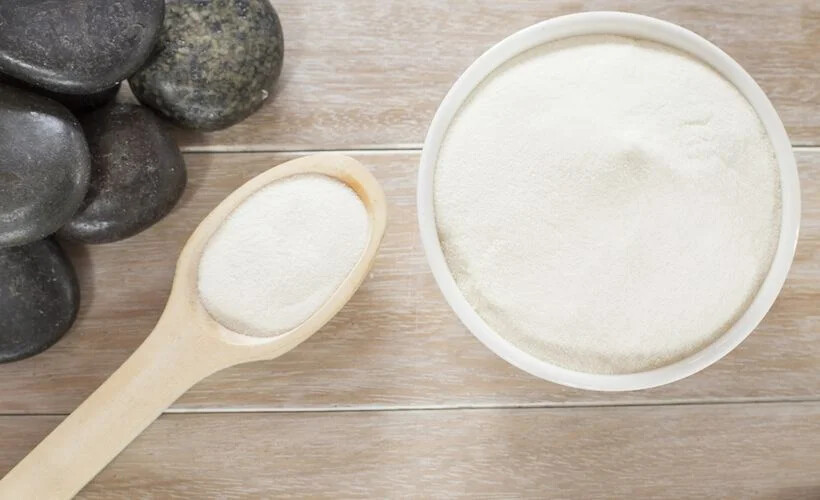
Kuikman says that research in this area is still new, so it’s difficult to say definitively whether collagen supplements are beneficial. Still, she says supplements may increase collagen production, which can thicken your cartilage and decrease joint pain associated with osteoarthritis. It is possible this could be beneficial for runners, whose daily mileage places a lot of repetitive stress on their knees and other joints, but more research is needed to fully understand the effects of collagen on joint health, especially in athletes.
“It may be beneficial for an injured runner who’s recovering from a tendon or ligament injury or for a runner who is prone to these sorts of injuries,” says Kuikman, “however, as per above, research in this area is still needed.”
It’s also important to note that collagen is a complex protein, and oral supplementation may not guarantee that it will reach the specific target tissues in significant quantities. The body’s natural collagen production is regulated by various factors, including diet, exercise and genetics, so if you’re trying to target a specific area (for example, an injured knee), supplementing with collagen may not necessarily lead to increased collagen synthesis in that specific tissue.
It’s worth mentioning that a well-rounded diet that includes protein-rich foods will provide the necessary amino acids for collagen synthesis in the body. Consuming a variety of protein sources, such as lean meats, fish, poultry, dairy, legumes, and plant-based proteins, can support overall tissue health, including the production of collagen.
Are collagen supplements safe?
“Collagen is a low-risk supplement, but there is not much data available to support its use in athletes,” says Kuikman. “Like all supplements, you can definitely take too much, and there is the risk that supplements may be contaminated with banned substances. This is a concern, as it could potentially lead to a \ if it were to contain a banned substance.”
How to choose the right supplement
If you are interested in adding a collagen supplement to your diet, you may want to consider consulting first with a dietitian or sports medicine provider, who can evaluate your individual needs, assess any potential deficiencies and provide personalized recommendations based on your goals and health status.
Collagen supplements are usually taken in the form of hydrolyzed collagen or gelatin (collagen extracted from animals), which means they are not suitable for vegan athletes. There are some vegan products available that claim to mimic animal-sourced collagen, but more work is needed to determine their effectiveness.
Kuikman adds that since vitamin C is important for collagen synthesis, the diet needs to be sufficient in vitamin C to get the most out of your supplement. You can also find some supplements that include vitamin C along with collagen.
The bottom line
Collagen supplements may be beneficial for runners who tend to suffer from joint pain and injuries, but we still don’t have very much research to support this. It is a relatively safe supplement, so if you do choose to add it to your daily regime, consider speaking with a dietitian or sports medicine practitioner who can help you make an informed choice.
No supplement can replace a well-balanced, healthy diet, so before you add any vitamins or supplements to your daily routine, make sure you’re doing your best to get all of your essential vitamins and minerals through natural food sources first.
by Brittany Hambleton
Login to leave a comment
Can’t Stand Black Coffee? Adding Milk May Decrease Inflammation.
A new study looks into the benefits of adding dairy to your morning cup of coffee
If your coffee ideal is one that includes a healthy dollop of milk, a recent study conducted by the University of Copenhagen may be of interest.

A team of researchers determined that the combination of milk and coffee – proteins and antioxidants – increases anti-inflammatory properties. Here’s a quick breakdown of the science:.
Polyphenols are compounds found in coffee (and other nutrient-dense foods) that lower blood pressure, reduce inflammation, and boost brain function. In the Copenhagen study, researchers examined the reaction between polyphenols in coffee beans and milk proteins.
They found that the two molecules bound together and became a powerhouse of inflammation defense. Therefore, the researchers concluded that drinking coffee with milk has more anti-inflammatory benefits than sipping coffee alone. It’s important to note that the study concerns only milk and not creamer. No research has been conducted on the latter.
Not a fan of dairy? There are other ways to increase the immune-boosting qualities of your morning cup.
Cinnamon
Try sprinkling 1/2 teaspoon cinnamon into your cup in the morning. This spice is packed with antioxidants, may help lower blood sugar levels, and even lower cancer risk. Make sure you’re using true cinnamon and not cinnamon sugar.
Nutmeg
A dash of nutmeg may help digestion, improve cognitive function, and, in some cases, relieve pain. Some studies suggest nutmeg may also improve sex drive.
Collagen Peptides
Collagen, whether it’s flavored or unflavored, mixes easily into coffee and provides protein, vitamin C, zinc, biotin, and more. Collagen may improve skin and hair, relieve joint pain and boost muscle mass.
by Outside
Login to leave a comment
Iraqi sprint coach receives lifetime ban for drugging athlete
On Wednesday, the Athletics Integrity Unit (AIU) announced the lifetime ban of Iraqi national sprint coach Karokh Salih Mohammed for giving an athlete the prohibited substances stanozolol and clenbuterol without the athlete’s knowledge.
The athlete, Danah Hussein of Iraq, is a two-time Olympian, eight-time national sprint champion and the country’s record holder in the 100m (11.24) and 200m (22.51). Hussein was her country’s flag bearer at the London Olympics in 2012.

Hussein tested positive during an in-competition urine test following her gold medal-winning finish in the 100m final at the Arab Championships in Rades, Tunisia, on June 17, 2021. She qualified to represent Iraq at the 2020 Tokyo Olympics, but was forced to withdraw, due to a provisional doping suspension.
According to the report, Mohammed was advised by a friend of the benefits of using stanozolol and clenbuterol in combination to enhance an athlete’s performance and help them lose weight. He went ahead and purchased the drugs, knowing they were on the Prohibited Substances List.

Mohammed said he had presented the pills to the athlete in a vitamin C container immediately before her race on June 17, telling her it was something that would relax her and help relieve pain.
The report says Mohammed was responsible for giving Hussein daily training doses for more than two years, as well as nutritional supplements and vitamins without the athlete’s knowledge of what she was taking.
Stanozolol and clenbuterol are both prohibited substances under the WADA 2021 Prohibited List.
“The coach has fundamentally abused his trusted position as an Athlete Support Person and admitted to deliberately opportunistic behaviour aimed specifically at doping an Athlete, without her knowledge, to enhance her performance and thereby his own reputation,” states the AIU.
Mohammed receives a lifetime period of ineligibility from the sport, while Hussein serves a three-year suspension effective from 16 July 2021.
by Marley Dickinson
Login to leave a comment
Plant-based runners: speedy grab-and-go meal ideas
Interested in eating plant-based but struggling to find simple, quick meals that are full of nutrition while still easy on the budget? The authors of Plant-Based Sports Nutrition have some tips and tricks for you.
Both registered dietitians, authors Dr. Enette Larson-Meyer and Matt Ruscigno suggest planning in advance as key to maintaining high-performance plant-based nutrition. Reading labels is important–with the many new plant-based alternatives to meat and cheese, it can be tempting to purchase whatever looks appealing. Check iron, protein, fat and calcium content, and look for options that have the equivalent nutritional composition of the products they’re replacing.
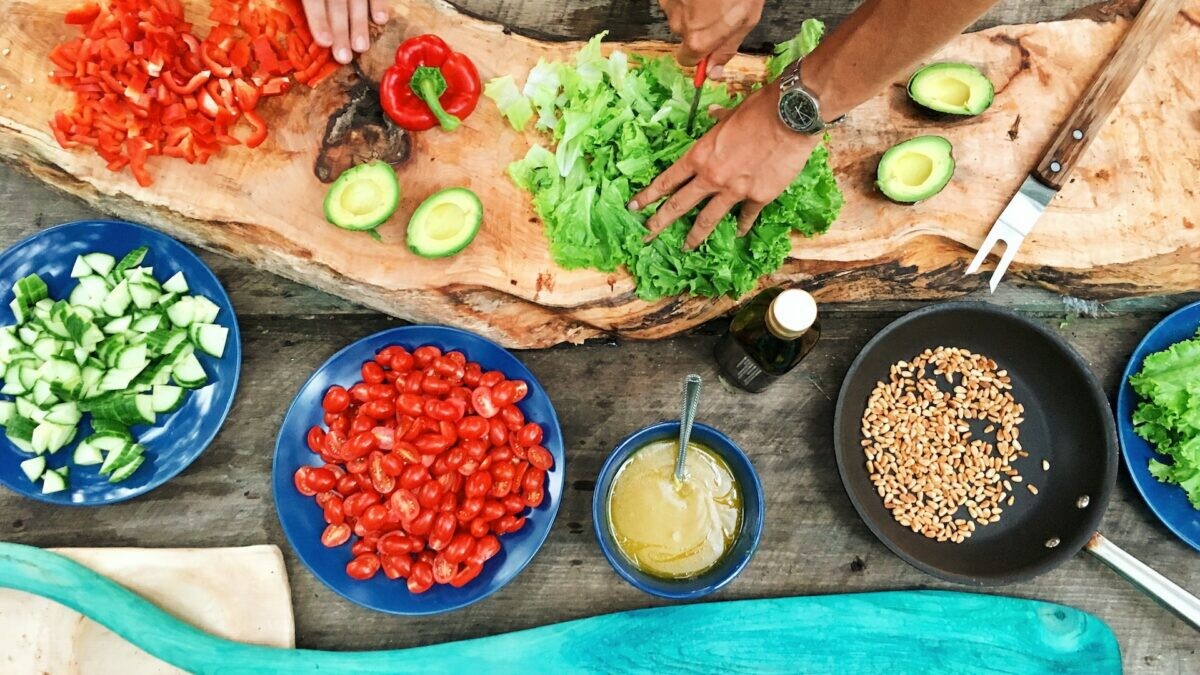
Larson-Meyer and Ruscigno also suggest adding a salad to any meal, with fresh and dried fruit tossed in to add both a diverse array of nutrients (calcium, vitamin C, vitamin E, iron, zinc, etc.) as well as carbohydrates. Adding nuts, beans or cheese (provided you’re not strictly vegan) can boost healthy fat and protein, as well.
It can be challenging enough to squeeze in a run alongside all the other things you may do in a day. Eliminate some of the stress by trying some of these quick make-and-take breakfast and lunch options.
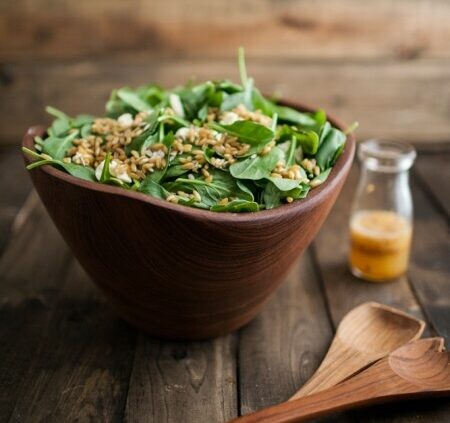
Grab-and-go breakfasts
Have some fresh or dried fruit in reusable containers on hand, and grab one of the following to make your morning ridiculously simple.
Homemade muffins made with grapeseed or canola oil and whole grains (try Shalane Flanagan’s recipe here)
Whole-grain toasted English muffin with low-trans-fat margarine or nut butter and jam
Dairy or soy yogurt, fruit and granola parfait (made the night before in a to-go container)
Breakfast cookies (make your favourite oatmeal cookies with half the sugar, orange juice as the liquid, and add dried fruit, nuts and ground flaxseed)
Quick portable lunches
Pack fresh fruit or veggies and/or whole-grain crackers or whole-wheat pretzels along with one of these easy-to-throw-together lunches and some healthy cookies.
Tomato, avocado, and sprouts on a whole-grain bagel
Black beans, lettuce, avocado and salsa in a spinach or whole-wheat roll-up
Black-eyed-peas spread (1 can beans, 1/2 cup parsley, 2 Tbsp olive oil, 2 Tbsp lemon juice, 1/2 tsp tarragon, garlic and pepper to taste) on flatbread or in a whole-wheat wrap
Dark leafy greens in a pita with chickpeas, kidney beans or white beans, and dressing of choice
Peanut butter, sliced banana, raisins and walnuts on whole-wheat bread
Red-pepper bean spread (1 cup white beans, 2 tsp finely chopped roasted sweet peppers, 1 tsp finely chopped scallions) on foccacia or flatbread
If you decide to maintain a plant-based diet for the long haul, keep your menu exciting by trying new foods and learning about nutrition. Once you nail the basics, planning nutritionally-balanced meals will become as much a part of your routine as training, and can be an enjoyable, easy part of your day.
by Keeley Milne
Login to leave a comment
Cranberries Can Prevent UTIs, Support Performance, and Offer More Health-Boosting Benefits
This holiday staple offers more than festive flare.
If you’re only eating cranberries once a year, you’re missing out on a wide array of nutrients and creative dishes. Cranberries have adorned Thanksgiving and holiday tables for hundreds of years. But this naturally tart red berry has many culinary uses. Plus, cranberries are packed with vitamins, minerals, and antioxidants and have been shown to improve heart health, reduce inflammation, and may even enhance performance.
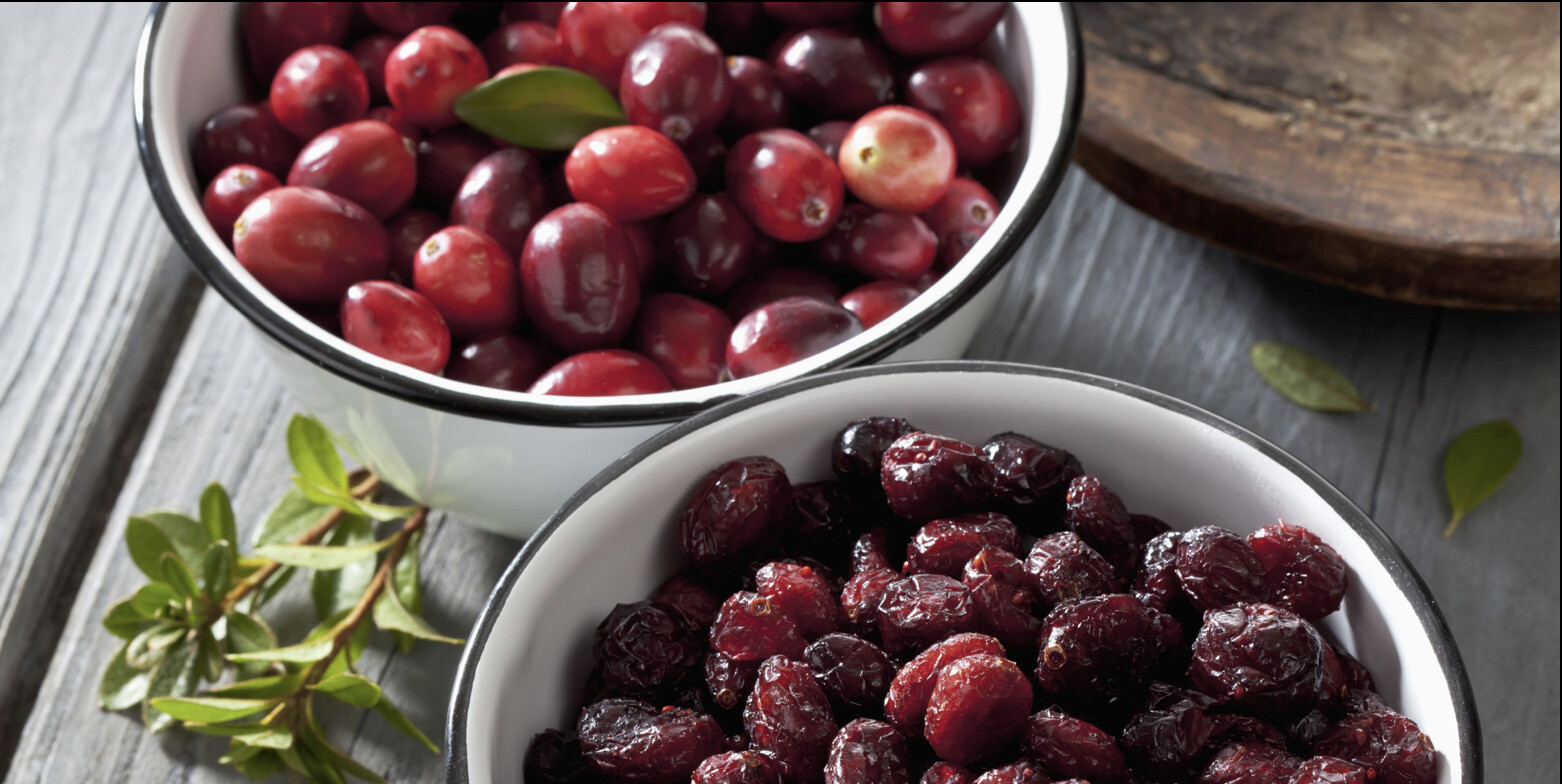
Not to mention that cranberries come in several forms—fresh, dried, and juiced—so you have multiple ways to add them to your diet.
Here, everything to know about cranberries’ benefits, including just how easy they are to add to your plate.
What nutrients will you get from cranberries?
Fresh cranberries are a good source of vitamin K and an excellent source of fiber and vitamin C. Beyond the nutrition label, they also have polyphenols or plant compounds that have been studied for their beneficial role in many health conditions.
According to the USDA, one cup of fresh, whole cranberries has:
46 calories
0.5 g protein
<1 g total fat
12 g carbohydrates
4 g fiber
4 g sugar
14 mg vitamin C
8 mg calcium
80 mg potassium
What are the health benefits of cranberries?
The Dietary Guidelines for Americans recommend two servings of fruit per day, thanks to the plethora of nutrients they offer. Cranberries, in particular, have been studied for their health properties, including these benefits:
1. They can lower your risk of chronic disease
“Cranberries are loaded with antioxidants, so they help defend your body against oxidative stress,” says Samantha Cassetty, MS, RD, plant-focused nutrition and wellness expert and co-author of Sugar Shock. Oxidative stress occurs when free radicals (cell-damaging compounds) outnumber antioxidants in the body.
Research links excessive oxidative stress to chronic conditions, including heart disease, type 2 diabetes, cognitive decline, and cancer. Recent research has found that eating cranberries boosts the antioxidant effect in the body and may fend off these conditions. “When you consume antioxidant-rich foods like cranberries, it helps to correct the imbalance [of free radicals],” adds Cassetty. The same research also points out the anti-inflammatory properties of cranberries—another important component of disease prevention.
2. They benefit your heart
“Cranberries provide numerous cardiovascular benefits,” says Lauren Harris-Pincus, MS, RDN, founder of NutritionStarringYOU.com and author of The Everything Easy Pre-Diabetes Cookbook . An abundance of research suggests that berries, in general, reduce (bad) LDL cholesterol, triglyceries and blood pressure, while increasing (good) HDL cholesterol.
“Additionally, cranberries may help improve the flexibility of your arteries,” says Cassetty. “When arteries become stiff, it can lead to high blood pressure.” The research suggests that cranberries can improve several risk factors for heart disease.
3. They prevent urinary tract infections
You’ve probably heard that cranberry juice can treat a urinary tract infection (UTI). While that’s not necessarily the case, cranberries have been studied for their role in urinary tract health. “Cranberries naturally contain the flavonoid, proanthocyanidin (PAC),” says Harris-Pincus. And it’s this flavonoid that likely blocks the buildup of bacteria and helps to prevent urinary tract infections.
A meta-analysis involving 23 studies and more than 3,900 participants backs up the claim that cranberries can help prevent UTIs in susceptible populations. The study found that those who drank cranberry juice had the biggest reduction in risk of UTIs, compared to those who took a capsule or tablet. In other words, having cranberries in your diet may stop UTIs before they start.
4. They may contribute to a healthy gut microbiome
“A growing body of [new] research suggests that the use of cranberries as part of a healthy diet can help maintain a beneficial population of gut microbiota,” says Harris-Pincus. Small studies in humans and animals show that eating cranberries may alter the gut microbiome in a positive way.
“Your microbiome regulates immune function, inflammation, cholesterol, blood sugar levels and mood, so it pays off when you have a healthy microbiome,” says Cassetty. Yet, more research is definitely needed before making general recommendations about cranberries and the microbiome.
5. They can support endurance performance
Fueling before a run is crucial for maximizing performance, and dried cranberries may be the perfect prerun snack. Packed with easy-to-digest carbohydrates (they have added sugar to improve palatability), they offer up energy for your muscles to maintain long miles.
In addition, the inflammation-fighting compounds in cranberries may help athletes recover faster.
The research on cranberries in the athletic population is lacking, but one study in rowers did find that supplementing with cranberry extract increased postexercise levels of antioxidants in the blood. This is important because strenuous physical activity can raise oxidative stress, and antioxidants can bring it down, as mentioned earlier.
How to add cranberries to your meals
“Cranberries are amazing because of their culinary versatility,” says Harris-Pincus. “Fresh, frozen, and dried cranberries are tasty assets to both sweet and savory dishes,” she adds. Here are some simple ways to add cranberries to your diet, from Cassetty and Harris-Pincus:
Bake cranberries into quickbreads, muffins, pancakes, and crumbles, because the sugar in the baked good will balance the tartness of the berries.
Use dried cranberries in nutritious dishes, like salads, roasted veggies, and grain-based bowls.
Add dried cranberries to a homemade trail mix made with popcorn and nuts.
Include fresh cranberries in baked oatmeal with a dash of maple syrup.
Create a cranberry compote in the microwave with fresh berries, water, your choice of sweetener and citrus. Enjoy it on waffles, pancakes, crepes, oatmeal, or as a sandwich spread.
Drop a few cranberries in a glass of champagne for a healthy garnish.
Add 1 to 2 tablespoons of cranberry juice to your favorite vinaigrette recipe for a tart pink dressing.
Replace the raisins with dried cranberries in your favorite childhood snack, peanut butter over celery, and make “red ants on a log.”
Combine cranberries with sweet potatoes and drizzle with maple syrup and olive oil. Roast for 30 minutes for a sweet and sour side dish.
The bottom line on the benefits of cranberries
Cranberries are affordable, versatile, and underutilized. Not only are they pretty to look at, but they are also good for your health. Whether you like them fresh, dried, or juiced, cranberries are worth adding to your meals. Incorporate them during heavy training seasons to get an added antioxidant boost.
by Runner’s World
Login to leave a comment
How to quickly react to, and heal from sports injuries
While playing sports, either professionally or just as a hobby, accidents happen suddenly, causing minor or major injuries. While prevention strategies can help you avoid them, an unexpected collision when you make a wrong move can result in serious and painful injuries. Therefore, be ready to react as soon as this happens, and if it’s serious, seek medical assistance immediately. In that way, you protect yourself from the worst outcome, and if you’ve been through this, follow the article for some tips on how to heal from a sports injury.
React Immediately

Some sports injuries can’t be treated and healed at home, so you need to react quickly. For instance, it often happens that one sprains or breaks an ankle doing a usual exercise, and it can have certain consequences. For that reason, check out the valuable pieces of advice at Science of Rehab, and let the healthcare professionals help you heal the injury. A sprained or broken ankle can cause you a lot of trouble, especially if it isn’t treated as it should be, so don’t put yourself in danger of having serious consequences. Seek medical treatment, be disciplined, and take care of it in the future.
Make Use of the Rice Method
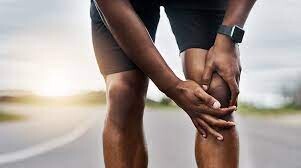
The “rice” abbreviation stands for rest, ice, compression, and elevation, which are major treatments for your tissue injury. The first step after the injury is to stop your activity immediately and rest for the first two days. Resting prevents any further injury, so this step is highly important. Further, apply ice for twenty minutes every three hours during the first days of being injured. The cold will prevent swelling and pain in your injured area. After that, wrap the injured area with an elastic medical bandage, which shouldn’t be too tight as to interrupt blood flow, and at the end, raise the injured body part because it reduces pain, swelling, and throbbing.
Allow the Injured Area to Heal
An injured body part will struggle to heal if you repeatedly use it after an injury. The pain in it is an excellent indicator that you don’t recover properly, so you shouldn’t ignore it. Often, the best possible option is to immobilize the injured body part and rest it completely to allow its complete healing. When you use the injured body part all the time, things might get complicated because an acute injury may become a chronic one, which could be difficult to heal.
Consult a Professional
Minor sports injuries typically heal and improve after two weeks of rest and a break from sport or exercise. A lack of improvement could be a sign you should consult a sports doctor, who’ll help you with clinical examinations and scans that will warn you to focus on a faster recovery with minor complications. Understanding your injury will facilitate your physical and mental recovery significantly. Also, you should consult your doctor about the exercise regime, which will help the healing process and ensure that appropriate milestones are achieved.
Food Can Help You
Just because you’ve injured yourself doesn’t mean you shouldn’t stay fit and healthy. First, if you’ve injured your knee, exercise your upper body with weightlifting. If you’re healing a shoulder injury, do some yoga or exercises for the lower body. Also, take care of the foods and supplements that can help the body heal faster.
Eat protein-rich foods like fish and meat, and eat citrus fruits, which are full of vitamin C that rebuilds tissues and has anti-inflammatory properties. Omega-3 fatty acids are great supplements you can find in chia seeds, salmon, and walnuts. As a result, choose your groceries carefully and avoid gaining too much weight, as this will also slow down your healing process.
Be Patient
This last step is often difficult when recovering from a sports injury, particularly over a longer period of time. Many athletes start their sports activities before they’re really ready, which often leads to re-injury and a much longer recovery period. One of the best ways to recover, among all the other tips, is to practice patience during the recovery and resist the urge to push your body too quickly. If you let your body heal at its own pace, you’ll be rewarded with a complete recovery and a bright future in sports.
In summary, a fast recovery from a sports injury requires discipline, medical expertise, and lots of patience. Seeking guidance from specialists while being responsible and careful not to further complicate the injury can make a significant difference in recovery time. Therefore, try to avoid negative thoughts or wrong tips from people who can’t help you, and your healing process will be easy and complete.
by Colorado Runner
Login to leave a comment
Cereal Can Fuel Your Running, Just Use These Tips to Find the Healthiest Options
Not just for breakfast, cereal can fuel your runs when eaten before or after the miles.
Cereal is a convenient, quick bite to put together, and because so many options fill the grocery shelves, it’s easy to find a few favorites for a nutritious pre or postrun snack or meal. And even though it’s still called “breakfast cereal,” it’s become much more than just what kids eat before school. But is cereal healthy? According to experts, it definitely can be, especially for runners.
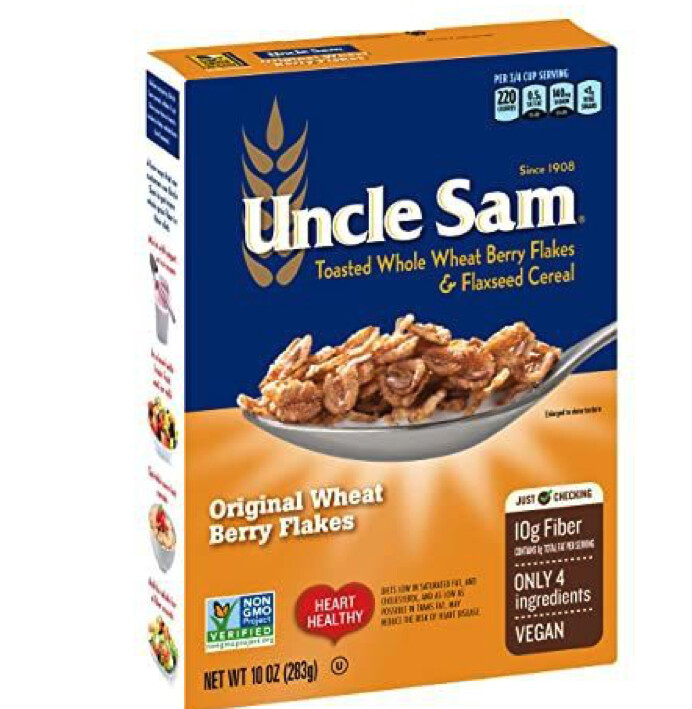
To help you make the most of your meal, here’s what to know about the health benefits of cereal, plus how to choose a good-for-you option.

Is cereal healthy?
“A bowl of cereal with milk or yogurt and maybe some fruit provides healthy carbohydrates and protein, which serve you well for fueling before a run or replenishing after a run,” Carrie Dennett, M.P.H., R.D.N., a Washington-based registered dietitian nutritionist and owner of Nutrition By Carrie, tells Runner’s World. “It’s a balanced choice that can also work well as a snack, which seems to be how more people are eating ‘breakfast’ cereal nowadays.”
What should you look for in a healthy cereal?
Part of the appeal of cereal is, of course, just pouring as much as you want into your bowl, but because so many cereals have a lot of sugar, it’s important to pay attention to portion sizes. “Remember that the recommended serving size on a package of cereal is intended to be meal size,” says Dennett. You may not need the full serving size, especially if you’re eating it as a snack or adding fruit and milk to the bowl.
To make sure you keep that sugar number in check, read the nutrition facts. “Make sure the cereal has no more than 5 grams of added sugar, or 10 to 12 grams of total sugar, per serving,” Dennett says. Also, a quality cereal will have about 3 to 4 grams of protein per serving, as well as at least 3 grams of fiber.
“Look for one that’s obviously whole grain, such as oatmeal, or labeled as ‘100% whole grain,’” Dennett adds. The first ingredient listed should be a whole-grain, which may be wheat, oats, brown rice, or corn, or ancient grains such as sorghum, quinoa, or millet, she says.
When you find a cereal or two that you like, Dennett encourages you to tune into your body’s cues to fine-tune the right portion size for you. “You want to move away from a rules-based approach: I can only have the serving size stated on the package or a mindless approach: I’ll keep pouring until the bowl is full,” she explains.
4 Healthy Cereals
Organic Sprouted Whole Grain Cereal-
A mixture of whole grains, including millet and spelt, this cereal provides the carbs with zero sugar. You also get 6 grams of fiber and 8 grams of protein.
GO Breakfast Cereal
Higher in protein than other cereals (11 grams) and fiber (13 grams), this option makes for a good meal postworkout.
Original Wheat Berry Flakes
Containing whole-grain wheat, flax seed, barley malt, and salt—just four ingredients—this cereal packs zero added sugar, 8 grams of protein, and 10 grams of fiber.
Joe's O's
The whole shebang in a bowl—you get fiber (3 grams), protein (3 grams), and whole grain oats as the first ingredient.
What should you add to cereal to increase health benefits?
Now’s the time to get creative with your cereal. “What you pour over it or mix with it can up the protein even more,” Dennett says. Low-fat cow’s milk is always a good choice as it contains four grams of protein in a half-cup. You can also opt for dairy-free alternatives, or consider yogurt or cottage cheese.
“Yogurt has more protein than milk, with most Greek and Icelandic yogurts having more protein than traditional yogurt,” Dennett explains. “Some people find that their guts are happier with yogurt than with fluid milk—especially with quality yogurts that have been cultured with probiotic bacteria—which may be most important when eating before a run.”
Topping your cereal with fruit, like bananas or berries, also ups the nutrition, Dennett says. Bananas add potassium and berries add vitamin C, as well as disease-fighting antioxidants and filling fiber. The addition of fruit will also help the flavor if you’ve chosen a low-sugar cereal that needs a little sweetness boost, or if you want some sugar to balance the tang of yogurt or blandness of cottage cheese.
What about fortified cereal?
One benefit of cereals is that they are generally fortified with essential nutrients, such as vitamin D, an important vitamin for bone health, among other benefits. However, just because a cereal is fortified doesn’t mean it’s “healthy,” Dennett adds. Lots of sugary cereals are technically “fortified,” so go back to checking the ingredients and nutrients, before buying one with the fortified stamp.
The bottom line on healthy cereals
No amount of fiber, fruit, or protein will make a cereal right for you if the high fiber, lactose, or other element of your bowl upsets your digestive system. “As with any prerun snack or meal, each runner needs to test a ‘good idea’ against what their body actually tells them,” Dennett says.
“Running, jogging, or even walking increase gut motility, specifically emptying of the stomach,” Dennett adds. “Movement makes our digestive systems work a little more quickly than they do when we’re sitting still. The standard recommendation is to wait for two to three hours after a meal before going for a run, and also make sure the meal isn’t large or high-fat, which is why cereal, milk, and fruit can work well.”
Ultimately, Dennett concludes, “every runner has to experiment with what works for them, and trust what their body is telling them.”
Login to leave a comment
I'm A Sports Nutritionist And These Are By Far The Three Most-Common Issues I See With My Athletes.
Question: "You've been seeing clients for many years and you're an accomplished elite mountain athlete. What are three themes you see folks getting wrong in their approach to endurance nutrition?"
As a sports nutritionist who works with athletes on a daily basis, I can tell you that I've seen it all. And that should not be surprising - our world is flooded with (mis)information on a daily basis. Eat this! Don't eat that! This food is healthy! This food group is unhealthy! This diet is the key to performance! Take this supplement, promise it will make you run as fast as Killian!
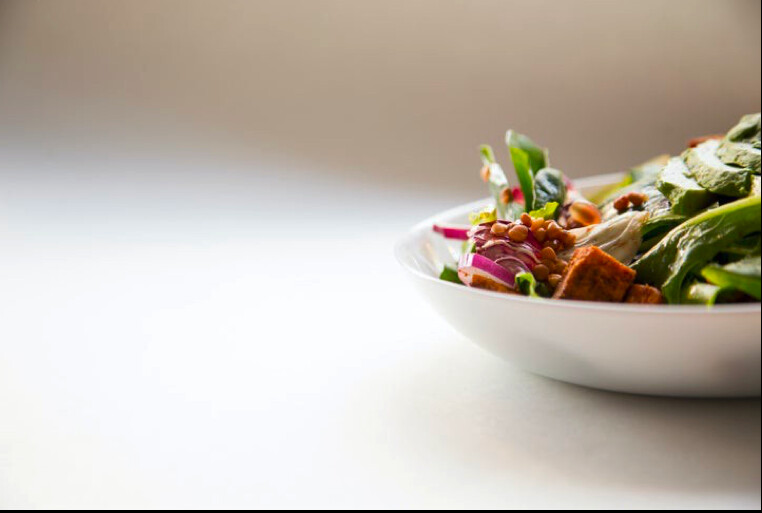
Humans are faced with making over 200 decisions about food every day, and yet most of us can't even decide what to make for dinner tonight. Combing through the hefty amount of food information thrown in our faces everyday through social media, the news, athletes we admire, and our peers can be overwhelming and stressful, even for a trained nutritionist.
As a general consumer of media and an athlete myself, I totally get it. Because of that, I have the utmost amount of empathy for my athletes who come to me feeling totally lost about what they should and shouldn't eat, and what they can do to improve their performance through nutrition.
That's why I started taking close notes on some of the most common questions from my endurance athlete clients. Here are three of the most common nutrition issues I see:
Issue #1: Not Eating Enough
The biggest issue I see is athletes not eating enough. Training and life are huge stressors, and even though most of my athletes have really good intentions of eating enough, they are often unaware just how much they really do need to eat to account for these stressors.
There are so many things that can complicate this, such as a change of appetite post-run, underfueling during runs, or just the sheer amount of hours spent on your feet, which can take away from time spent eating. It can be really hard to eat enough, so athletes need to devote as much time, effort, and attention into eating as they do to training, or to comparing the specific details of how the Hoka Speedgoat 5 is different from the Speedgoat 4.
Chronic undereating, whether purposeful or accidental, can lead to a variety of hormonal changes that can negatively affect your immune system, put you at higher risk for injury, and negatively affect your performance.
I've said it before, and I'll say it until the day I die - a real food diet full of nutrients and moderation, and one that brings us both physical and emotional satisfaction, is the secret to performance.
I always tell my athletes that, when in doubt, eat more! It's rare that an athlete will eat too much, even if they really try. Double up your servings, add extra snacks, eat more food before, during, and after runs, always eat dessert, and keep fun foods around the house - these things can help an athlete reach their daily calorie intake.
Personally, I'm a huge fan of adding avocado to anything and everything I can - tacos, toast, crackers, rice bowls, even smoothies. There's not an easier and more delicious way to boost calories, micronutrients, and healthy fats. Or my personal favorite: "pint of ice cream a night" tradition, which is by far the most fun and tasty way to get an extra 1,000 calories!
Issue #2: Believing in a Silver Bullet.
Just like you cannot outrun a bad diet, you cannot take a bunch of supplements to override poor food choices. I've seen athletes with a supplement list longer than my weekly grocery list.
While it might seem like the easy route, it will not always replace the benefits that come from eating real, nutrient-dense foods. While there are some exceptions for athletes on restrictive diets, and those with health issues, it can be possible for a person to get all of the nutrients they need from a balanced, nutrient-rich diet. For example, vegans might increase their dietary iron intake by making chili, which combines iron-rich beans with tomatoes. The vitamin C found in tomatoes can boost iron absorption in these non-heme, iron-rich food sources.
Supplements like fancy green powders, mega doses of multivitamins, and meal replacement powders are attractive due to their ease, but they are often just a short-term solution with short term benefits. Nutrient-dense, real foods will be much better absorbed and tolerated since real foods contain an array of things like vitamins, minerals, fiber, and antioxidants. These work synergistically to provide your body with what it needs to function well and efficiently.
More isn't always better, either. When we take certain types of supplements, we run into the risk of toxicity, especially in terms of fat-soluble vitamins (A, D, E, and K) and iron. This can harm internal organs and lead to severe, long-term damage.
If we take high levels of water-soluble vitamins (B vitamins and vitamin C), we're really just making some really expensive urine, as we pee out everything that our body doesn't need. Either way, we're probably just throwing money down the toilet (literally) or setting ourselves up for potential future health problems. We are much less likely to reach these toxic levels when we are able to consume these nutrients through food, and your body will utilize them a lot better.
Issue #3: Following a Specific Diet in Hopes to Achieve Better Performance.
You name it, I've seen it. I've seen athletes follow restrictive diets like keto, paleo, and gluten-free, even diets as outrageous as the grapefruit-and-bacon diet, in hopes that this "magical" diet will easily help them achieve their 50K PR with the snap of their fingers.
Most often, an athlete has been influenced by a pro athlete following that same type of diet, or maybe someone in their run group has found success while following one of them. And while I'm sure that there are some individuals out there who have found success following a specific, restrictive diet, it is by no means the secret to unlocking your potential or improving your performance.
Food plays many roles for us - physical, emotional, social - and its role on our physical and mental health is multifaceted. If we restrict foods (and therefore happiness!) with the hope of increasing our performance, our performance will undoubtedly suffer in the long term. If mental stress impacts our body the same way physical stress does on the cellular level, then stress related to restriction and dieting will negatively contribute to our overall health, affecting our performance and longevity in the sport.
I've said it before, and I'll say it until the day I die - a real food diet full of nutrients and moderation, and one that brings us both physical and emotional satisfaction, is the secret to performance.
Alex Borsuk Hasenohr, M.S., is sports nutritionist and professional trail runner for Dynafit. She is passionate about helping athletes reach their full potential through the use of practical nutrition, and she can be contacted through her website.
by Trail Runner Magazine
Login to leave a comment
The Health Benefits of Sweet Potatoes and Why Runners Should Eat Them All Year
You don’t need to save this veggie for the fall.
You might relate sweet potatoes to the fall or holiday season. But there’s good reason to add them to your plate all year. In fact, considering the plethora of health benefits you get from sweet potatoes, they’re certainly worthy of adding to your list of foods to fuel your runs.
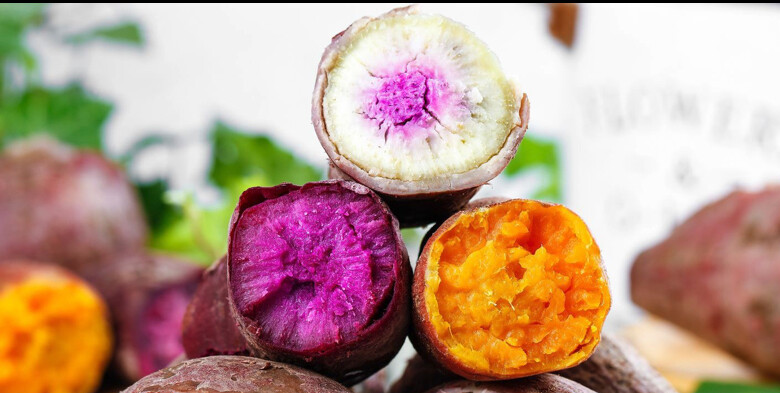
What are the nutrition facts for sweet potatoes?
Just like regular potatoes, sweet potatoes come in a variety of colors and tastes, from orange to purple to cream and ranging in level of sweetness. This means, also just like regular potatoes, the nutritional value of any given sweet potato will vary slightly depending on the type. But ultimately, no matter which kind you buy, sweet potatoes pack the nutrients runners need.
For example, a study published in the journal Food Measure in 2017 examined 14 varieties of Virginia-grown sweet potatoes. Researchers determined the sweet potatoes with lighter colored flesh had the highest starch content, while those with purple flesh had the highest amount of flavonoid and phenolic compounds, which are known for helping to reduce inflammation. Orange flesh sweet potatoes contain the most sugar, according to the research.
All these different types of sweet potatoes are similarly rich in vitamins and minerals such as vitamin A, vitamin B6, vitamin C, potassium, and also fiber, says Robin Foroutan, R.D.N., integrative and functional dietitian in private practice in Garden City, New York. “For example, orange sweet potatoes are richest in beta carotene. But the purple ones are the highest in an antioxidant called anthocyanins. The pigment is a reflection on the amount of the antioxidants. But they’re all healthy for us,” she explains.
Just how healthy? According to the USDA, a medium sweet potato contains:
115 calories
2 g protein
<1 g fat
27 g carbs
4 g fiber
9 g sugar
347 mg potassium
41 g sodium
41 g calcium
27 mg of magnesium
19 mg of vitamin C
That’s a whole lot of nutrition for one sweet potato.
What are the health benefits of sweet potatoes?
There are multiple ways you can benefit from adding sweet potatoes to your plate.
As we mentioned, sweet potatoes pack nearly 4 grams of fiber, which supports good gut health. You can encourage the formation of resistant starch (a gut-friendly fiber) in a sweet potato by cooking it and then letting it cool for an hour, says Foroutan. This starch is a very important prebiotic, which feed probiotics—both are super important for the gut, she explains.
Also, sweet potatoes contain a variety of antioxidants, which are known for helping the body fight free radicals and keep you healthy. For example, orange flesh sweet potatoes are rich in beta carotene, the antioxidant that causes its orange hue and helps runners fight inflammation, says Kelly Pritchett, Ph.D., R.D., C.S.S.D., professor of nutrition and exercise science at Central Washington University. This makes sweet potatoes a great recovery food because cooking them enhances the availability of beta carotene which can help runners combat the oxidative stress they build up on the run, Pritchett says.
A review published in the journal Nutrition Research supports the idea that beta carotene can reduce oxidative stress. Meanwhile, a review published in the Archives of Biochemistry and Biophysics in 2018 also highlighted beta carotene as an antioxidant that can help improve cognitive function, skin health, and immunity.
Sweet potatoes also contain 27 grams of carbohydrates, and those carbs are considered complex, says Pritchett, so they can provide runners with steady energy. This is because, Foroutan explains, complex carbs can be broken down in the body more slowly than refined carbs. Meaning complex carbs take longer time to digest and have slower impact on blood sugar.
However, the most powerful way to maintain steady blood sugar is to combine any carbohydrates with protein and fiber, so Foroutan suggests avoid eating this veggie alone unless you’re having it soon before a run and want those carbs more quickly available for fuel.
How can you incorporate more sweet potatoes into your diet?
The best way to eat a sweet potato, Foroutan says, is baked with either chicken, turkey, lean grass-fed beef, lentils, eggs, and/or other veggies. To mix things up and get creative, consider cubing up a few different colored sweet potatoes and roasting them together for a side dish, or making a sweet potato hash and adding them to your breakfast plate with eggs and spinach, she says.
The combo of carbs and potassium make sweet potatoes a great prerun snack. To have one before you hit the road, bake them, then sprinkle with a bit of salt. Just be mindful of their fiber content. “Runners will want to experiment in training to see how their gut responds to eating them prerun,” says Pritchett.
If you’d rather save sweet potatoes for after your workout, Pritchett suggests mixing them into a recovery smoothie, or topping them with beans, cheese, and salsa for dinner.
One thing to avoid: frying sweet potatoes, as the mixture of high temperatures, oils, and starch creates the formation of a compound called acrylamide, which is known to be a potential carcinogen, Foroutan says. Also avoid adding too much marshmallow topping, which is the fastest way to turn this sweet veggie into a sugar bomb, she says.
by Runner’s World
Login to leave a comment
You Might Be Surprised By All the Major Health Benefits of Chia Seeds
These seeds might be tiny but they pack a mighty dose of nutrients.
You might remember the television commercials hawking a fuzzy green clay pet to the catchy tune of ch-ch-ch-chia! What caused the terracotta puppy to sprout green? A sloppy paste of wet chia seeds. Very few of us at the time considered the seeds something that could add a nutritional boost to our diets, and instead, just something that made a novelty product fun to see. But now these tiny chia seeds have reached superfood status, as they pack a serious nutritional punch. And, in this case, one that is not overhyped.
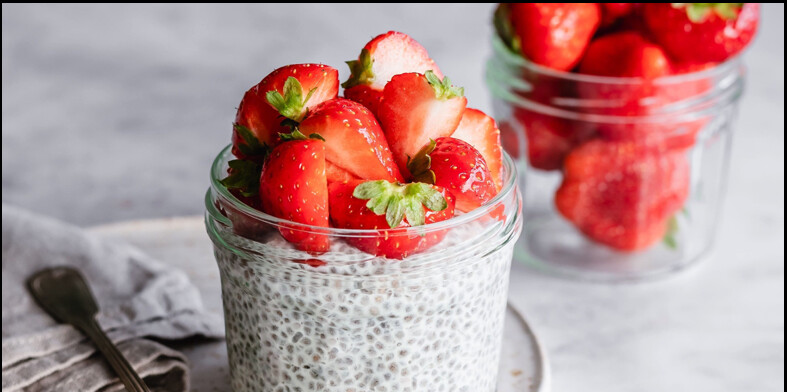
Read on to find out about chia seeds’ benefits and why you would be wise to sprinkle more into your life.
Chia Seeds’ Origin
Chia is a small, subtlety flavored seed that comes from an annual herbaceous plant, Salvia hispanica L., a member of the mint family native to Mexico and Central America. Once a food prized by the ancient Aztec armies, chia was cultivated by Mesopotamian cultures, but then essentially disappeared for centuries until the middle of the 20th century, when it was ‘rediscovered.’
The Health Benefits of Chia Seeds
Don’t let their small stature fool you: chia seeds have a large nutritional impact. In fact, a 1-ounce serving (about 2 1/2 tablespoons) of chia seeds contains:
138 calories
5 g protein
9 g fat
1 g saturated fat
5 g omega-3 fat
12 g carbs
10 g fiber
“Chia seeds are a convenient and nutrient-dense food that can help runners meet their nutritional needs,” says Dana Norris, M.S., R.D., C.S.S.D, dietitian of Eleat Sports Nutrition. “That’s because they provide protein, omega-3 fatty acids, fiber, and many other nutrients like magnesium, calcium, phosphorus, and potassium.”
Here, what you’ll gain from eating chia seeds:
1. Mega-healthy fat
Some people still consider high-fat foods like chia as the enemy, but they’re our allies in health when they possess the right types of fat. Only about 11% of the fat present in chia seed is saturated, with the rest being health-benefiting monounsaturated and polyunsaturated.
In the case of chia, the most notable polyunsaturated fat is alpha-linolenic acid (ALA), a type of omega-3 fatty acid that is deemed essential and therefore must be obtained from the diet. An analysis of data from 41 studies that was published in the journal BMJ linked a high intake of alpha-linolenic acid to a 10% lower risk of all-cause mortality, an 8% lower risk of death from cardiovascular disease and an 11% reduced risk of death from coronary heart disease, compared with lower consumption levels.
Other research has also suggested that this plant-based omega-3 fat can be protective against developing heart disease. Mechanisms aren’t yet fully known, but it might be that this fat helps lower inflammation in the body.
The omega-3 content of chia could also be one reason why some research suggests that consuming it daily could help drive down blood pressure numbers. But this benefit has only been demonstrated in those with existing hypertension and may not occur in healthy runners who don’t have troubling blood pressure levels.
Also beneficial: Chia seeds provide a 3-to-1 ratio of omega-3 to omega-6 fatty acid. “The standard American diet tends to be much higher in omega-6s than omega-3s, which can increase inflammation,” notes Norris. “So eating these seeds is a great way to consume more omega-3s and help improve this fat ratio in your diet.”
2. Filling fiber
A mere tablespoon serving of chia seeds delivers about 4 grams of fiber. That is significant considering that many people struggle to reach their daily quota—men typically require about 38 grams of fiber, while women should aim for 25 grams. “So a daily serving or two of chia can make it a lot easier for runners to get enough fiber for better health,” Norris says.
The findings of a study published in the journal The Lancet suggests that high-fiber eaters (those who consume at least 25 grams a day) have a 15% to 30% lower risk of heart attack, stroke, type 2 diabetes, colorectal cancer, and cardiovascular-related death compared to people who eat much less fiber.
“Dietary fiber helps to regulate the digestive system, feeds the good bacteria in the gut, promotes satiety (the feeling of fullness), positively impacts cholesterol levels, and helps manage energy levels throughout the day,” Norris tells Runners World.
A good portion of the fiber in chia hails from the soluble form of this carbohydrate. When exposed to liquids in your digestive tract, this soluble fiber forms a gelatinous coating that can slow down the digestion of your meals and snacks. There are a few benefits of this: For starters, this helps bulk up your stool and guard against constipation and diarrhea. It can also help you better manage blood sugar levels, which can make your energy more stable and lower the risk for certain metabolic conditions, like type 2 diabetes.
Slower digestion may also improve satiety to help with overall calorie intake regulation. In the best-selling book Born to Run, author Christopher McDougall reported that the Tarahumara indigenous group in Mexico, who are known for their world-class running endurance, often consume a chia drink before endless runs to help quell hunger. Just keep in mind, it’s probably not a good idea not to experiment with consuming chia before an important run in case this fiber causes you gastro problems.
3. Bone-building micronutrients
With about 15% of the daily need for calcium in a 2-tablespoon serving, chia seeds are a viable non-dairy source of calcium. “Chia seeds can be a helpful way for athletes to increase their calcium intake, especially if they do not consume dairy products,” says Norris. She adds that magnesium and phosphorus are two other micronutrients in chia that also work to improve bone health.
Additionally, you get iron in chia seeds, a mineral necessary for helping transport oxygen to your working muscles, and, in turn, something that is vital for maintaining peak performance. Though the form of iron in chia and other plant-based foods is not as well absorbed as that in meats, you can help partially remedy this by consuming the seeds with a source of vitamin C, such as berries, which improves absorption rates.
There is also a healthy amount of manganese in chia, which the National Institutes of Health says is involved in protein and carbohydrate metabolism and proper immune system functioning.
4. Disease-fighting antioxidants
Nutrition analysis has revealed that chia seeds deliver a range of useful antioxidants including caffeic acid, rosmarinic acid, myricetin, and quercetin. Antioxidants are compounds that roam the body looking for cell-damaging free radicals to knock out. And in doing so, are thought to help reduce the risk for a number of chronic diseases, including cancer. But we don’t yet have any data to link specific antioxidants in chia seeds with disease prevention.
But there’s still an important benefit to these chia-backed compounds. “The antioxidants in chia seeds benefit muscle recovery as they help reduce inflammation in the body, which can be caused by strenuous exercise,” adds Norris.
5. A surprising amount of protein
As more people pivot to plant-based proteins, it’s helpful to know that chia seeds are a fairly good source. You get about 2 to 3 grams in each tablespoon. That makes them more protein-dense than most nuts, including almonds. In fact, a study in the Journal of Agricultural and Food Chemistry determined that chia seeds supply a healthy balance of essential amino acids making them helpful in muscle recovery and muscle building for athletes.
Just know that other plant foods like tofu, beans, and tempeh still make it easier to meet overall protein needs if following a meat- and dairy-free diet, considering they contain a higher total amount of macronutrient.
How to Eat More Chia Seeds
Chia seeds come in both black and off-white, but there is little flavor difference and no proven major nutritional advantages of choosing one over the other. Unlike flax, chia does not need to be ground for its nutrients to be properly absorbed in your body.
Eating more chia can be as simple as sprinkling it over your oatmeal, yogurt, cottage cheese, steamed or roasted vegetables, and fruit salads. Norris points out that you can also blend them into your smoothies for a nutritional boost and incorporate them into homemade energy bars and balls.
The high amount of soluble fiber in chia forms a gel when mixed with water—a quirk that you can take advantage of to create better-for-you puddings and jams. For instance, for a nutritious chocolate pudding blend together 1/2 cup milk, 1/2 cup plain yogurt, 1 tablespoon cocoa powder, 1 teaspoon honey, 1 teaspoon vanilla extract and 1/2 teaspoon cinnamon. Pour into a jar and stir in 3 tablespoons chia seed. Seal shut and chill until thickened, about 2 hours. Or make a thirst-quenching, hydrating chia fresca by stirring together 1 cup water, 2 teaspoons chia seeds, juice of 1/2 lemon or lime and 2 teaspoons honey or agave syrup. Let sit for a few moments to thicken slightly.
The same gelling quality lets you create a substitute for eggs for baking. For each egg called for in a recipe, mix 1 tablespoon chia seeds with 3 tablespoons water and let sit for about 10 minutes, or until a goopy texture has formed. You can then use this to create a binding effect in a recipe much as an egg would.
Made by finely grinding up whole chia seeds, you can also add chia powder to baked goods like muffins and cookies, as well as the batter for your Sunday pancakes. Use it instead of breadcrumbs in recipes such as meatloaf or stir it into a pot of simmering oats.
by Runner’s World
Login to leave a comment
Foods to add to your grocery cart this spring, these seasonal foods will keep you running strong during the spring racing season
While parts of the country are still grappling with the last of their winter weather, runners can take heart knowing that spring is on its way. Not only do the warmer temperatures mean we can finally break out our shorts and t-shirts and work on our watch tans, they also mean local produce will begin popping up on grocery store shelves. As you’re doing your shopping in the next few weeks, look out for these foods to give your nutrition a spring cleaning.
Asparagus
Asparagus season starts early, so expect these slender green stalks to show up at your local farmers market any day now. A fantastic food for runners, asparagus contains the antioxidant glutathione, which helps repair the oxidative damage that occurs in your muscles after long, hard runs. This can help reduce your recovery time so you can feel fresh for your next run.

Asparagus also contains inulin, a prebiotic fibre that supports gut health. Having a healthy gut is important for runners because it keeps your immune system strong, which becomes even more crucial when you’re in the middle of a hard training block.
Beets
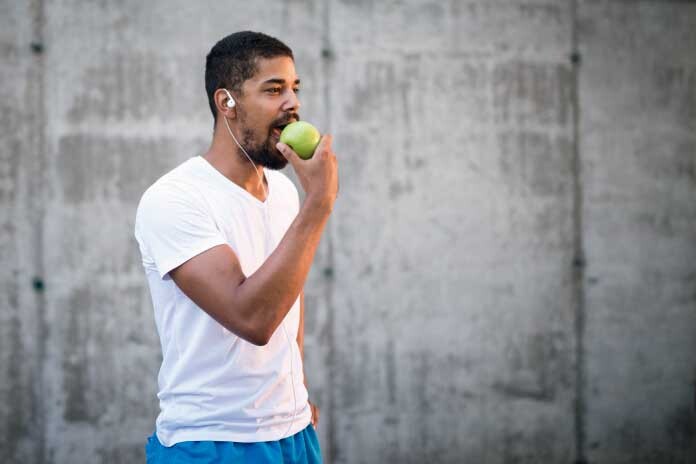
These earthy veggies have been in the spotlight before, thanks to their ability to increase the levels of nitric oxide (NO) in your blood, which increases blood flow to the muscles, stimulates mitochondria growth and strengthens muscle contractions, leading to significantly enhanced endurance in athletes. (Bonus: have some watermelon with your beets to boos their effects)
Beets are also high in folate, which helps your body regenerate healthy red blood cells that are needed to transport oxygen to your muscles during activity, as well as magnesium and potassium, both important nutrients to help you recover after a run.
Kale
Kale has hefty doses of over 20 nutrients and contains more than 45 different flavanoids that fight against oxidative stress and chronic inflammation. This can help you recover faster after hard runs and reduce muscle soreness so you can continue training, day after day.
Strawberries
Local strawberries start appearing on grocery store shelves near the end of spring and the beginning of summer, and they are worth the wait. These tasty little berries contain high levels of polyphenols and vitamin C, both of which can help repair muscle damage after a run. They’re also a good source of potassium, which can replace what you lost through sweat after a warm spring run.
Salmon
While you can get salmon year-round, spring is prime time for this healthy fish. Salmon is an excellent source of DHA and EPA omega-3 fatty acids, which reduce your risk for cardiovascular disease, improve your brain health and reduce your risk for injuries. They’re also great for fighting inflammation, which is especially important for runners, who often have higher levels of inflammation caused by heavy training. Salmon is also a great choice for runners who don’t eat dairy because it’s high in calcium and vitamin D, which are important for bone health.
Spring onion and garlic scapes
Both spring onions and garlic scapes are full of sulfur-containing compounds that fight inflammation to help speed up recovery after a hard run. Milder than regular garlic and onions, these goodies are delicious when tossed into a salad or stir fry. (As a bonus, you can often find large bundles of garlic scapes at farmers markets for barely a few bucks!)
Cucumber
The humble cucumber is a spring salad staple and contains at least 73 different phytonutrients, including Quercetin and Naringenin, two antioxidants that can reduce your risk for illness and injury. They’re also fantastic for re-hydrating after a warm run, thanks to their high water content.
by Brittany Hambleton
Login to leave a comment
Here's How Many Servings of Fruits and Vegetables You Should Eat Per Day
Do you know how many servings of fruits or vegetables you should eat per day? If your answer is no, you’re not alone. It turns out most of us don’t get enough fruits and vegetables in our diets, according to the latest USDA Dietary Guidelines for Americans. But of course, the key to making sure you’re eating enough produce is actually knowing how much to eat.
So to help you fill up on these colorful foods, we explain exactly how many servings of vegetables and fruit you should aim to eat each day and why it’s a smart idea to hit that target. Plus, a few ways you can increase your intake.
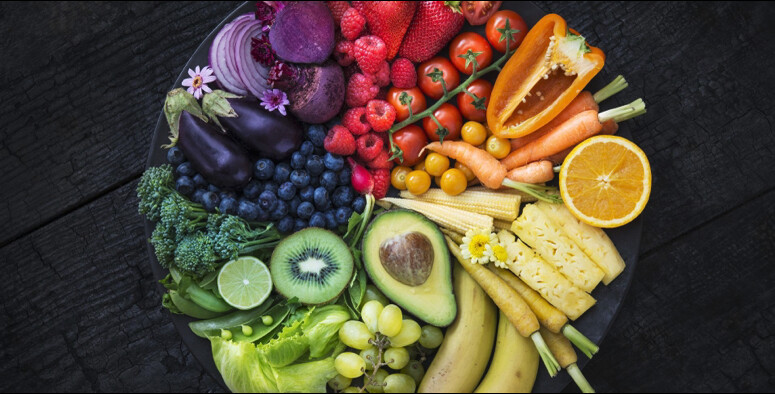
So, how many servings of vegetables and fruits should you eat a day?
Adults who consume 2,200 calories a day should aim to eat at least 3 cups of vegetables and 2 1/2 cups of fruits each day, according to the USDA. But, if you’re consuming more calories, then you’ll need to up your intake.
“Portion goals vary with gender and size, but most of us need at least 3 to 5 cups of vegetables per day and 2 to 4 cups of fruit,” Julie Stefanski, registered dietitian nutritionist, C.S.S.D and spokesperson for the Academy of Nutrition and Dietetics tells Runner’s World. “Vegetable and fruit goals are set as ranges, with the lower end preventing vitamin deficiencies, and the upper end of the range promoting long-term health,” she says.
Eating the minimum number of servings each day will ensure you get the essential nutrients your body needs to maintain function and overall health.
Here are some clear examples of what a serving size of fruit and vegetables looks like:
Medium size fruit, like an apple or banana
1/2 cup of fresh, frozen, or canned fruits or vegetables like peas, strawberries, or carrots
1/4 cup of dried fruit, like apricots or raisins
1 cup of leafy raw vegetables, like spinach, kale, or arugula
Why is it important for runners to eat enough fruits and vegetables?
We all know good and well that fruits and vegetables are a crucial part of a healthy diet. For decades, scientist have researched a plethora of ways eating a rainbow diet can benefit your health.
For example, one review highlights fruits and vegetables as key sources of phytochemicals—like polyphenols, carotenoids, and flavonoids—and consuming them offers a multitude of health benefits, including fighting free radicals and inflammation. In the research, scientists also noted that studies have proven eating fruits and vegetables can reduce the risk of hypertension, cardiovascular disease, chronic obstructive pulmonary disease, lung cancer, and metabolic syndrome.
Also, incorporating vegetables in your daily diet can improve digestive health, vision, and reduce risk of heart disease, stroke, and diabetes, according to another review. And that's not all: Researchers of a recent meta-analysis found an association between eating five servings of fruits and vegetables a day and lower risk of mortality. (Take note that this link didn’t hold for starchy veggies.)
Stefanski says, runners can benefit from produce, in particularly leafy greens or deep orange veggies, because they’re flush with nutrients you need for recovery and daily living. What’s more, fruits and vegetables are filled with tons of important vitamins and minerals that all runners need. This includes vitamin C—which is found in peppers, oranges, and broccoli and key to the repair and renewal of connective tissues—as well as potassium in bananas, beats, and avocados, which your body uses to aid muscle and nerve communication.
Eating enough servings of fruits and vegetables each day will not only make you feel better physically, but also mentally. A study published in the journal Environmental Research and Public Health found participants who ate less than three sources of fruits and vegetables a day where at a higher risk for developing anxiety disorders. Lead study author Karen Davison, Ph.D. a health science professor at Kwantlen Polytechnic University in Canada, tells Runner’s World, this is because fruits and vegetables are rich in nutrients like carotenoids, potassium, fiber, vitamins, and polyphenols that are good for mental health.
Stefanski agrees, adding: “mentally, knowing that you’re trying to take care of your body by nourishing it well, can pay off in a mood boost.”
How to add more fruits and vegetables to your daily diet
Luckily, adding more fruits and veggies to your plate is pretty easy, so upping your intake should be a breeze. Here, Stefanski offers simple ways to pack more produce into your diet:
»Split your daily vegetable goals between meals. If you’re aiming to eat 3 cups of vegetables a day, then try to have 1.5 cups of vegetables with lunch (like in a salad) and the other half at dinner (as a side dish). Bonus points if you get a cup in at breakfast too, like adding greens to your omelet or having a produce-packed smoothie.
»Grab a snack. Consider making a cup of fruit or a medium-size piece of whole fruit as your go-to bite between meals.
»Swap out your typical preworkout fuel. Instead of eating an energy bar go for starchy vegetables like potatoes, plantains, or sweet potatoes. Or even something like a banana and peanut butter.
»Buy frozen produce. You can stock up on frozen fruits and vegetables that can be easily steamed in the microwave or roasted in the oven while you make other dishes, Stefanski says. That makes it easy to incorporate fruits and veggies into every meal—a good goal—as they’re quicker to prep and last longer.
»Add fruit at breakfast. In the morning, top your oatmeal with fresh fruit or have berries on the side of your egg dish. This is an easy way to start the day with some produce and take a few steps toward your daily servings goals.
»Have dinner for breakfast. Breakfast doesn’t have to equal what we’ve come to know as “breakfast foods.” Lean meat with a side of vegetables and a starch may fuel you much better throughout the day than your usual options, Stefanski says.
by Runner’s World
Login to leave a comment
You Love Avocados, But Are They Actually Good for You?
Here’s how adding this fruit to your grocery list can help you maintain a well-balanced diet.
People go crazy for avocados. Blame the creaminess they add to dishes, how they serve up healthy fats, or just a good marketing campaign, but demand continues to climb for these small green fruits. In fact, consumption of avocados tripled from 2001 to 2018, according to the USDA Economic Research Service.
That’s not a bad thing, considering avocados are the real deal when it comes to packing essential nutrients for runners like potassium, magnesium, vitamin C, and more
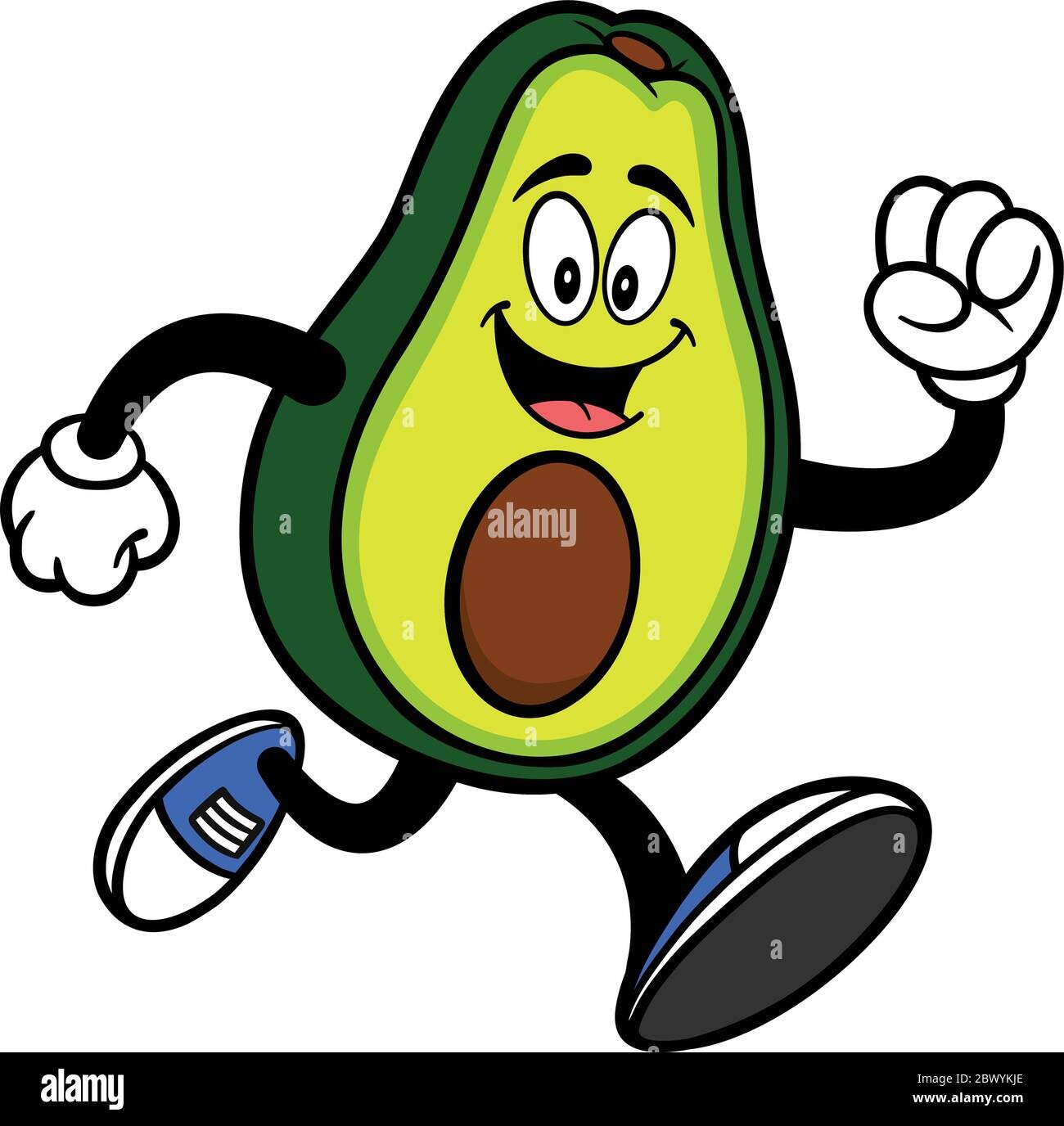
But if you’re not sure what the hype is all about—or you eat ‘em but you’re unsure about avocado’s nutrition—we spoke with a dietitian and sorted through the research to bring you all the health benefits. Plus, how you can add this fruit to your diet.
What nutrients will you get from avocados?
The nutritional value of avocados will differ slightly depending on the variation and size. Here are the nutrition facts for one full avocado grown in the United States, according to the USDA.
322 calories
4g protein
30g total fat
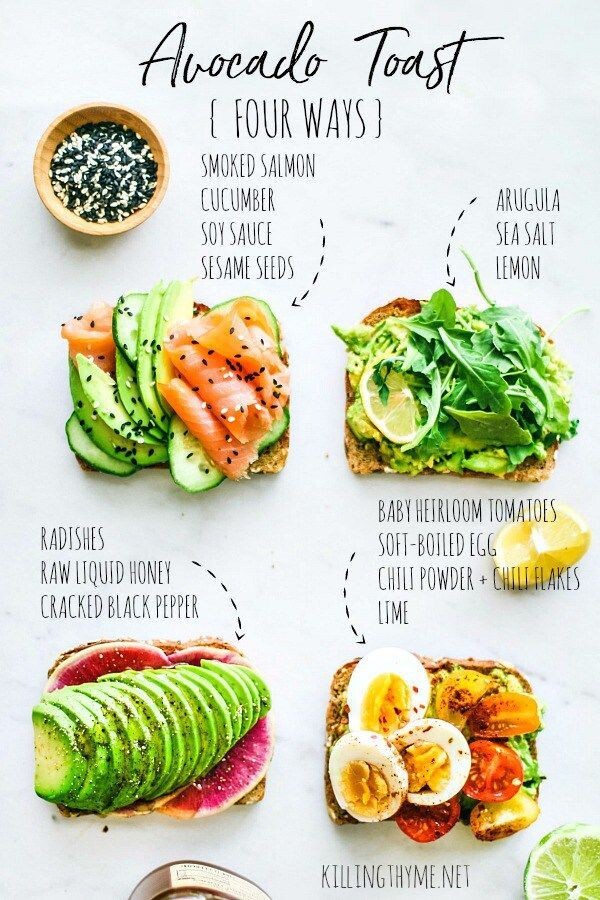
17g carbohydrates
14g fiber
24mg calcium
58mg magnesium
105mg phosphorous
975mg of potassium
14mg sodium
20mg vitamin C
Plus, traces of other nutrients your body will need to replenish after a workout like iron, sodium, and zinc.
What are the health benefits of eating avocados?
Here’s how runners can benefit from eating avocados, according to Yasi Ansari, M.S., R.D.N., C.S.S.D., national media spokesperson for the Academy of Nutrition and Dietetics, as well as recent research.
1. You get a great source of energy
Ansari says avocados are great for runners because they can help you fuel your workouts. “Foods that contain fats like avocado, offer an excellent source of energy. Fats can also help to fuel long-duration, low-to-moderate intensity exercise. It is key to incorporate foods like avocado into a runner’s diet to help them meet their increased energy needs and support good health and recovery,” she says.
2. They can help you maintain a healthy gut
Ansari says avocados can help improve your gut health because they contain nearly 14 grams of fiber, a nutrient that helps with GI regularity, as well as keeping you full post-meal. “Foods that increase satiety can help to keep athletes feeling full and more satisfied for longer periods of time,” she says. Plus adding avocados to you diet can help you meet your daily fiber requirement of 25 grams for women and 38 grams for men.
But remember too much fiber can lead to discomfort for some people, especially when consumed too close to a run. Try eating avocados on training days to gauge how your body responds, since everyone will respond differently. And if you eat avocados before a race, Ansari suggests allowing enough time for digestion. Depending on how your body responds that might mean having them the night before you hit the starting line, eating them a few hours beforehand, or waiting to enjoy them as a postrace meal or snack.
3. They offer up must-have magnesium
Avocados are rich in magnesium, which is an important mineral for runners because it helps regulate muscle and nerve function. “Not getting enough magnesium can impair exercise performance and can increase the effects of oxidative stress from strenuous training,” Ansari says.
4. Avocados are a great source of potassium
Surprisingly, there’s more potassium in an avocado than a banana. Potassium is a key nutrient your body needs to complete important bodily functions, like regulating heart rate and blood pressure and keeping you hydrated, Ansari says. “Potassium, sodium, and chloride also work together to help regulate fluid balance. An athlete with a higher sweat rate may require more potassium and sodium from foods,” she says. Avocado offers some sodium too, so you get both electrolytes.
5. They pack antioxidants and anti-inflammatory properties
Avocados contain nutrients like phytosterols, vitamin C, and vitamin E , which offer antioxidants that fight off free radicals, helping you stave off sickness and battle inflammation. “Vitamins C and E from foods can help to reduce cell damage, inflammation, and increase overall antioxidant activity that provides health-protective properties,” Ansari says.
6. They can help your body absorb vitamins
When mixed with other ingredients, like a kale salad with carrots, mushrooms, tomatoes and seeds, avocados can also help your body increase the absorption of fat-soluble vitamins such as vitamins A, D, E, K, Ansari says.
7. You get heart-healthy fats that help regulate cholesterol
Avocados are a heart-healthy fat—primarily rich in monounsaturated fatty acids—that can add flavor to any meal and snack, Ansari says. According to the American Heart Association, monounsaturated fats can help reduce bad cholesterol levels in your blood which can help lower your risk of heart disease and stroke.
Are there any downsides to eating avocados?
As with any food, it’s possible to overdo it on avocados. You probably don’t want to eat multiple every day. They are also higher in calories and fat, so consider your goals when determining how much of each you need and how much you want to get from avocados alone. And make sure you’re switching up your sources of healthy fats and fiber, too, incorporating other ingredients like olive oil and a mix of fruits and veggies in your diet.
Also, keep in mind that avocados are higher in FODMAPs, according to the Cleveland Clinic. These types of carbohydrates can cause digestive discomfort in some people, so it’s worth keeping intake low if you’re aiming to follow a low-FODMAP diet.
What’s the healthiest way to add avocados to your diet?
Bottom line, anyone can gain from adding this fruit to their diet, especially runners. And adding more avocados to your diet is pretty simple. Try these tips from Ansari for a place to start getting more of the creamy fruits into your meals:
Add it to a smoothie to make it thicker in texture
Mix chopped avocados into a salad to get those fats that help you absorb vitamins
Add avocado spread to a sandwich of your choice in place of mayo
Make avocado toast with eggs and tomatoes for a balance of carbs, protein, and fat
Add avocados to your taco, burrito, or burrito bowl for a Mexican-inspired dish
Make ice cream by freezing avocado pulp and adding honey for a tasty frozen treat
by Runner’s World
Login to leave a comment
Five healthy habits to keep you running long term
Forty has become the new 30 in distance running, as we’ve seen many athletes achieve personal best performances beyond their glory years. Just because you are getting older, it doesn’t mean you have to give up on your running goals or stop being competitive. Many masters athletes have had some of the most rewarding years of their life by staying consistent with their training and sticking to healthy habits.
If you are a runner hoping to continue in the sport long-term, it is essential to remember these five healthy habits:

1) Fuel with healthy foods
Eating healthy has always been important, but it becomes crucial when you choose to pursue an active lifestyle as you age. Your university diet of pizza and beer three or four nights a week isn’t going to give you the nutrients you need to fuel your running. Foods high in protein like eggs, chicken and beef are essential in helping repair muscle tissue and maintaining muscle mass. It’s also important to fuel your body with fruits and vegetables, which contain vitamins and minerals like folate, potassium and vitamin C. A diet rich in vitamins and minerals will keep your gut and body 100 per cent and able to perform at its best as you age.
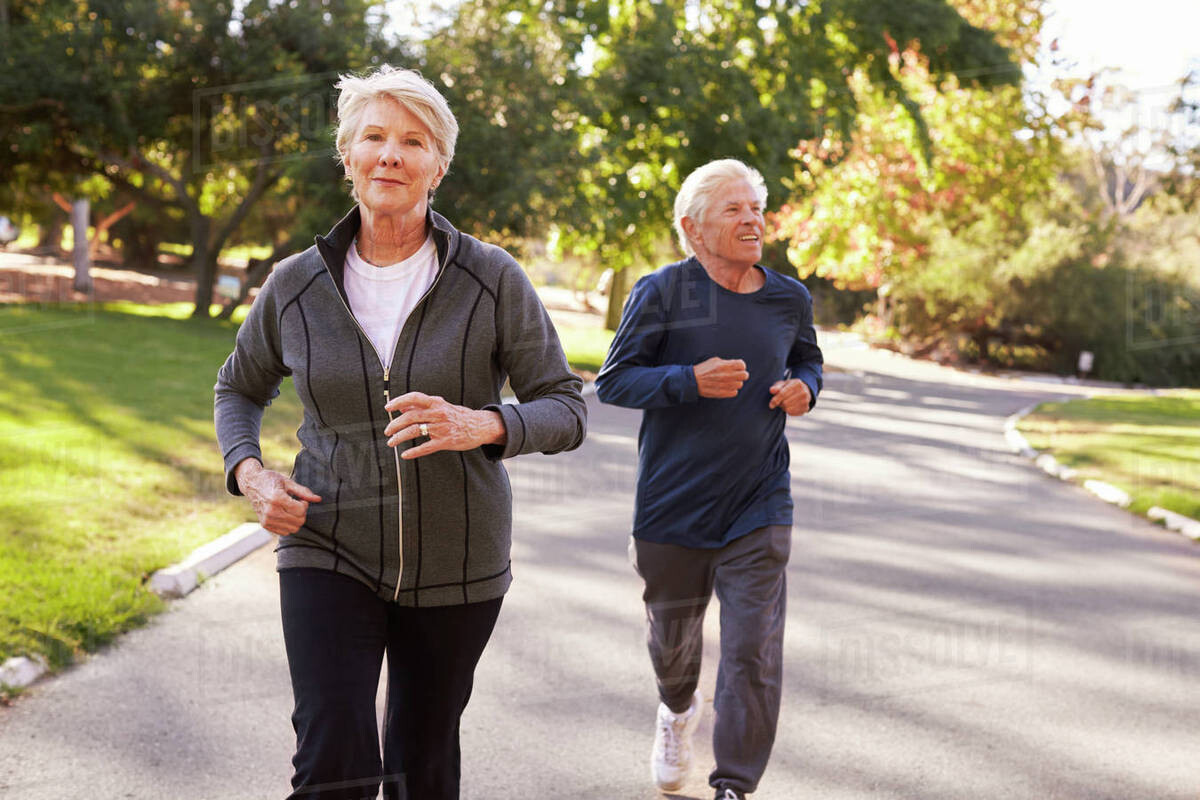
2) Listen to your body
Your muscles need time to recover from any damage they’ve sustained during a run. If your body is sore, do not force more pain on yourself by running. As we get older, our bodies naturally take longer to recover from strenuous activities.
3) Spend time on recovery
When you perform a high-intensity exercise like running, it will take time for your heart rate to recover and go back to a resting rate after the workout. As you age, the recovery process becomes slower. After a run, your body will need time to adapt to the exercise you performed by building up muscle and replenishing energy supplies. As you age, your muscle density decreases, which means more recovery time, because you have less muscle.
At least a quarter or half of the time that you spend running should be spent on recovery. Stretching or yoga are good ways to keep your muscles relaxed and strong after a run. Many runners also use recovery devices like a foam roller, lacrosse ball or muscle scraper. The point is to stimulate recovery by increasing blood flow by various means, though which devices you use are largely a matter of personal preference.
4) Mix it up with other exercises
As you age, your body will naturally begin to lose muscle mass. Therefore, adding one or two strength-training routines into your weekly schedule can help you build long-term success. Exercises like yoga, cycling and weight training can all help keep you strong and help prevent you from getting injured.
The secret to running into your 60s, according to several masters record-holders, is to not run every day and to complement your running with other exercises.
5) Stay motivated
When you’ve been running for a few years, it can be tough to find motivation at times. There are a few ways you can challenge yourself as an experienced or masters runner, which can keep you motivated to reach new heights. Try something you’ve never done before in the sport, like trail running or track racing (if you’ve always been a road runner). Embarking on a new challenge is bound to keep your motivation high.
by Running Magazine
Login to leave a comment
7 Things That Happened When I Ate Beets for Two Weeks
The wondrous root vegetable is supposed to be a godsend for endurance athletes
Beets are all the rage right now, especially for runners. As I started dipping my toe back into marathon training, I wanted to find out why. Is this miracle vegetable really going to make my running that much better?
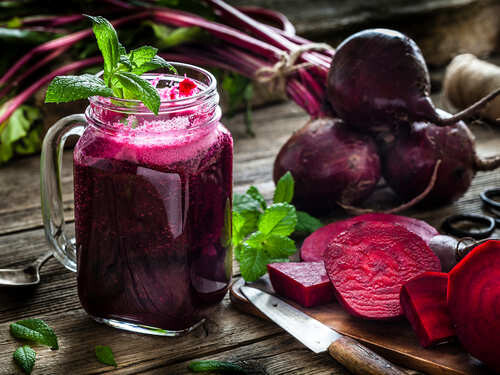
The research in recent years is convincing. The basic premise is that beets are an excellent source of nitrate, which is shown to decrease blood pressure. Essentially, what a 2013 study by Andy Jones, a professor of applied physiology at the University of Exeter and go-to expert on beets and performance, showed is that the amount of oxygen you need to sustain exercise decreased after consuming beet juice. In other words, it took less energy to run the same pace.
According to the research, which was performed with cyclists, the athletes were tested about 2.5 hours after ingesting beet juice. The highest dose of juice (four doses), which was in concentrated 70 mL shots, produced the best results—a 3 percent decrease in oxygen consumption.
In an interview with Asker Jeukendrup, a sport nutrition scientist who writes at MySportScience.com, Jones said the evidence is strong that beets have an effect on sport performance.
“I don’t think there’s much doubt that nitrate has physiological effects,” he said. “The evidence for dietary nitrate reducing resting blood pressure, and therefore potentially impacting positively on cardiovascular health, is really robust. The key now is to find out in which populations and sporting events it may be most effective in improving performance.”
A newer study in 2016, led by Lex Verdijk at the Maastricht University in the Netherlands, was conducted on soccer players. The players who drank two concentrated beet shots per day, on average, covered a 3.4 percent greater distance in a series of sprints at progressively faster paces. Their heart rate was also lower than those taking placebo.
Race results aside, we know that beets are good for us. If they make running a little bit easier, all the better. And besides, it’s a well-known fact that Eliud Kipchoge, the Olympic gold medalist and owner of the 2:00:25 marathon from the Breaking 2 experiment, is a beet believer. If it’s good enough for him, I’m willing to give the red root vegetables a try.
Here’s what I experienced during 14 consecutive days of beet consumption.

Yes, bathroom visits can be alarming to the uninitiated beet consumer. I already knew that urine and bowel movements would turn a shade of red that might otherwise have caused me to rush to the emergency room. The pigment, called betanin, turns urine and feces an unusual hue for most people and it can last 48 hours depending on how many beets are consumed. Interestingly though, I discovered that it wasn’t always the case for me. It just depended on how I prepared the beets and how much I ate. A big bowl of beet soup had a bigger, uh, impact, than a bowl of chopped beets with greens. Either way, there’s no cause for panic. Bonus: You’re still getting all the fabulous nutrients like Vitamin C, folate, and potassium.
I felt full, though sometimes bloated. Beets are filling. One cup, which is what I used as one serving, contains 3.8 grams of fiber (about 14 percent of the recommended daily allowance), according the USDA. Most days I combined that serving with other vegetables or fruits, in a smoothie, for example, which kept me satiated far longer than my normal meals. That was a bonus, though to be honest some days it felt like too much. I was bloated and that was uncomfortable, especially while running. The bloat went away after the first few days, though the fullness factor remained, which meant I didn’t do my usual constant grazing throughout the day like I typically do. One smoothie in the morning was enough to power me through until lunch. My recipe of choice was the “Can’t Beet Me” smoothie from Run Fast, Eat Slow , which includes blueberries, coconut water, almond milk, a banana, and almond butter (I also used it as a post-long run recovery drink).
Powdered beet drink mix made me gag. I had access to a variety of different beet products marketed to athletes, so I gave them a whirl. One day when I was pressed for time, I tried a powdered version that was supposed to be mixed with water and consumed 30 to 60 minutes prior to exercise. It wasn’t good. It almost made me vomit, in fact. So, that was the last time I tried a mix. It tasted kind of like chemical beet-flavored cough syrup.
Then I tried a liquid “beet performance supplement,” which is like a shot of beet juice the equivalent of three beets. As advertised, it’s supposed to improve “stamina, oxygen intake, and cardiovascular health,” and should be consumed about an hour before activity. This had a much better taste and went down easier. Was it the jet fuel it promised to be? I would like to think it was, but it’s hard to say for sure, and most of my runs at this early stage in my training felt challenging no matter what. At $5 per 2 ounces, I probably wouldn’t make it a habit either way. In a pinch, however, the shots were a great way to get a serving of beets checked off the to-do list and tasted just fine.
Preparing beets is easier than I had thought. I’m fairly adept in the kitchen, but I had never tackled beets mostly because they looked like a pain in the rear. I was proven wrong. The easiest way to work beets into your diet is to roast a bunch of them at the beginning of the week and then put them in the fridge. All you have to do is preheat the oven to 375°F, cut off the greens, wrap in aluminum foil, put them on a baking sheet, and let them roast for 60 minutes.
Okay, so peeling them is slightly annoying and your hands definitely turn bright red, but it’s easily washed off, and you only have to go through this chore once a week. Chop the beets as needed for the next five days. I found that when I had them already prepared, I could just throw them on a salad or mix with balsamic and sprinkle with goat cheese whenever I needed another serving.
Forcing beets upon myself upped my overall nutrition game. Although well-meaning friends sent me recipes for a dessert or two that used beets as an ingredient (red velvet brownies, anyone?!), I didn’t try them. Coming off a couple months of an unusually low activity level, I’ve been making a conscious effort to limit the sweets and get my fitness back. What I noticed, however, is that the challenge of incorporating beets into my meals increased the overall nutritional value of meal planning.
My favorite source of dinner recipes came from my good friend Christina Bauer’s blog called Feeding the Frenzy. She happens to be married to ultrarunner extraordinaire Rob Krar and they are vegetarians—and Bauer is an incredible cook. For my final dinner of the two-week challenge, I made her beet borscht, which is packed with vegetables. Top it with a little sour cream, pair it with some crusty bread, and it’s filling enough to be a meal all on its own.
I got creative. A beet cocktail? Don’t mind if I do. Just because I skipped the brownies doesn’t mean I didn’t indulge—beets are fun like that. Case in point: I’m a big believer in Friday happy hour. At the end of my first week of beet consumption, I found myself on an impromptu girls’ night out with two of my BFFs. I realized that I needed to eat some beets to finish off the day.
It was then that “the Beeting” came into my life, which is a cocktail offered at the McMillan, a downtown Flagstaff joint. (Side note: It’s fun to tell your server, “I’ll take a Beeting.”) This adult beverage combines a roasted beet puree, gin, St. Germain, ginger syrup, and fresh lemon muddled with cucumber and basil. It’s beautiful. Did it count as a full serving of beets? I guess that depends on how many you order (I limited myself to one—there was a long run to contend with in the morning, and besides, I doubt this is how Kipchoge consumes his beets).
The first two weeks of marathon training went better than I'd imagined. After a prolonged period away from running due to work deadlines, travel, and other assorted life circumstances, I was understandably worried about how I’d feel ramping up mileage and intensity in my training. While workouts are still a struggle, I can get those long runs done without too much pain. Are the beets the reason why? I doubt they are the sole reason, but they certainly don’t hurt. After a year of catching every flu and cold going around, I’ve remained healthy for a month and I can’t help but think my cleaner diet—anchored by beets—is to thank.
by Runner’s World
Login to leave a comment
Six nutrients you might be missing in your diet
Eating properly in order to run well is more than just simply trying to consume enough calories. It also involves eating a variety of the right foods to ensure you’re meeting your daily requirements of vitamins and minerals.
Running can deplete your stores of important nutrients and put you at risk for deficiencies, but you can help yourself out by knowing which nutrients to be mindful of and how to know if you’re not getting enough.
This is one of the most common deficiencies among runners, particularly females. Since iron is necessary for transporting oxygen to your muscles and plays an important role in energy production, a deficiency can wreak havoc on your ability to run.
1.- Iron
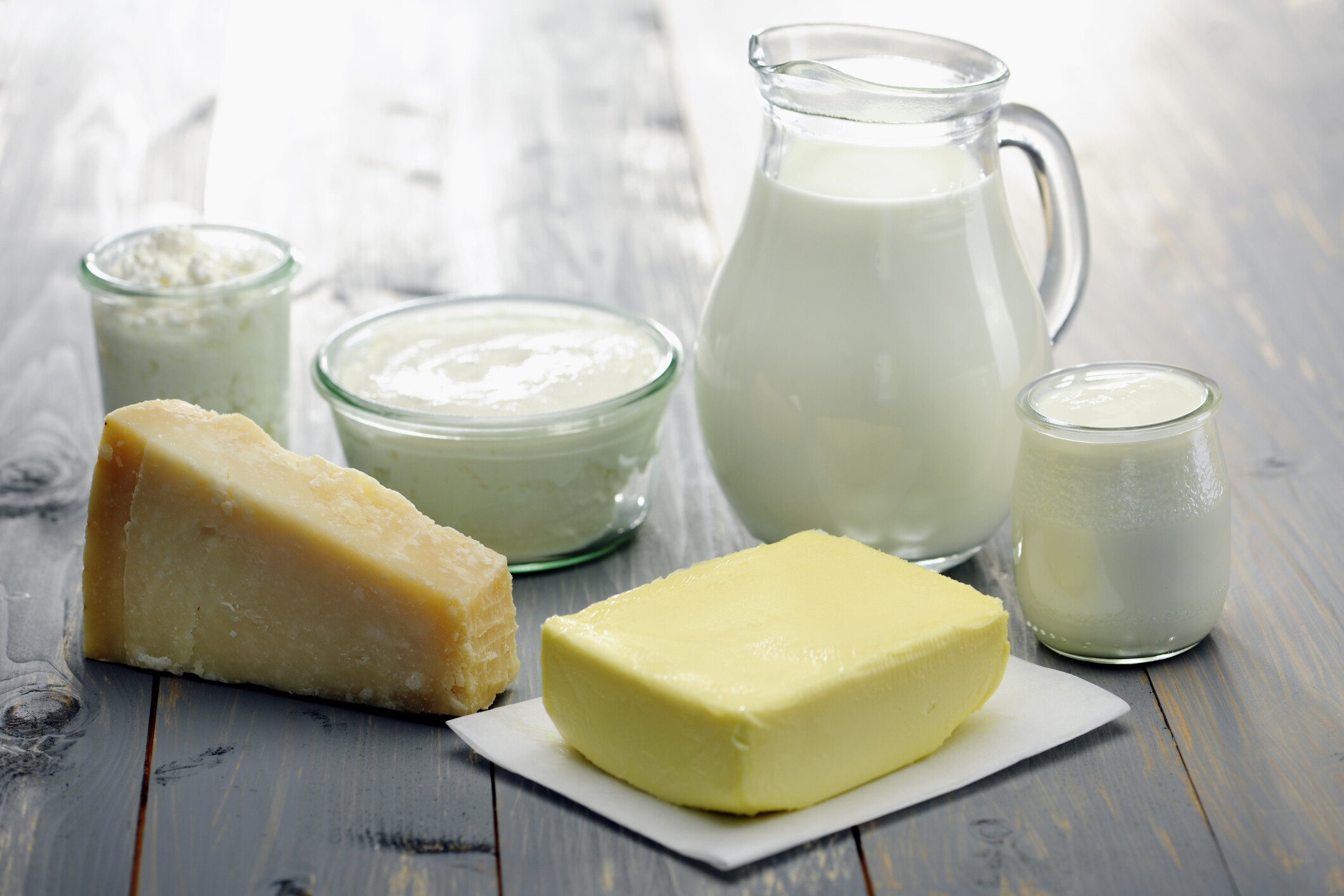
The most common signs of an iron deficiency are unexplained fatigue, weakness, pale skin, shortness of breath, heart palpitations, cold hands and feet, brittle nails and hair loss.
Foods that are high in iron include red meat, liver, dark leafy green vegetables, beans, nuts, dried fruit and fortified cereals. Vitamin C aids in your absorption of iron, so eating iron-rich foods with good sources of vitamin C, like citrus fruits or bell peppers, can also improve your nutrient status. Many runners also choose to take an iron supplement, however you should talk to your doctor and have bloodwork done before starting a supplementation protocol, since taking too much iron can have dangerous consequences.
2.- Magnesium
Magnesium plays an important role in bone health and helps convert the food you eat into energy. Muscle spasms and cramps are common signs of magnesium deficiency, as well as irregular heart rhythms, nausea and vomiting and dizziness and confusion.
Good sources of magnesium include whole grains, dark leafy green vegetables, low-fat milk, yogurt, dried beans and legumes and nuts.
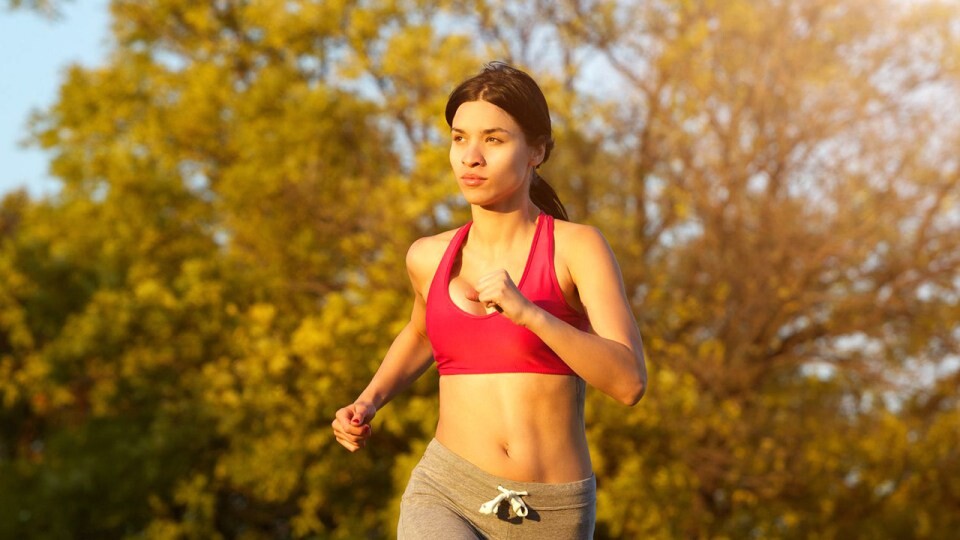
3.- Vitamin D
Vitamin D regulates the amount of calcium in your body, which makes it very important for your bone health. Recent research has also found that it plays a crucial role in the health and function of your immune system. Symptoms of a deficiency include muscle weakness, pain, fatigue and low mood or depression.
Your body synthesizes vitamin D when your skin comes in contact with sunlight, however most Canadian runners don’t get adequate sunshine exposure because of our long winters and use of sunscreen in the summer. There are some food sources of vitamin D, such as oily fish (like salmon or sardines), red meat, liver, egg yolks and fortified cereals, however many nutrition experts recommend taking a vitamin D supplement to ensure you meet your daily requirements.
4.- Calcium
Calcium is important for maintaining strong bones and preventing bone stress injuries, but it’s also a key nutrient for ensuring proper muscles contractions and the healthy functioning of your heart. Muscle spasms or cramps, low mood, weak or brittle nails, confusion or memory loss and frequent stress fractures.
Of course, dairy products like milk and cheese are a good source of calcium, but green leafy vegetables and fortified foods (like non-dairy milk alternatives and bread made with fortified flour) are good sources as well.
5.- Vitamin B12
Vitamin B12 maintains the health of your nerves and blood cells, and also prevents megoblastic anemia, which makes you feel very tired and weak. Other symptoms of vitamin B12 deficiency include pale skin, pins and needles, disturbed vision, irritability and low mood.
Good food sources of vitamin B12 include meat, milk, fish, eggs fish and cheese, as well as some fortified breakfast cerials. Runners who follow a vegan diet are more likely to be deficient in vitamin B12, so they should speak with a dietitian about taking a vitamin B12 supplement.
6.- Zinc
Zinc is important for maintaining proper immune function and helps your body process the fats, carbohydrates and proteins from your diet. Symptoms of zinc deficiency may include hair loss, a compromised immune system and loss of appetite.
Oysters, red meat and poultry are excellent sources of zinc, and whole grains, milk products and fortified cereals are also good sources of the mineral. Baked beans, chickpeas, and nuts (such as cashews and almonds) also contain some zinc.
by Brittany Hambleton
Login to leave a comment
How to eat to speed up recovery, simple improvements to your diet can help you get back on the road faster
There is no quick fix for running injuries. Healing them takes time and patience, but the right nutrition strategies can speed up the process so you can get back on the road as soon as possible.
If you’re currently sidelined with an injury, take a look at your diet to see if there’s any room to optimize your nutrition for injury recovery, and check out these tips to help you get better faster.
Don’t cut calories

When dealing with an injury, many runners are tempted to cut back on their caloric intake because they’re not expending as much energy as they would if they were still training, but this is a mistake. Restricting calories can slow down the recovery process, so make sure you continue eating, focusing on good nutrition (more on that in a minute). Depending on the severity of the injury, you may even need more calories, so if you’re unsure how much you should be eating while recovering from an injury, talk to a dietitian with a background in sports nutrition for guidance.
Protein helps build and repair muscle tissue, so when you’re trying to heal an injury it’s important to get plenty of protein in your diet. This is even more crucial if the injured area has to be immobilized for any length of time because you’re at a greater risk for muscle loss. Leucine, one of the branched-chain amino acids (BCAA’s) that make up complete protein is particularly important because of its ability to stimulate muscle protein synthesis compared to other amino acids. Foods high in leucine include chickpeas, soy-based products, eggs, chicken, salmon and beef.

Eat carbohydrates
For a similar reason to cutting calories, some runners think they should eat fewer carbohydrates while they’re injured since they don’t need the fuel for their runs. When you eat too few carbohydrates (and again, not enough calories), you risk your body having to dip into your protein stores for energy. This prevents the protein you eat from being used to repair an injured muscle, which slows down the recovery process.
Increase your omega-3 intake
Omega-3 fatty acids help decrease recovery time by reducing inflammation, so make sure you’re including plenty of fatty fish and seafood (like salmon, tuna and sardines), nuts, seeds and fortified products like eggs, yogurt and milk.
Get plenty of vitamin C
The sunshine vitamin is a mandatory co-factor in collagen formation, which is a main component of bone, muscle and skin. Eating more vitamin C will help improve your body’s collagen formation, thus expediting your injury recovery.
Up your calcium and vitamin D intake
If your injury is bone-related, you should aim to increase both of these bone-building nutrients. Calcium is crucial to building and repairing bone, but without adequate vitamin D, your body will have difficulty absorbing the calcium from your diet. It can be difficult to get enough vitamin D in the winter months, so focus on eating plenty salmon, eggs and fortified foods, and talk to your doctor about adding a supplement to your diet.
Eat plenty of fruits and veggies
When you’re recovering from an injury, you want to get as many vitamins and minerals as possible because when you support your overall health, you support the injury recovery process. Do your best to make sure you’re including a variety of fruits and vegetables in your diet every day to ensure you aren’t missing out on anything.
by Brittany Hambleton
Login to leave a comment
You’ll Want to Load Up on Vitamin K for Better Heart Health
Add dark leafy greens, broccoli, Brussels sprouts, and avocados to your grocery list ASAP.
Eating a diet rich in foods containing vitamin K can provide a significant protective effect when it comes to your heart health, according to new research.
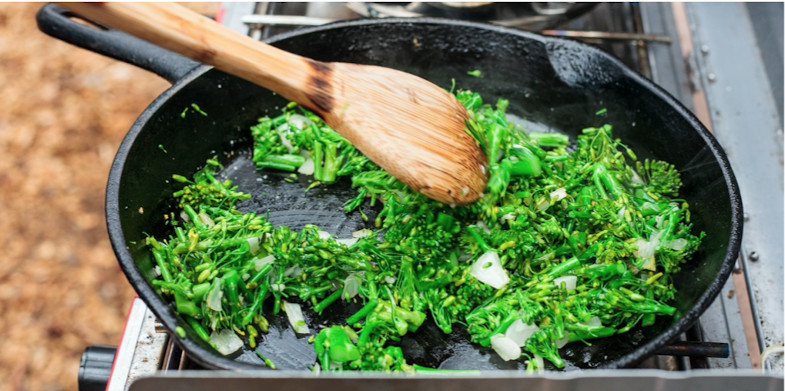
Dark leafy greens, broccoli, Brussels sprouts, and avocados are all rich in vitamin K.
Eating a diet rich in foods containing vitamin K can provide a significant protective effect when it comes to heart health, according to new research in the Journal of the American Heart Association.
Researchers looked at dietary data from more than 50,000 people taking part in a decades-long study in Denmark. They found that those who ate more foods high in vitamin K had a 21 percent lower risk of developing atherosclerotic cardiovascular disease than those who ate the lowest amounts.
The effect was highest among those who consumed green leafy vegetables and vegetable oils, which have a form of the vitamin called K1, according to lead author Nicola Bondonno, Ph.D., a research fellow at the Institute for Nutrition Research, at Edith Cowan University in Australia. But, she told Runner’s World, there was also lower risk among those who ate foods high in a form called K2, found in animal products and fermented foods.
Although it’s possible to get a boost of vitamin K through taking supplements—much as you can isolate other vitamins or minerals in the same way—previous studies on supplements in general cast doubt on whether this is the best route.
For example, a 2019 research review looked at both observational studies and randomized trials on multivitamins, antioxidants, folic acid, vitamin E, folic acid, and beta-carotene, which have all shown promise for cardiovascular health. But researchers found little evidence that any of them aided in prevention or treatment of cardiovascular disease.
Getting these compounds through food, however, is a very different story. That’s because dietary sources not only have a range of vitamins, they also tend to have fiber, antioxidants, and healthy fats, which all work together to improve your heart function, according to Robert Greenfield, M.D., medical director of non-invasive cardiology and cardiac rehabilitation at MemorialCare Heart & Vascular Institute at Orange Coast Medical Center.
For instance, foods high in vitamin K—such as dark leafy greens, broccoli, Brussels sprouts, and avocados—are also abundant in other vitamins and minerals that benefit the heart, Greenfield told Runner’s World. Those include iron, magnesium, and zinc. Meats and dairy high in vitamin K—such as beef liver, chicken, and hard cheeses—also provide protein and healthy fats. Greenfield added that vitamin K is fat soluble, which means you need a bit of fat for proper absorption, so dietary options may be an advantage there as well.
One more benefit to getting vitamin K in your diet: It doesn’t take much effort to see benefits. In the recent study, those who had more of the vitamin didn’t see greater benefits, said Bondonno. So, adding options like chard or spinach to a meal every day is likely enough of a heart booster, she said.
“The multitude of bioactive compounds in vitamin K-rich vegetables can protect you against other chronic diseases in many different ways,” she said. “And the takeaway is that they help protect against cardiovascular disease as well.”
by Runner’s World
Login to leave a comment
The big benefits of bananas for runners
Eating good simple foods like a banana is an ultimate fueling option. Bananas are not only delicious, but also extremely nutritious, that’s why many runners and athletes use bananas for pre-race, race fueling and post-training refueling. Bananas are full of healthy carbohydrates, vitamins and potassium. Bananas are a balanced blend of nutrients that help restoring tired muscles, and give us energy boost even for our brain. Bananas also provide 15% of your daily vitamin B6 daily recommended intake to tune up the nervous system, which makes our body very happy.
Nutrients in Bananas:
Potassium (essential mineral)

Vitamin B
Vitamin C

Carbohydrates
Low Glycemic Index (GI)- More slowly digested, absorbed and metabolized which causes slower rise of blood glucose, and insulin levels (no sugar spike)
Fiber
Antioxidants
If you like bananas, you should eat them, especially on training and racing days.
Why do Runners Need These Nutrients?
Potassium
Potassium is a mineral and electrolyte that isn’t produced naturally by the body. As runners, we need potassium to support the blood pressure and heart rhythm. If runners consume bananas, it will help to keep a regular heart rate and blood flow while running.
Vitamin B
Vitamin B is a water-soluble delicate vitamin, when our body is depleted of vitamin B it causes a lack of energy. Because vitamin B is delicate, fresh bananas will have higher levels of vitamin B than cooked bananas. Vitamin B helps the body process carbohydrates, proteins, and fats that our body needs for fueling while running and recovery.
Vitamin C
Vitamin C is essential for runners, running creates many microtears in the body’s muscles, and vitamin C helps healing those microtears. For runners, it maintains the connective tissue healthy, and prevents infections so you can keep running long-distance with no issues. It also helps to prevent many other infectious diseases. Vitamin C is also more efficient when absorbed from fresh foods, eating fresh bananas will provide higher levels of vitamin C.
Carbohydrates
Carbs are a great source of sugars and starches, essential for good energy. Runners need a lot of energy and carb fueling. Bananas contain fructose, a simple carbohydrate that provides a faster release of energy which is digested and processed more quickly in the body, but from bananas we still don’t get sugar spikes. Complex carbohydrates are very healthy, but it takes longer to process and digest than simple carbs. For pre-run and during a run simple carbs are more efficient to provide energy, digested more easily and don’t cause stomach issues like complex carbs during a run. The body processes bananas faster, allowing to fuel the body during the run and refuel post-run. Average size and ripeness bananas contain about 23g of carbs, similar to one gel.
Low GI (glycemic index)
Bananas are low on GI scale, less than 55 is considered low and bananas have a glycemic index value of 51. Foods with a low GI scale cause blood sugar to rise gradually, not quickly after eating them. Bananas will provide no sugar highs and lows as your body processes the food. A consistent level of sugar is better for runners as it provides a constant source of fuel rather than sugar spikes, which causes our body to crash.
Fiber
Fiber is the part of the bananas that can’t be digested or absorbed by the body, but it helps to support gut health and keep our digestive system regular. This type of natural fiber doesn’t cause any stomach issues during a run.
Antioxidants
Antioxidants help to stop and prevent oxidation. Oxidation is a common chemical reaction (it happens when our cells extract energy from food), in which atoms or molecules lose electrons. Losing electrons causes imbalance as they have to be connected in pairs. When a molecule has uneven electrons, it will roam through the body, looking to grab electrons to even up the numbers and rebalance the cells. Antioxidants neutralize free radicals by providing their own electrons without becoming free radicals themselves, so they don’t have to go find electrons to rebalance the cells. When eating bananas, the body processes carbohydrates for energy and at the same time, antioxidants balance the electrons.
That is why runners should eat bananas if they like that nutritious fruit to provide healthy, easy to digest, and body stabilizing energy.
Eat Well, Train Well, Run Strong!
by TGR Trail Running
Login to leave a comment
Why Trail Runners Need To Get Enough Vitamin D
You probably already know that vitamin D is a critically important nutrient, especially when it comes to your skeletal system. Vitamin D and calcium go hand in hand. While calcium creates strong, healthy bones, vitamin D helps your body absorb that mineral and put it to use. If you aren't getting enough vitamin D, a deficiency can lead to weak and brittle bones.
Yet there's so much more to this particular vitamin than just bone health. And if you're lacking it, you can face problems that extend far beyond your bones. Here's what science says about the effects of vitamin D deficiency on your overall health.
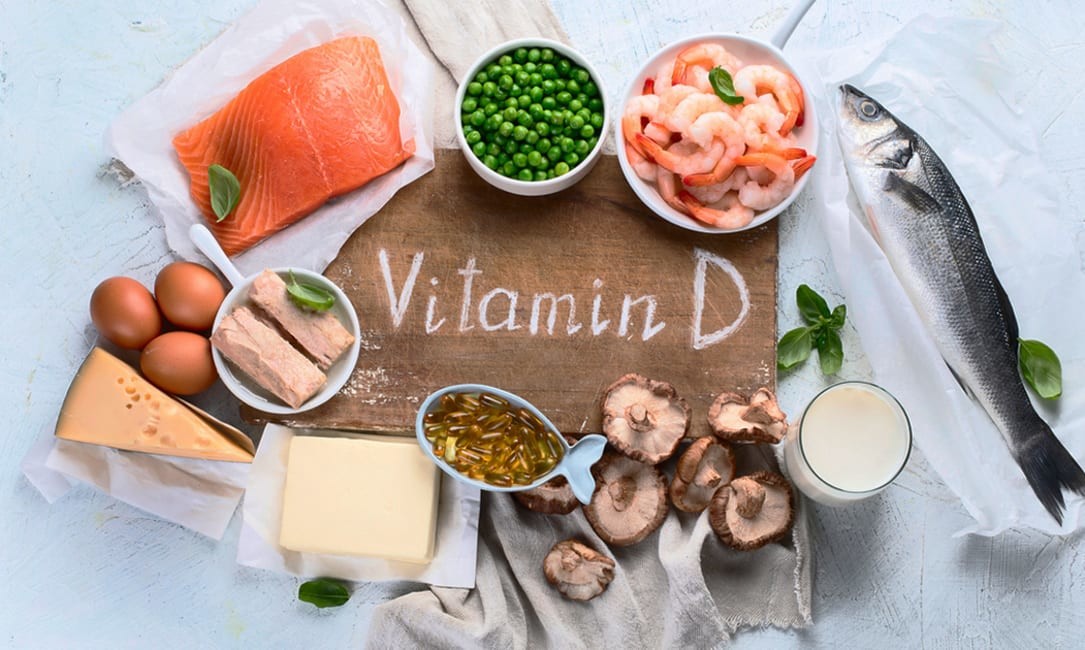

A vitamin D deficiency can decrease muscle function
Recent research published in the Journal of Endocrinology suggests that failing to get enough vitamin D has a negative effect on your muscle function.
In their study, researchers compared two groups: one that followed a diet that offered the right amount of vitamin D and one that followed a diet with a vitamin deficiency. Over the course of three months, researchers tested skeletal muscle mitochondrial respiration, or the process that fuels your muscles' function.
While there were no differences in body weight, muscle mass, or food intake between the two groups, there was a significant difference in skeletal muscle mitochondrial respiration. A vitamin D deficiency led to decreased respiration, which indicated impaired (or decreased) muscle function.
Additionally, another research study found similar results. Researchers studied individuals with vitamin D deficiency, treating them for that deficiency for 10 to 12 weeks. Over the course of the study, researchers saw skeletal muscle mitochondrial respiration improve. At the same time, participants reported that they were experiencing less muscle fatigue as their vitamin D levels increased.
As vitamin D levels increase, muscle function and capability improves. So, when you aren't getting enough of this key vitamin, you hinder your muscles and their ability to perform necessary functions. You can even feel physical muscle fatigue.
Physical performance and activity can suffer too
The effects of a vitamin D deficiency on your muscles aren't just internal. You can feel them at work when you're exercising-or any other time you try to put your muscles to work.
A 2013 scientific review explains the impact of a vitamin D deficiency on physical activity and performance. Getting your daily recommended amount helps you stay active, and it's particularly beneficial for athletes. This nutrient helps you maintain physical performance, ensuring you can achieve maximal oxygen consumption while you're exercising. Without vitamin D, you can see a decrease in muscle strength, weaker muscle tissue and even a higher risk of overuse injuries like stress fractures.
If you're hoping to keep your body strong and capable, vitamin D is an essential you can't skimp on. Failing to get enough of this vitamin can leave you weaker and less able to tackle physical exercise-and its effects are noticeable whether you're an athlete or not.
Without vitamin D, you'll also have less energy
Even if you don't feel the muscular impact of a vitamin D deficiency, there's one more aspect of your health that'll take a hit: your energy levels.
A lack of this vitamin can bring on fatigue and low energy levels. In some cases, research shows that very low levels of vitamin D can even lead to severe fatigue that impacts your quality of life. Much of the research on fatigue and a vitamin D deficiency examines women, and anyone who isn't getting enough of this nutrient can feel sluggish, tired, and less alert even after a good night's sleep.
However, once you increase your vitamin D levels, your energy levels can rebound and increase. If you've been dealing with prolonged low energy levels or unexplained fatigue, you might want to see if you're getting enough of this particular vitamin.
Get more vitamin D through food or supplements
There's an easy fix for a vitamin D deficiency. All you need to do is increase your intake, and that's a feat that can be accomplished in a few different ways.
The best way to get your vitamin fix is through food. It's easy, it's natural, and there are plenty of foods rich in vitamin D. You can try dairy-based sources, like milk or cheese. Non-dairy foods like dark leafy greens and cold-water fish can also be great options; just make sure you're picking foods that have vitamin D over calcium, as the two nutrients are often grouped together yet are distinctly different.
Supplements are another good choice. Vitamin D is considered one of the most beneficial supplements you can take. Just make sure to choose a supplement that's clean, vetted by reputable organizations, and suitable for your health.
Lastly, you can also head outdoors and get a "serving" of vitamin D from the source: the sun. If it's sunny where you live, you can increase your levels by spending time outdoors. Just don't forget your sunscreen when you're spending any time under the sun's rays.
by Trail Runner Magazine
Login to leave a comment
Suplements you should take regularly to boost your overall health
Have you or someone you know recently become a little more self-aware of your overall health, and are looking for a couple of ways to help make a positive change? Perhaps you have already spent years carefully dieting and exercising, but you are constantly looking for new ways to make your health routine more efficient? Maybe your doctor has recommended you take some supplements to aid in your overall health, and you are looking for a couple of solid places to start? If any of this sounds like you, then you should absolutely keep reading to learn some helpful information. This article will break down a couple of the supplements that you should take regularly in order to boost your overall health. Staying healthy does not need to be a difficult process, just follow some basic steps every day and you will be well on your way.
Vitamin C
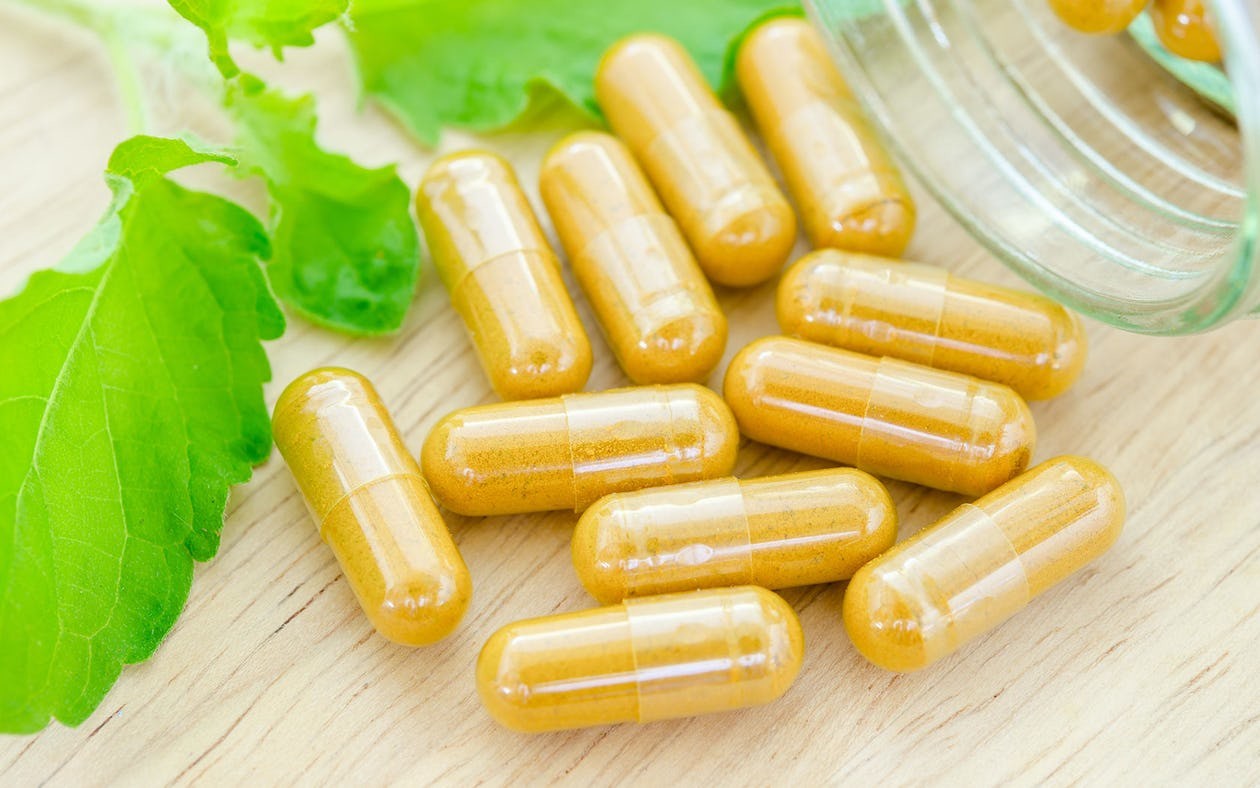
One of the most common vitamins that you will see people taking consistently are vitamin C supplements. This is because it is widely marketed as a great way to benefit your overall immune system and well-being. Vitamin C is also commonly seen in many different types of fruits and vegetables. There are also many multivitamin supplements that have substantial amounts of vitamin C in them. If you are curious about some other ways to get vitamin C in your diet, then keep looking for some alternatives online. Be sure that you get the recommended amount of vitamin C in your daily diet.
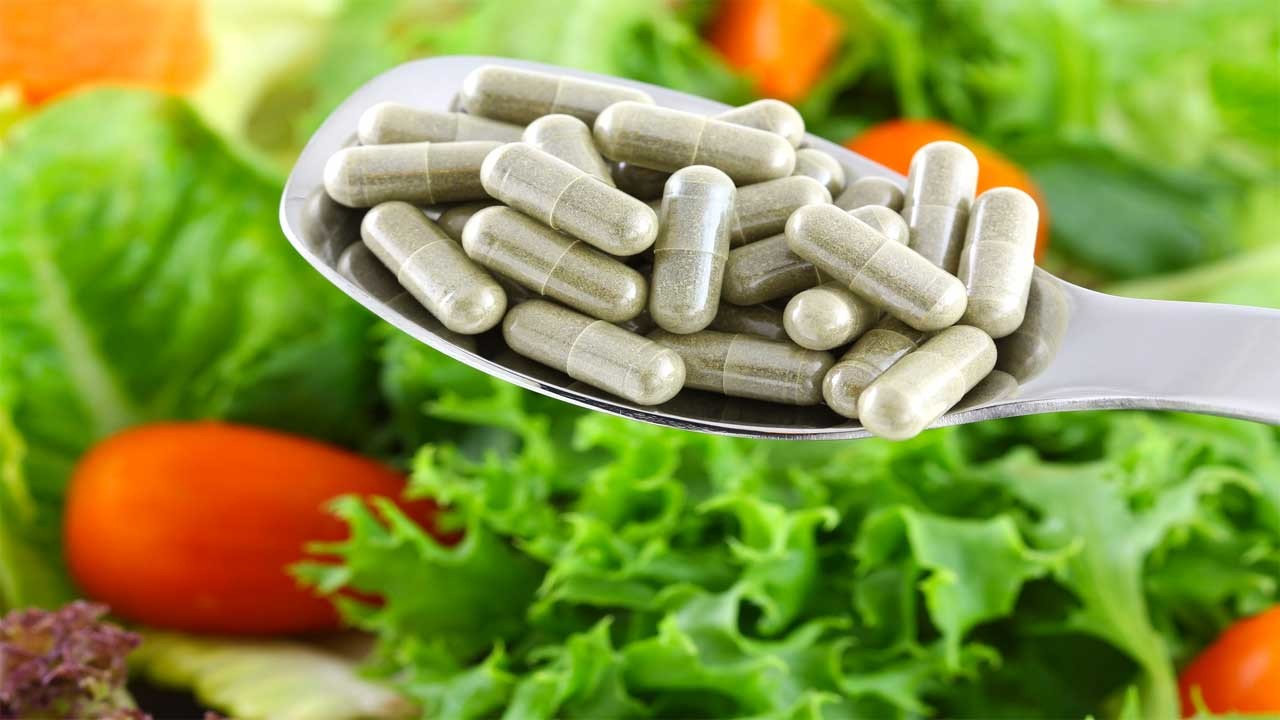
Vitamin D
Another vitamin that is fairly common in the world of supplements is vitamin D. This essential building block for our body comes from the sun, but people are increasingly not getting enough sunlight every day. If you are someone who suffers from seasonal depression, then taking a vitamin D supplement at times of the year that are problematic can help to give you a mood boost when you need it the most. Sometimes vitamin D is also included in multivitamin supplements, so be sure to check yours before doubling down on your vitamin D intake. You can also get this nutrient from natural sources besides the sun, so make sure to keep an eye out for foods that are high in vitamin D.
Potassium
Are you the type of person who hits the gym with some regularity, and finds yourself frequently getting sore for a couple of days after a particularly hard workout? If this sounds like you, then there is a good chance you can benefit from more potassium in your diet. This nutrient which is naturally found in bananas, and other whole foods is incredibly important for helping our body to cope with the stress of an intense workout. There is a reason that many pro athletes and bodybuilders make sure to include bananas in their morning shake. If you want to train like the pros and recover like the pros, then you need to eat like the pros. You should have no problem finding a potassium supplement if you are finding that you still aren’t getting the right amount from your daily diet.
Omega-3
If you are looking to build a body that is strong and healthy, then making sure that you have enough omega-3 in your diet is absolutely essential. This essential nutrient helps to keep all the cells in your body healthy, and also aids with heart, lung, and kidney health. There are many sources of omega-3 that come from animal products, which can be a concern for some people with dietary restrictions. Fortunately, there are some Vegan omega 3 supplements that can help to accommodate people who try and avoid ingesting any kind of animal product. Do some research and experimenting and you will be able to find some supplement product that will work great for you.
Protein
In order to make the maximum gains after your workouts and boost your overall health, you need to make sure that your body has the right fuel to quickly rebuild the muscles that you are tearing down when exercising. Protein is one of the essential building blocks, and if you are lifting big to get big, then you will need big intakes of protein in your daily diet. There are many natural sources of protein, such as meats, nuts, beans, and other fruits and vegetables. If you need a quick top-up of protein after a workout, then you might want to consider a protein supplement. These supplements are used by lots of top performers in order to make sure they get the most benefit from the workouts they spend time on.
Iron
Some people find it helpful to include an iron supplement in their diet to help balance their body’s needs. People who suffer from anemia and also vegetarians and vegans can often benefit from taking an iron supplement. There is lots of iron in many natural foods too, such as spinach, so make sure to include both natural sources and supplements in order to maximize your health.
Echinacea
If you are looking to boost your immune system when you start feeling sick, then echinacea is a natural supplement you might want to consider. This amazing plant has been used in homeopathic and natural medicines for generations, and still sees lots of use in modern times. This plant is an herb that can also be used for other purposes, such as teas and even spice blends.
After exploring some of the different suggestions included in this article, the hope is that you have found some supplements that you should take regularly if you want to boost your overall health. There is only so far that working out and eating well can take you, although there is no replacement for either of these things in terms of staying healthy. Supplements, when used correctly, can be amazing for helping you to reach your fitness and health goals.
by Colorado Runner
Login to leave a comment
Endurance Athletes Have an Increased Risk for Iron Deficiency
Poor performances and feelings of fatigue may signal a need to get your levels checked.
It’s common to associate a poor performance with low iron. “I had a bad race, maybe I should check my iron?” “I’m feeling fatigued during workouts—could it be my iron levels?” I get these questions from the athletes I work with a lot.
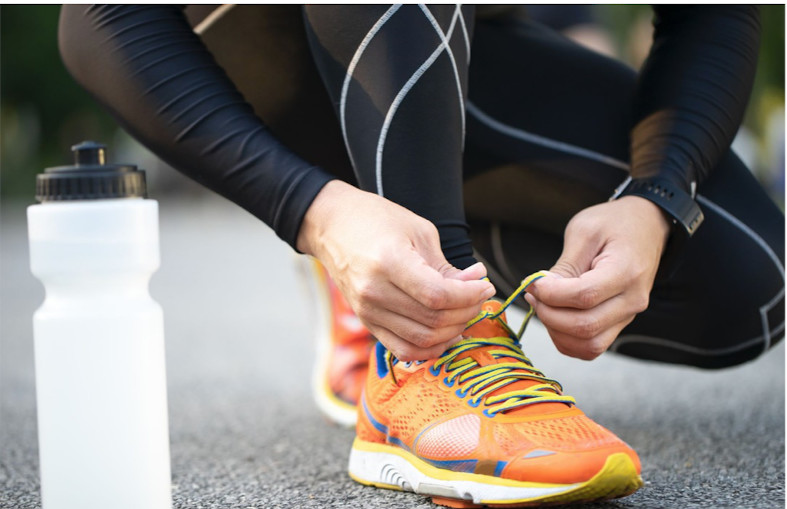
And while there are countless variables that can contribute to poor performances or fatigue, one thing we do know is that iron is important for runners. If your iron levels are low and you don’t do anything about it, you will eventually feel the negative impact on performance. Here’s what you need to know about both iron and ferritin levels.
What is iron and why is it important for athletes?
Iron is an essential mineral found in red blood cells that is important for oxygen transport in the blood and to muscles, energy production, cognition, and immunity. The reason many of us worry about our levels is that iron is lost in many ways: in the urine, through the menstrual cycle, blood loss in the gastrointestinal (GI) tract, sweat loss, and the breakdown of red blood cells via the impact of our foot strikes. Plus, chronic use of nonsteroidal anti-inflammatory drugs (e.g. ibuprofen, naproxen)—ones often used by athletes—and antacids can also lead to iron deficiency. 
​
Iron levels are especially important for female athletes: According to a paper in the European Journal of Applied Physiology, the prevalence of iron deficiency is around 15 to 35 percent in female athletes and 3 to 11 percent in males. Females, endurance runners, vegans, vegetarians, and athletes with low energy availability are at an increased risk for iron deficiency.

What are some key symptoms of low iron?

The classic signs of iron deficiency, with or without anemia, include lethargy, fatigue, negative mood state, and difficulty concentrating. However, runners may notice symptoms that mimic overtraining, reduced work capacity during training, impaired responses to training, and ultimately poor performance. The only way to determine if low iron is the culprit is to have a blood test.
What about anemia?
Anemia is a condition in which the blood doesn’t have enough healthy red blood cells. Although iron deficiency anemia is the most common type of anemia, it is one of many different types. It is possible to have iron deficiency prior to developing a diagnosis of iron deficiency anemia. Over time, iron deficiency will lead to anemia if no action is taken because the body will exhaust its iron stores, known as ferritin.
So what’s the deal with ferritin levels?
Ferritin, as mentioned above, is an important blood marker that indicates iron storage. There is a wide range for what is considered to be a “normal ferritin level,” ranging from 12 to 300 nanograms per milliliter (ng/mL).
“However, linking ferritin levels (e.g. levels greater than 35ng/ml) directly to performance is very challenging, as there are so many things that impact performance,” Trent Stellingwerff, PhD, Senior Advisor for the Canadian Sport Institute Pacific tells Runner’s World.
In fact, high iron levels can be very toxic for the liver and heart. “We aim for ferritin greater than 35ng/ml and clinically normal hemoglobin, but appreciate individual athlete norms as well,” says Stellingwerff.
Thus, a current routine assessment of iron deficiency should include the following blood markers: ferritin, hemoglobin, and transferrin saturation. Iron deficiency occurs in three stages using the following ferritin levels proposed in a recent paper in athletes:
Stage1 - Iron deficiency/depletion: ferritin less than 35 ng/mL, hemoglobin and transferrin levels will still be normal. There is little evidence to suggest you will notice any fatigue at this point, but it’s important to correct and prevent iron deficiency anemia.
Stage 2 - Iron deficient non-anemia: ferritin less than 20ng/mL, low transferrin, and normal hemoglobin. You may start to feel some of the symptoms above and performance may be negatively impacted.
Stage 3 - Iron deficiency anemia: ferritin less than 12 ng/mL, low transferrin and hemoglobin. You will notice key symptoms above including impaired endurance performance.
How often should I have my iron levels checked?
As suggested in a recent 2019 article published in a European Journal of Applied Physiology, high-risk runners should be screened regularly and considerations for the frequency of iron blood screening are based on the athlete’s past history. Although not comprehensive, some guidelines are listed below:
Annually: runners with no history of iron deficiency, no fatigue after an extended rest period
Biannually: previous history or low ferritin (iron depletion stage 1), female, intention to increase training volume or training at altitude within the next 12 months
Quarterly: any recent history of iron depletion/deficiency, vegetarian/vegan, individuals with any evidence of low energy availability, high training volume, and fatigue/lethargy, plans to train at altitude within the next 6 months.
Ferritin, an acute phase reactant protein, can be falsely elevated with inflammation after intense exercise. Thus, it’s important to avoid any muscle-damaging or intense exercise about two to three days prior to your routine blood test. Other suggestions for standardization include testing first thing in the morning and in a well-hydrated state.
Work with your doctor to determine the best course of action and figure out if supplementation is right for you.
Should runners traveling to altitude be concerned about levels?
Training at low to moderate altitudes provides an environmental stimulus to increase red blood cells with the goal of improving performance at sea level. With this increase in red blood cell production, comes an additional need for iron. A review paper by Stellingwerff et al. (2019) suggests checking iron status prior to altitude training to ensure that levels are in the optimal range prior to leaving.
“However, if a runner is just going to altitude for a race or short period of time, the impact of iron is much less,” Stellingwerff says. “Although, all endurance athletes should aim to have ferritin levels well into the healthy and normal range.”
How can runners optimize iron absorption?
You can have a solid iron-rich fueling plan, but is your nutrient-timing and combination of foods on point? Iron absorption may be impaired post-exercise due to increased levels of hepcidin, a hormone released by the liver that regulates the ability to absorb or recycle iron (e.g. increased hepcidin levels will inhibit iron absorption).
Inflammation is believed to be a strong up regulator of hepcidin. According to an article published in Sports Medicine in 2020, hepcidin increases around three to six hours post-exercise and increases towards the end of the day.

Thus, the optimal timing for iron absorption is within 30 minutes after a morning workout when hepcidin levels are low. Runners can optimize iron absorption use the following strategies:
​
Avoid dairy, coffee, and tea (which decrease absorption of iron) for an hour before or after a meal.
Cook with a cast-iron skillet or a product like a Lucky Iron Fish, which may be a cost-effective strategy for increasing the iron in conjunction with other methods according to one study.
Consume “heme iron” rich foods such as beef, eggs, tuna, lamb, and kangaroo (if available)
Improve absorption of “non-heme iron” sources (almonds, figs, apricots, kidney beans, green leafy vegetables, tofu, dark chocolate) by pairing with heme-rich sources and/or ~50 milligrams (mg) of vitamin C (1/2 cup of pineapple, strawberries, broccoli, or red peppers).
If taking an iron supplement (prescribed by a physician), take with vitamin C-rich food. Emerging evidence suggests alternate day dosing to be just as effective as daily for raising ferritin levels and better tolerated for runners with a sensitive gut.

Finally, not every bad race indicates your iron is low, but it is a good idea to get checked prior to taking any iron supplements. There is no evidence that higher ferritin levels are better (e.g. aiming for 300), and supplementation is not likely to improve performance in non-depleted runners. Iron supplementation should only occur under physician supervision.
You can have a solid iron-rich fueling plan, but is your nutrient-timing and combination of foods on point? Iron absorption may be impaired post-exercise due to increased levels of hepcidin, a hormone released by the liver that regulates the ability to absorb or recycle iron (e.g. increased hepcidin levels will inhibit iron absorption).
Inflammation is believed to be a strong up regulator of hepcidin. According to an article published in Sports Medicine in 2020, hepcidin increases around three to six hours post-exercise and increases towards the end of the day.

Thus, the optimal timing for iron absorption is within 30 minutes after a morning workout when hepcidin levels are low. Runners can optimize iron absorption use the following strategies:
​
Avoid dairy, coffee, and tea (which decrease absorption of iron) for an hour before or after a meal.
Cook with a cast-iron skillet or a product like a Lucky Iron Fish, which may be a cost-effective strategy for increasing the iron in conjunction with other methods according to one study.
Consume “heme iron” rich foods such as beef, eggs, tuna, lamb, and kangaroo (if available)
Improve absorption of “non-heme iron” sources (almonds, figs, apricots, kidney beans, green leafy vegetables, tofu, dark chocolate) by pairing with heme-rich sources and/or ~50 milligrams (mg) of vitamin C (1/2 cup of pineapple, strawberries, broccoli, or red peppers).
If taking an iron supplement (prescribed by a physician), take with vitamin C-rich food. Emerging evidence suggests alternate day dosing to be just as effective as daily for raising ferritin levels and better tolerated for runners with a sensitive gut.

Finally, not every bad race indicates your iron is low, but it is a good idea to get checked prior to taking any iron supplements. There is no evidence that higher ferritin levels are better (e.g. aiming for 300), and supplementation is not likely to improve performance in non-depleted runners. Iron supplementation should only occur under physician supervision.
by Runner’s World
Login to leave a comment
How Running Boast Your Immunity
Exercise physiologist David Nieman has spent the last 40 years studying links between exercise and immunity. It’s not a new field. But with the increasing rate of race cancellations and general concern around the global COVID-19 coronavirus outbreak, plenty of runners have found themselves wondering whether their intense training is helping, or hurting, their health.
Exercise studies show that regular, modest exercise boosts immunity, and lowers your risk of infection. That’s the good news—and the reason so many scientists believe that running and other regular exercise is a healthy, body-strengthening activity.
On the other hand, hard, continuous, long-effort exercise like marathons and ultra marathons can lower your resistance for 24 to 72 hours, and lead to increased colds and respiratory illnesses for a week or two. Too much exercise volume and intensity turns the corner on what experts refer to as the J curve—and your risk of infection goes up.
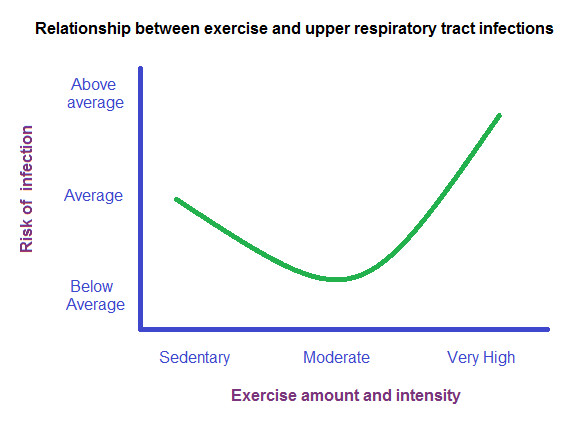
Case in point: Nieman and colleagues recently measured the immune response of Antarctic trekker Colin O’Brady, who in late 2018 became the first person to cross the continent unassisted, covering 930 miles in 54 days. The research team found that O’Brady entered a state of “dysfunctional immune response” that was most severe during the last month when his “energy expenditure was highest, body mass was reduced, and training distress was most severe.”

In his famous exploration of immunity at the Los Angeles Marathon, Nieman found that runners who had been training 60 miles a week or more had double the post-marathon infections of those training under 20 miles a week. Overall, marathon finishers had six times more infections and respiratory illnesses post marathon than a control group of non runners. This lowered immunity was transitory, meaning it didn’t last long, but it was significant enough to produce more post-marathon illness.
Train Smarter, Not Harder.- When it comes to training, more is not always better. For the biggest immunity-fighting response, Nieman suggests following this handy, easy to remember rule of thumb: Run less than 60 miles a week, mostly at a low intensity (60% of max VO2 corresponds to 75% of max heart rate), mostly in workouts that are less than 60 minutes at a time.
Nieman and colleagues have been surprised by one of their consistent findings. While long, hard runs seem to lower immunity, the same is not true of long, intermittent runs. In other words, a long marathon-pace run is a stressor, but if you follow a run/walk approach or even 10 minutes hard/10 minutes easy, you reduce the lower-immunity threat. “When you do a back-and-forth kind of running, your body seems to react in a favorable way, like you’ve just been out for a walk,” Nieman observes.
Eat to Boost Immunity.- Nieman believes the key nutrient that bonds exercise and good health is carbohydrates: before, during and after running. In fact, he notes a whole new science of immuno-metabolism that puts glucose and glycogen in the center of healthy immunity, just like they are in endurance running.
By measuring glycogen in immune cells, Neiman has discovered that a three-hour run (with no carb intake) depletes those cells just as it depletes your leg muscles, and the immune cells become noticeably dysfunctional. You could say they bonk. When runners consume carbs during the same run, their immune cells “look and perform much better,” says Nieman.
Beyond carbs, you might also want to stock up on blueberries. Nieman has long been interested in polyphenols, flavonoids and other food substances that support immunity. In a soon-to-be-published paper, he explored the effects of blueberries on immunity and inflammation after a three-hour laboratory run. One group of runners ate a daily cup of blueberries for two weeks before the lab run. Another group didn’t. “The blueberries knocked down the pro-inflammatory response by a lot,” he says, noting that this group of runners also had less muscle soreness.
While he has investigated other frequently-mentioned approaches like vitamin C and probiotics, he finds little evidence that they make a significant contribution to immunity. In Nieman’s world, if you’re consuming healthy carbs and blueberry-like, flavonoid-rich foods, you’re about 90% down the road to an immunity-boosting diet.
In a 2019 paper published in The Journal of Sport and Health Science, “The compelling link between physical activity and the body’s defense system,” Nieman and Laurel M. Wentz suggest several other simple and effective immunity-enhancing strategies that runners can follow all the time:
Develop a specific training plan built around ample recovery, sleep and possible mental stressors.
Don’t do individual workouts or weekly total workouts significantly harder than you’ve been doing.
Monitor yourself closely for early signs of illness and/or overtraining, and adjust accordingly.
Skip the gym with its crowds and potential pathogens. Run outdoors.
Avoid excessive alcohol intake.
Adapt stress management strategies to control for life’s hassles.
by Amby Burfoot
Login to leave a comment
Fruit Juice can be nearly as bad for you as soda, what?
Login to leave a comment





